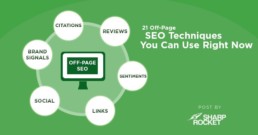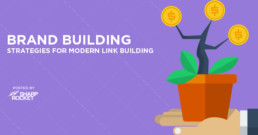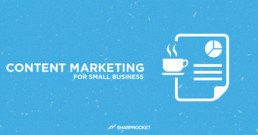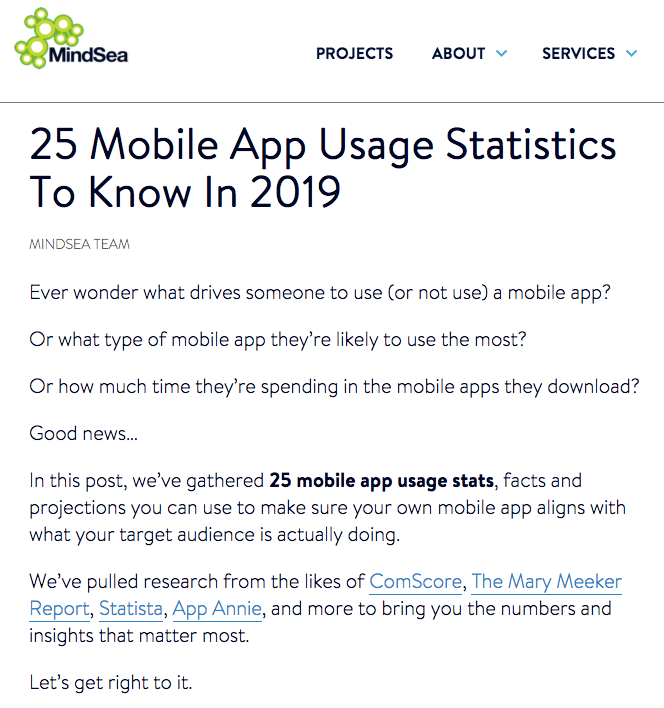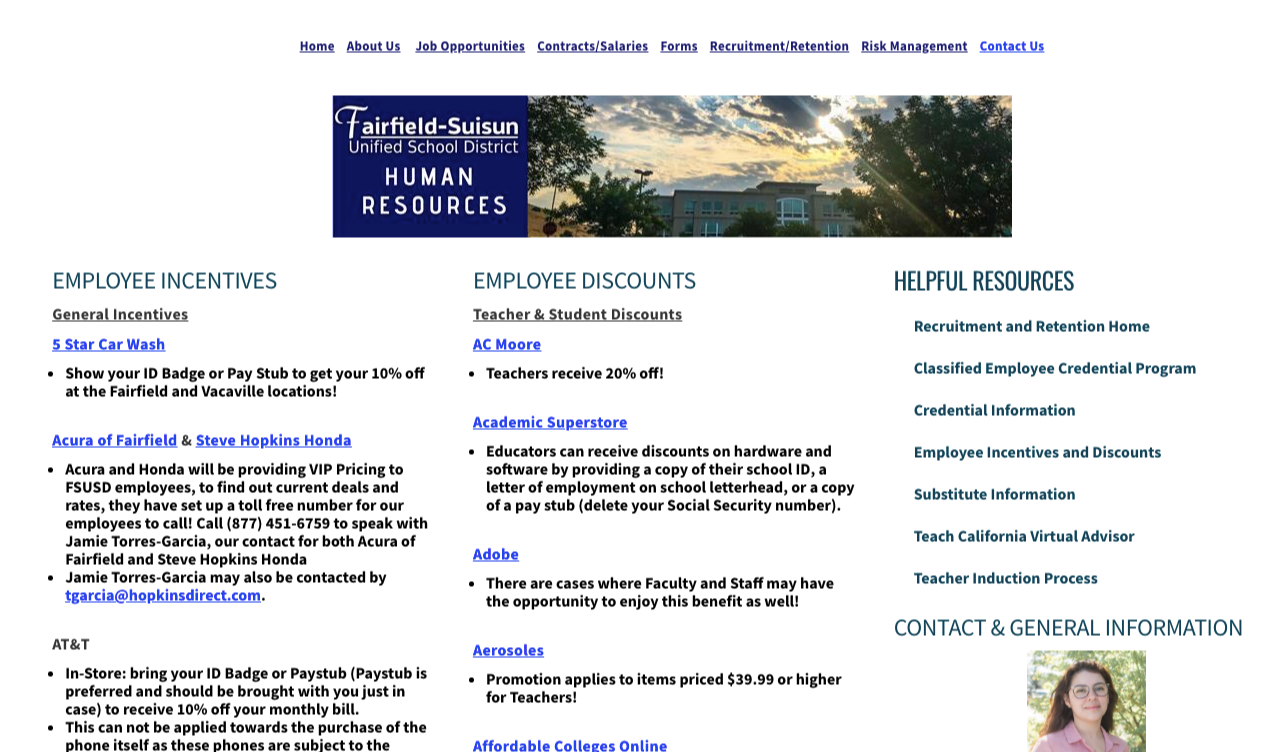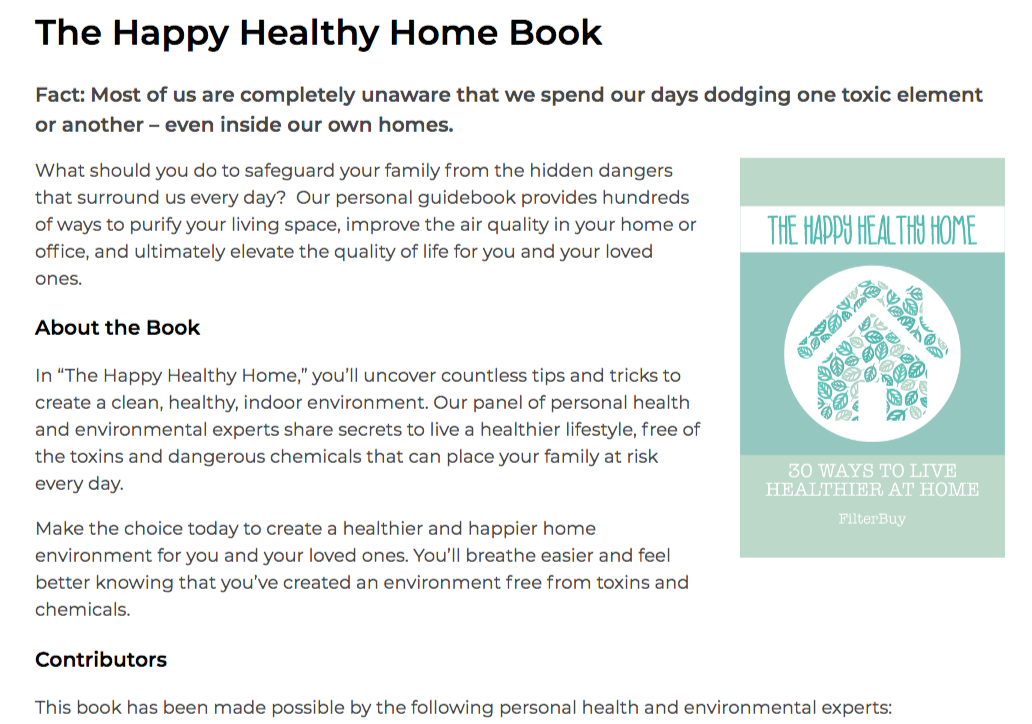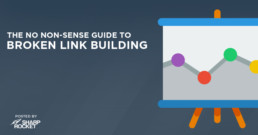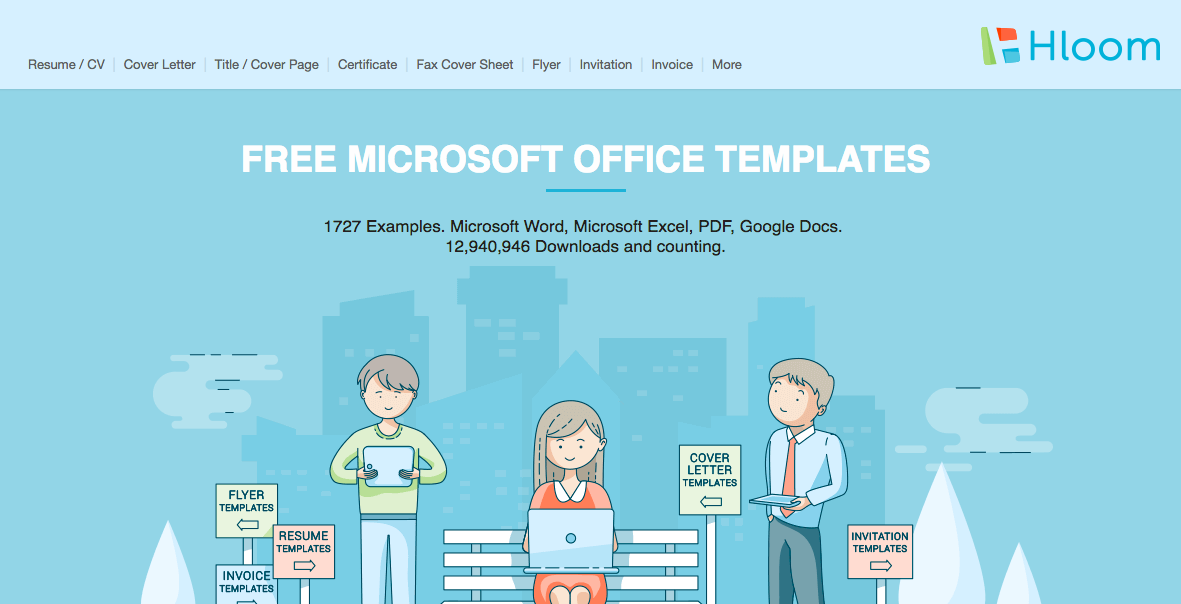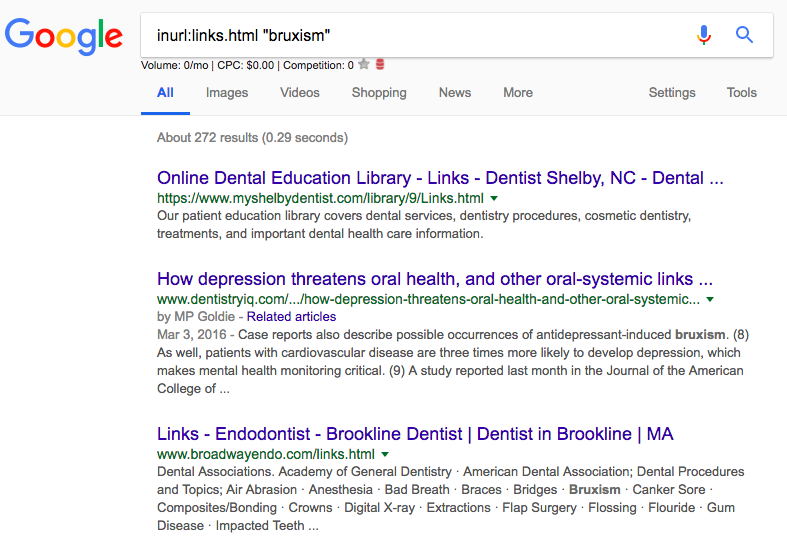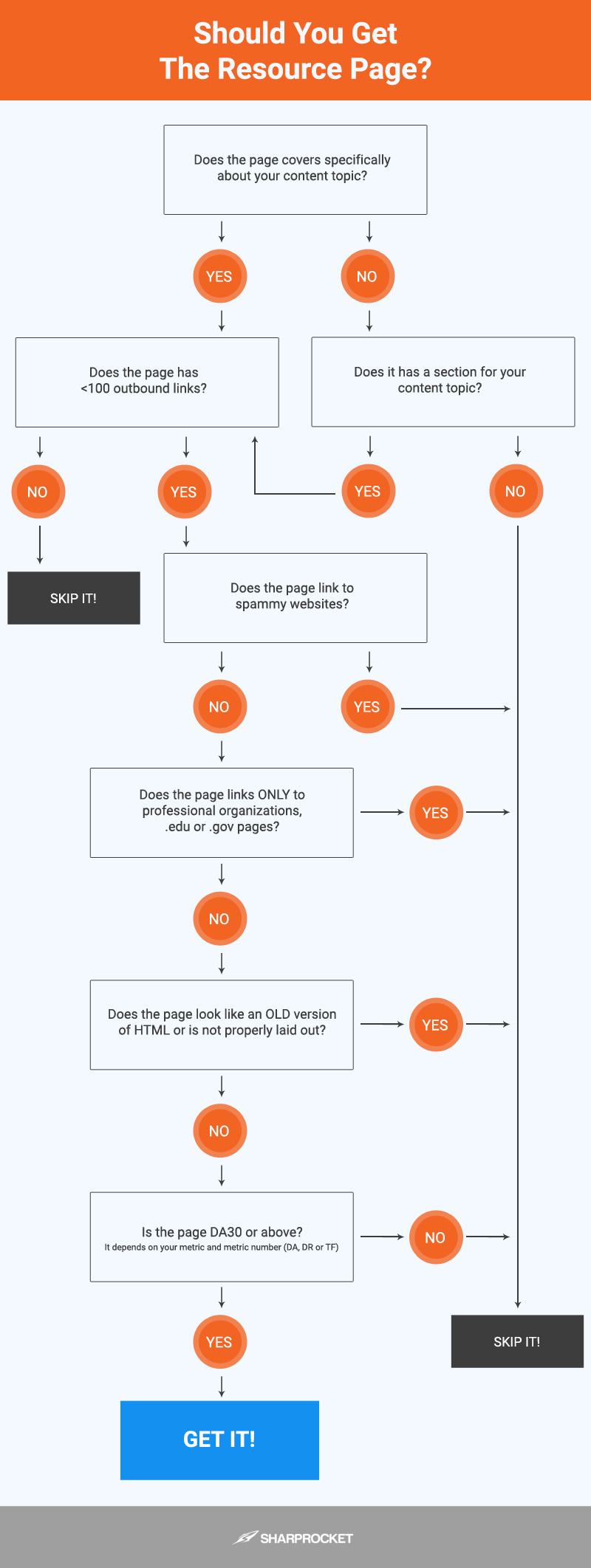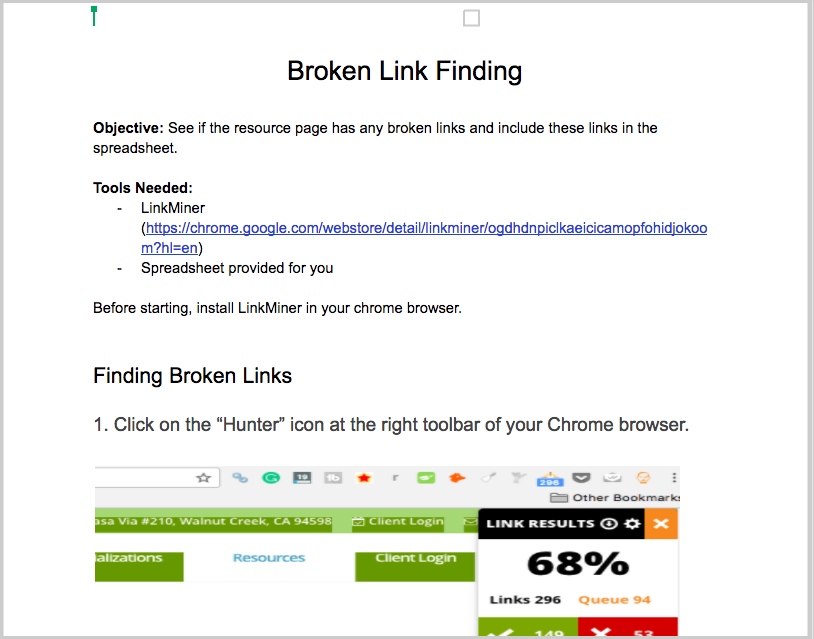Off-Page SEO: The Definitive Guide
What is off-page SEO?
Off-page SEO refers to link building and all related activities & actions focused on growing our Website popularity, happening outside of it, and therefore the name.

Aleyda Solis, Founder of Orainti
Off-page SEO to me is any kind of optimisation that takes place away from the site itself. Generation of signals from third party websites to tell Google that the thing you are optimising deserves to rank. The main part of this is obviously link building but increasingly can incorporate other things like social.

James Agate, Founder of Skyrocket Digital
Off-page SEO means doing anything from an external point of view to assist with SEO efforts. This could mean link acquisition, building mentions, using a digital PR agency, building your brand off site to have a positive impact on your websites SEO.

James Norquay, Founder of Prosperity Media
Using these principles as solid foundation, let me walk you through the 21 off-page SEO techniques you can immediately use right now for your website.
[mc4wp_form id="6921"]
21 Off-Page SEO Best Practices
1. EXPAND LINK LISTS WITH A SIMILAR CONTENT PROSPECTING TOOL
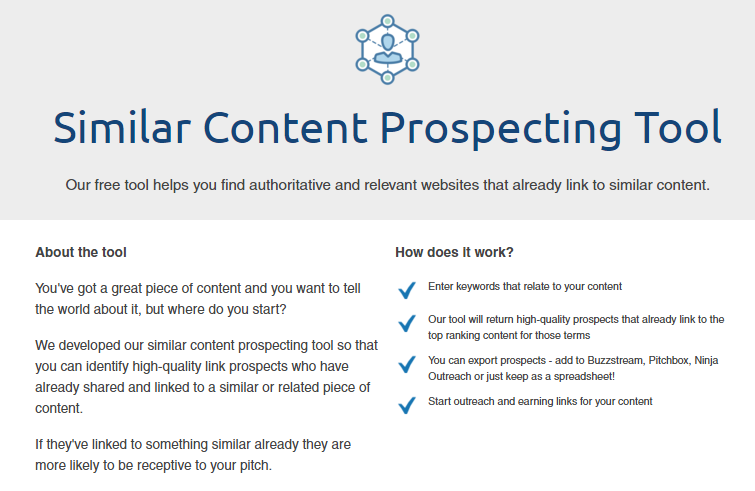
Websites that are linked to content or resource similar to an asset page published on your site are more receptive to outreach than any other link prospects primarily because of their linking history.
When they had linked to a particular page, they are likely to be interested in its similar resource and consider it for a possible linking opportunity.
Topical relevancy and higher link acquisition rates are a few notable advantages when you reached out to said link prospects.
Given this, here is how you can find these high-quality backlink sources:
STEP 1: Enter niche-specific keywords (related to your content) in Skyrocket’s Similar Content. This link building tool will automatically generate high-quality prospects that are linking to the top-ranking pages for searched keywords.

STEP 2: Export domains and list them in a Spreadsheet or you can plug them into your favorite outreach tool.
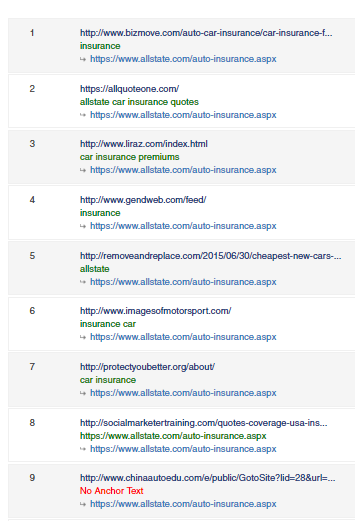
STEP 3: Reach out to webmasters and publishers of those potential linking sites and ask if they’ll be interested to look at your content piece. Here is one example of an email template that you can use, which is actually for follow-up purposes.
Hello [ NAME ],
I contacted you a few weeks ago to share a resource that I thought you may
find of interest, and you informed me about your upcoming blog/site
update. I was wondering if you’ve been successful in the update and had a
chance to review my message; a copy of which is provided below for
reference.We’ve launched a really detailed guide to [ TOPIC ] and I
thought you might be interested in seeing it - [ URL ]If you are still updating this page -
[ URL ] then perhaps our guide might
make a useful addition.Please let me know if you have any questions. And if this isn’t for you or
you’d rather I didn’t get in touch in future please let me know and I’ll
be sure not to send you any other messages.- [Your Name]
2. LEVERAGE CONTENT TEMPLATES WITH BUZZSUMO

The ability to scale content assets without sacrificing qualify differentiates average content marketers from excellent ones. A year ago, Ross Hudgens shared one strategy on how to create incredible content assets at a low cost. It is with the use of content templates.
Content templates are simple formats of successful content assets from other verticals or other brands that can potentially be replicated to your own content marketing campaigns.
Two good examples of these content templates are these posts by Hubspot about habits for hyper-productive people and habits for content marketers.
Hubspot’s content marketing team found this “habit-type” content template to be a good blog post framework. People simply want to emulate habits that make other people successful in whatever field they belong to.
Thus when you publish content like this, it easily gets traction from many people – acquiring multiple social shares and earning referential links from publishers.
How to find content templates that are likely to earn links naturally?
STEP 1: Find popular content-producing sites in your industry and use Buzzsumo to look for their most-shared content pieces.

STEP 2: Take note of all possible content formats and list them down in a Spreadsheet.
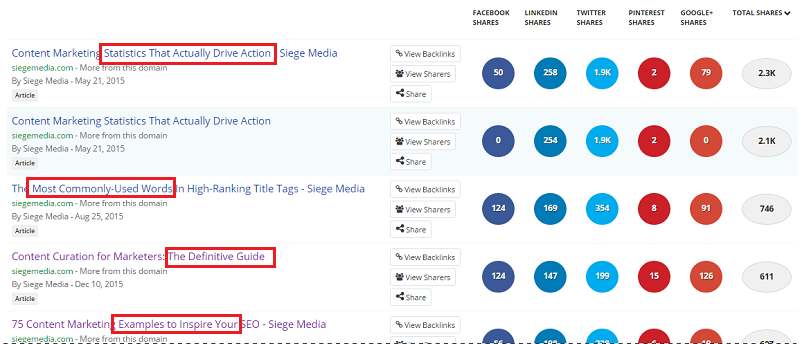
STEP 3: Create content pillars based on your preferred content formats. This would require testing but when you see results from first published content, you can replicate this to every sub-niches in your vertical (check out my definitive guide on blogger outreach).
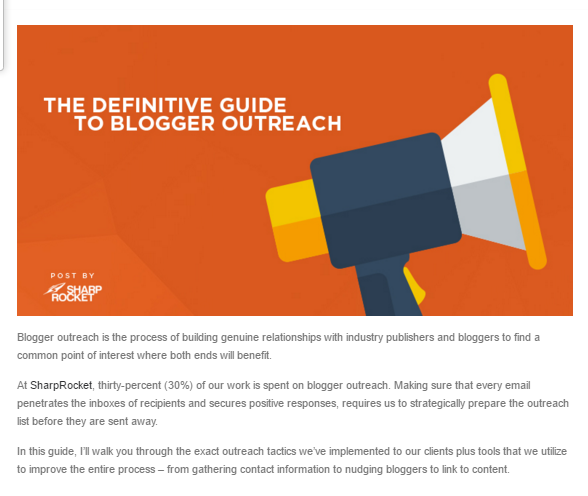
3. LINK TO INFLUENCERS WITHIN CONTENT
Though Google doesn’t count outbound links as a direct ranking factor, knowing how to properly link to relevant sources externally is still a best practice in the search industry. External linking to credible resources and useful content produced by influencers helps an initial boost of promotion to your content piece.
Maximizing this strategy is a sure way to put more eyeballs on your asset.
How to execute this properly?
STEP 1: Search for influencers in your niche whom you can easily connect with. You can use Buzzstream or a simple Google search to discover this kind of people.

STEP 2: When starting to create content, try to find relevant blog posts of influencers. You can use the search phrase, site:domain.com “keyword” or site:domain.com intitle:”keyword”. The latter search strings are more useful because it provides the most targeted results - finding pages that discuss the whole topic, not just including your keyword in one paragraph.
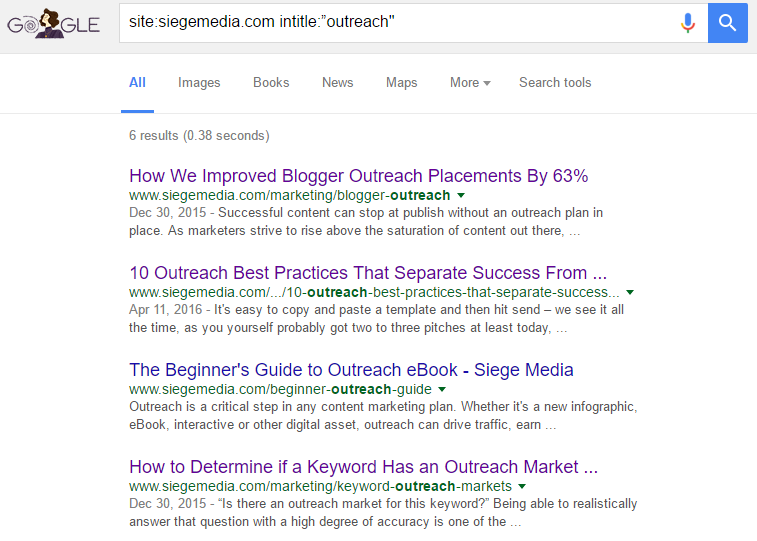
STEP 3: Once you publish your content, reach out to these influencers using direct email outreach. Results from this are either social shares or contextual links from publishers. Even if you got one social share from an influencer, this can be worth a hundred of traffic to your site.
Hi [ NAME ],
I saw your website and found that you linked to one blog post about [ TOPIC ].
Just thought that you might find my definitive guide on [ TOPIC ] also useful. It is a rich content that contains an [ DESCRIBE YOUR CONTENT ].
[ URL ]Kind regards,
[ YOUR NAME ]
4. BUILD HIGHLY-CONVERTING MICROSITES
If you’re aiming to capture small segments of your target market, one way you need to invest in is creating microsites. This method can enable your brand to build high-quality links your competitors can’t easily copy, as well as give your site more opportunities to attract potential clients/customers.
One good example of this branding strategy is how Aleyda created two microsites that provide a lot of value to the SEO community – All SEO Guidelines and The Marketer Toolbox.
Both of these sites target segmented audiences, the first one helps SEO practitioners (both in-house and agency-level) while the second one focuses more on marketers and tool creators.
Now, how can you identify your specific market segment and create a microsite out of it? Below are a few steps to get you started, but if you want to take the whole process, you can check out these posts and this guide by.
STEP 1: Go to your Google Analytics data. Look at the top-performing posts with high conversion rates.

STEP 2: Determine what market segments you can tap that aren’t going too far from your main content theme. For example, in my case, I can create microsites for link building tools and templates/checklists for link acquisition given that I’m currently offering link building services.
STEP 3: Once you choose an overall theme for your micro-site, buy your own domain name and hosting. In terms of the site’s content development, you can produce scalable content pillars like round-ups on an actionable topic, interview series, and user-generated content.
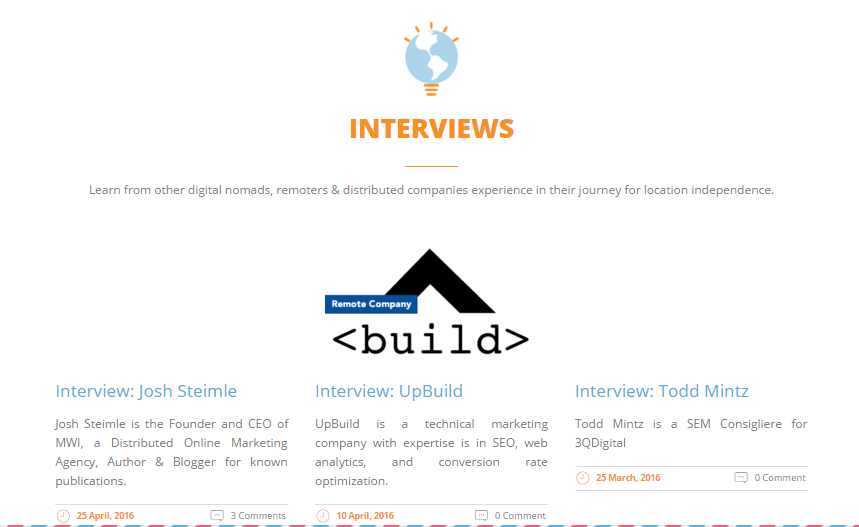
5. USE INTERVIEWS AS GUEST ENTRIES
Guest blogging has been an effective off-page SEO technique for many startup marketers building their own brands from scratch. What makes this more effective is the ability to craft solid content that isn’t a carbon copy of another piece or a revision of a blog post published on one popular blog.
The challenge in guest blogging is really writing expertly-written content that won’t just acquire a single link but will potentially get second-tier links from blogs linking to the contributed piece.
One way to be able to do this is by using interviews as guest entries for other websites. Given that answers from industry experts are most likely to be actionable, helpful, and experience-based, they can be considered as solid content for guest blogging. Here is how you can execute this process:
STEP 1: Find publishers and book authors using Google search or influencer prospecting tools.
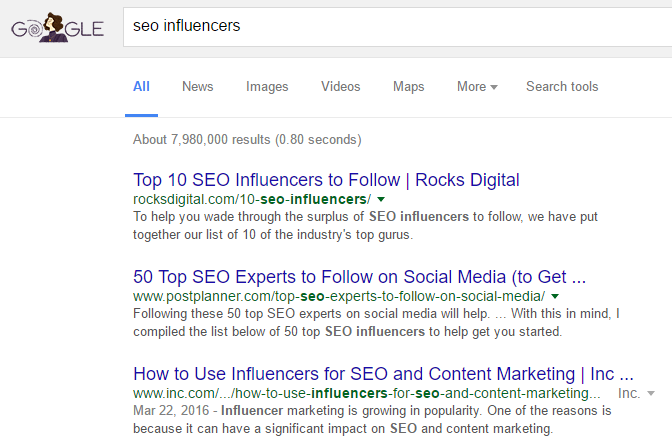
STEP 2: Reach out to these niche experts and do an interview with them. Below is an email copy you can use:
Hey [ NAME ],
I hope you're doing well.
Just want to tell you that, [ WEBMASTER NAME ] who manages the [ SITE NAME ], gave me an opportunity to guest post at [ URL ] and am planning to do a short written interview with some of the below bloggers and I was requesting if you can be one of them.
- INTERVIEWEE’S NAME 1
- INTERVIEWEE’S NAME 2
- INTERVIEWEE’S NAME 3
- INTERVIEWEE’S NAME 4
If so, I’ve attached a short written interview that you can use to share your tips or ideas.
If you’re interested in including screenshots as part of real life example, you’re welcome to do so.
The topic of discussion is [ TOPIC ]
Cheers
[ YOUR NAME ]
STEP 3: Use their answers as guest content for your target blog. Check out these examples of interview-based guest posts.
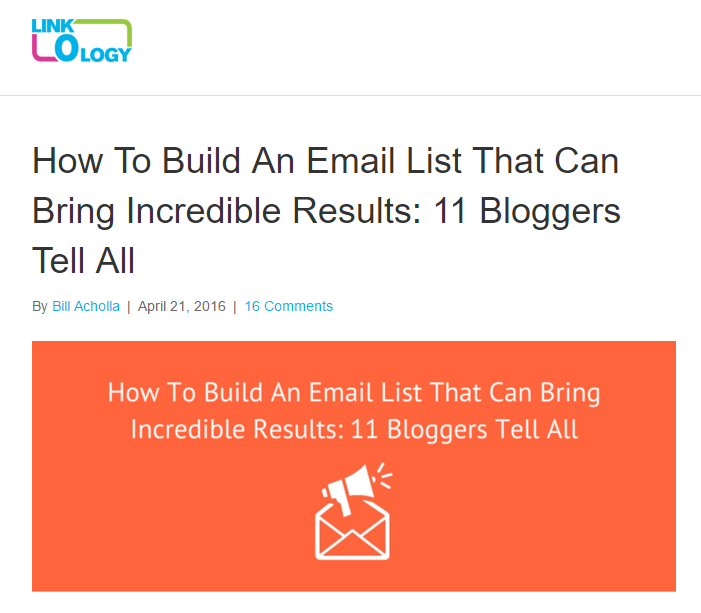
6. COLLECT LINK PROSPECTS FROM LISTPEDIA
Using social media platforms like Twitter for link prospecting is a strategic approach for link builders to find new bloggers and publishers that aren’t yet found through Google search. With this, you can expand your list of outreach targets without actually depending on search engines as your primary source of target domains.
Besides getting additional backlink sources, you’ll also be able to tap influencers that have a strong massive reach both in web publishing and social if you try using social media as your main link prospecting tool.
In other words, you get more benefits when you do outreach to them since they won’t only be linking to your content, but they’ll also share your content with their existing followers. This can allow your brand to acquiring more backlinks from their followers’ blogs as well.
You can start this by using simple Twitter searches to find bloggers in your industry. However, if you are doing bulk prospecting, you can scale the process by using Listpedia.
Listpedia is a new self-made search and creation Twitter tool that can generate massive Twitter lists relevant to a particular keyword.
Here are three steps on how to use Listpedia for link prospecting:
STEP 1: Go to Listpedia and search for a particular audience you are aiming to reach out to (e.g. personal finance, finance, or insurance).

STEP 2: Check each individual Twitter profile in the search results to see if they have their own blogs or websites.
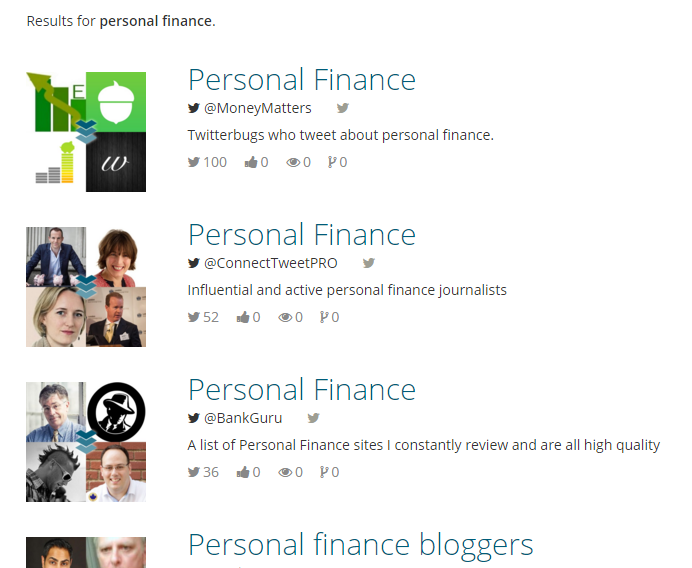
STEP 3: Once you think a particular website passes your link metrics (Ahrefs rank, DA, or Trustflow), you can include it to your outreach list, find his email address and send a pitch via email. Below is an email copy you can use:
Hey [ NAME ],
I saw your profile on Twitter while doing my research, and also saw that you are part of this Twitter list [ URL ].
Just thought that you might find my post about [ DESCRIBE YOUR CONTENT ] really useful. [ YOUR CONTENT URL ]
Have a great weekend!
All the best,
[ YOUR NAME ]
7. INCLUDE POST-PREVIEW AS ADDITIONAL PROPOSITION TO CONTENT
Creating remarkable content may require experiences and case studies from your own brand that gets people into action - after they consume the content. Case studies that take days, weeks, or even months are really time-consuming for content creators.
However, there is one way to easily add a data-based experience that won’t cost you money. That is, including data from an influencer/expert you’ve had a relationship with. Since there is a connection involved, the influencer won’t look at it like stealing his ideas as you initiate asking for permission to use his data.
I did this strategy when I wrote my old post on increasing blog traffic where I included an experience-based tip from Roel Manarang – a local-based social media marketing expert. He backed up his claim with a case study of a Facebook strategy, not even shared on his blog, at the time I inserted his technique into my blog post.
Here is how you can use post-preview in your content creation phase:
STEP 1: Identify influencers you had relationships with (grab your list from off-page SEO technique 3). Filter the influencer list by expertise these influencers have been known for (i.e. link building, off-page SEO, conversion rate optimization, etc..) and choose those you think can collaborate with you once you create your next content.

STEP 2: Reach out to influencers and ask if they’ll be interested to add some insights to your upcoming post. You can try this email outreach copy below:
Hello [ NAME ],
I know you're quite busy today. But just a quick heads-up if you're interested to contribute insights to my upcoming post about [ TOPIC ].
I would like to know if you have any experiences and tips regarding [TELL MORE ABOUT YOUR UPCOMING POST].
Let me know your thoughts.
All the best,
[ YOUR NAME ]
STEP 3: Include the influencer’s tip to your content and start to promote it to people who might like your link to your post.
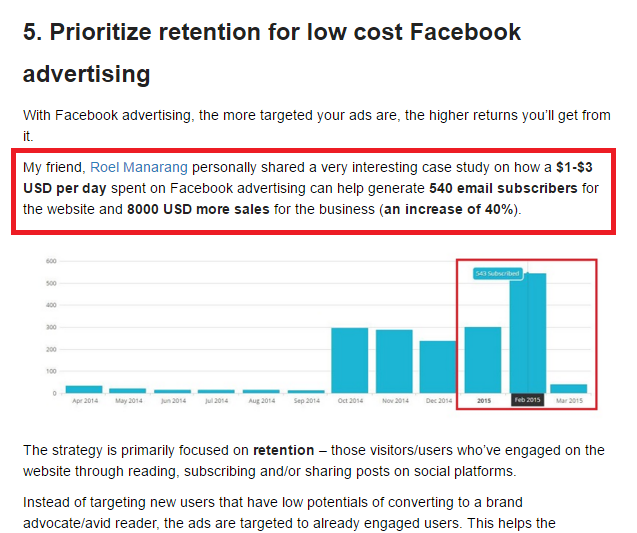
8. IMPROVE RELEVANCE WITH BRAND KEYWORD INTEGRATION
Google understands the relevance of a brand towards its connected domains in the industry sphere based on the keywords and context of each content produced in the website. Knowing this, you will create additional content based not only on the industry terms you want to rank for but on keywords you could potentially rank.
This is doable in three steps.
STEP 1: Go to Google Keyword Planner and plug in your homepage in the landing page search. You will then see a list of keywords Google considers to be relevant industry terms of your brand
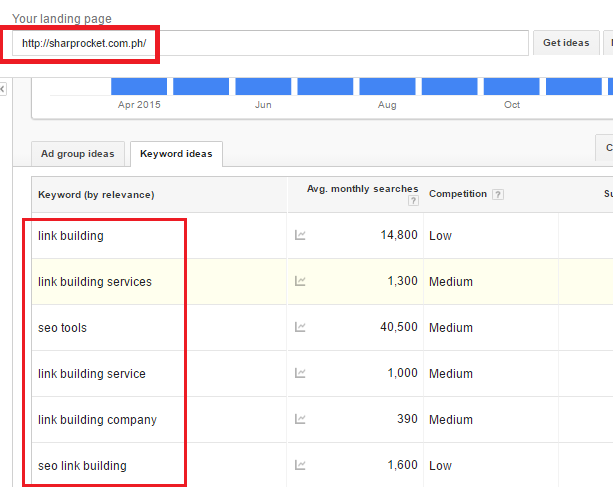
STEP 2: Choose among the list of keywords which of them you will likely target for your next content.
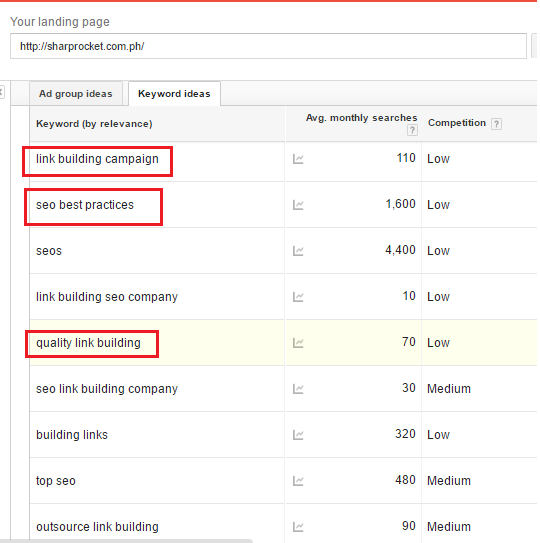
STEP 3: Include industry terms when writing your content in order to improve the LSI relevance of your website.
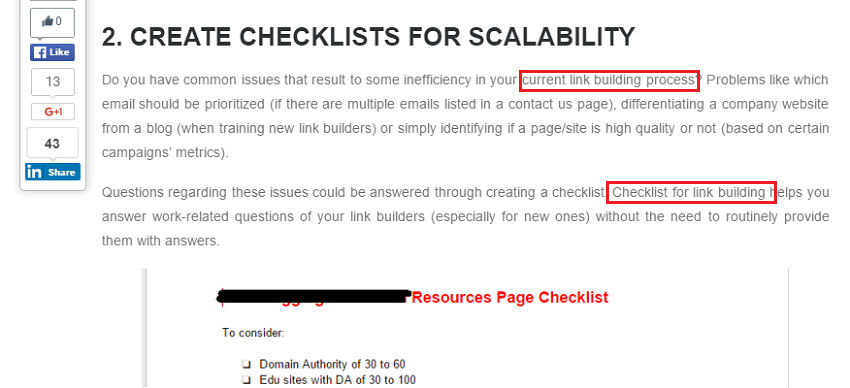
9. GIFT GIVING TO BUILD RELATIONSHIPS
Engagement marketing involves two sets of groups: those who are part of your networks and those you still need to reach out to – commonly referred to as “direct outreach”.
The good thing with direct outreach is that you don’t need to invest a huge amount of money and chunks of hours to start with. There is actually a less-costly way to effectively build relationships with influencers and authors who are part of your direct outreach.
James Norquay from Prosperity Media showed how a set of cupcakes from his client can strengthen relationships built with their brand partners.
Another example of this link relationship-building technique is when Larry Kim of Wordstream sent letters of appreciation to customers and to people who became a great part of building his brand.
Want to know how to execute a strategic approach in engagement marketing? Here are actionable tips to start an effective community engagement.
STEP 1: Identify one valuable thing you can offer to your brand followers or potential brand ambassadors.
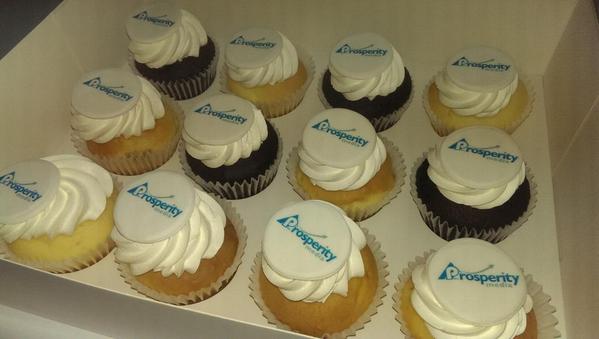
STEP 2: Think of ways on how to deliver your gift to your list of recipients. It could be through international or local shipping and/or an online transfer system if your gift is a virtual product.
STEP 3: Once the gift is released, you can track web and social mentions from influencers using BrandMentions.
For more ways to build high-quality backlinks to your website, check out this list of actionable link building strategies.
10. INVEST IN GETTING REFERENCES FROM Q&A SITES FROM REAL PEOPLE
The nature of searchers in this age of web usage is leading towards search activities in very niche-targeted search engine sites and community sites, where people would look for answers to their frequent questions from niche community sites instead of going straight to their favorite search engine tool.
Identifying these websites where a portion of your target market hangs out can allow you to acquire referential links that your competitors haven’t thought of building for their own sites.
The community-based backlink below is a good example of how powerful branding could help you semi-automate your brand’s link acquisition process. If you look closely at the answer, it is not a result of our marketing work, but from a person who trusted our expertise – Anton Shulke.
We actually did a webinar for his website and the benefit becomes mutual in the form of a link pointing to our brand.
How can you leverage branded link acquisition (off-page SEO) in community sites?
STEP 1: Create a list of outreach prospects that include your current brand followers, customers, and clients. Your brand followers could be any person you’ve built relationships with in the past either through content distribution, exchange of business ideas, or as simple as being your co-member in an offline/online niche group.
STEP 2: Look for relevant discussions that can potentially drive highly converting visitors to your site. In my above example, the keyword that I used is best SEO agency in Manila. The trick here is to use the site: search operator plus the keyword – e.g. site:quora.com “best X in Y” to generate targeted discussion pages.
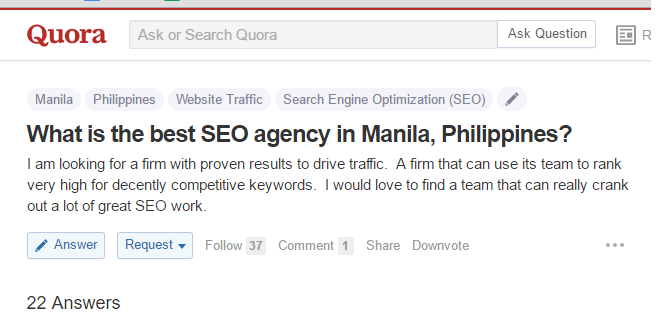
STEP 3: Reach out to your outreach prospects and ask if they can participate in the discussion. If they are your loyal customers/clients, they’ll likely give a recommendation to your brand.
OTHER USEFUL RESOURCES:
- Google’s New Review Search Option And Sentiment Analysis
- Why You Need to Find All Your NAP Variations Before Building Local Citations
11. TRACK MENTIONS FROM RELATED COINED TERMS
Link reclamation is probably one of the first initiatives when doing a strategic off-page SEO campaign for a website that has established authority in its vertical. It is because there is a higher probability of getting your first set of in-content links simply when you reach out to people who are familiar with your brand and have used your resources in their content works.
In addition to tracking mentions of your content assets, you can also do the same strategy to your competitors’ resources. There are many types of content assets you can actually track to see if there are publishers or bloggers who used your competitor’s content in bloggers’ websites but not credit their original sources.
A few examples are images created by the brand (infographics), mentions of your products, embedded Youtube videos, and other content that deserve credit in a form of links.
How to use competitor-based link reclamation strategy to your own advantage?
STEP 1: Identify the top-performing pages of your competitor’s site by using CognitiveSEO and using the number of referring domains and page authority as your performance metrics.
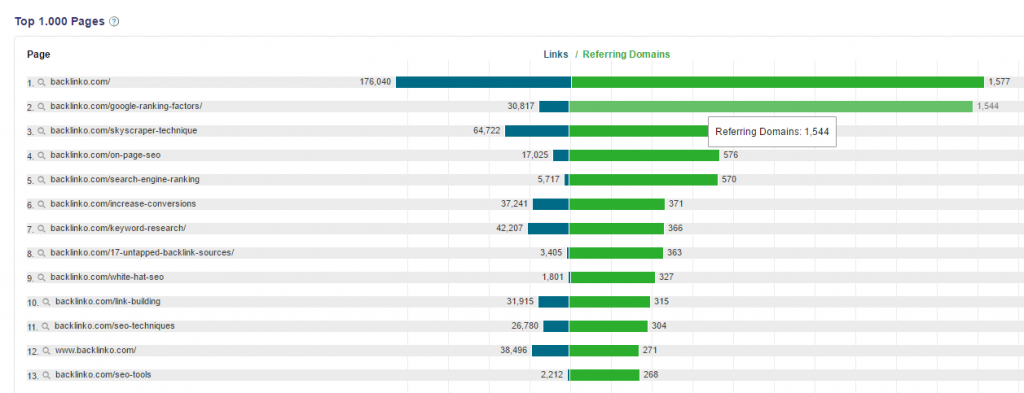
STEP 2: Track upcoming mentions of chosen resource/content of your competitor using BrandMentions. The tool will automatically notify you if there are new mentions, whether they are linked or unlinked on other content distributing sites.
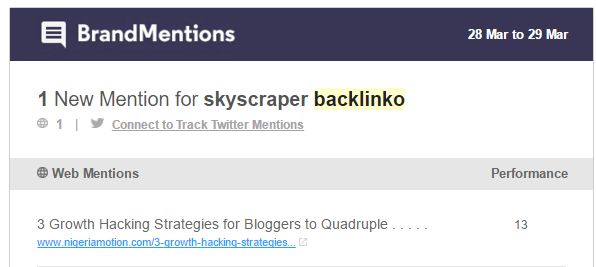
STEP 3: Find a resource of yours that is similar to your competitor’s content. Reach out to the blogger and pitch him showing your related content. You don’t need to ask for a link, it will be automatically given once they perceive your content as valuable.
12. REVERSE IMAGE SEARCH FOR LINK PROSPECTING
Reverse image search is an effective off-page SEO practice that helps link building practitioners to find out blogs where the image has been embedded. If the blog is linked to a wrong image source, it is best to ask him for the proper credit.
Though this off-page SEO technique is mainly used for link reclamation, you actually apply this same strategy to your link prospecting process. How?
STEP 1: Find a competing visual asset in your industry. It could be the infographic you tried to post on your blog that gained massive social shares or a generic image created by an expert in your field. You can use a simple Google image search like “infographic” “industry” to find these popular visual content assets.
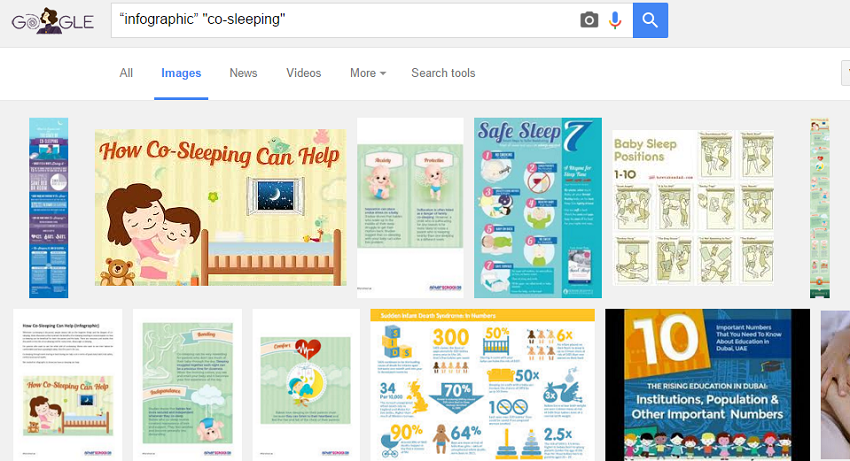
STEP 2: Grab URLs of these visual assets and plug in your favorite reverse image tool to find websites that embedded them.

STEP 3: Add those websites in your spreadsheet as your additional backlink prospects. Reach out to them with a unique proposition, not necessarily for the purpose of image link reclamation.
13. COLLABORATE WITH INFLUENCERS/AUTHORS
Aligning brand strategy with your off-page SEO process enables you to strongly build relationships not only with like-minded bloggers but with entities in the same vertical.
This helps your brand to position itself on the web and on its specific field by being perceived as a credible and trustworthy website by search engines and by target searchers – because links coming from trusted websites are good indicators of a site’s trustworthiness.
One simple branding approach is collaborating with niche influencers and authors for content creation. Given that they had industry experience in web publishing and a massive audience following, touching base with them assures the quality of a content asset and a more effective content promotion than doing it alone.
How does influencer outreach start?
STEP 1: Find influencers and authors in your niche who’ll be interested in a content partnership. Do a Google search for “guest post by” [ industry ] to search for this kind of personality.

STEP 2: Identity what kind of mutual benefit you can offer to your outreach prospects. It could be asking them to answer a set of interview questions, to be compiled and published on your blog, or cross-publishing content pieces – i.e. embedding your infographic to his blog in exchange for a guest article on your site.
One pro tip here is to actually look at your prospect’s latest articles and see what type of content they usually publish and in conjunction with your content publishing – what type of asset do you want to test out on your website.
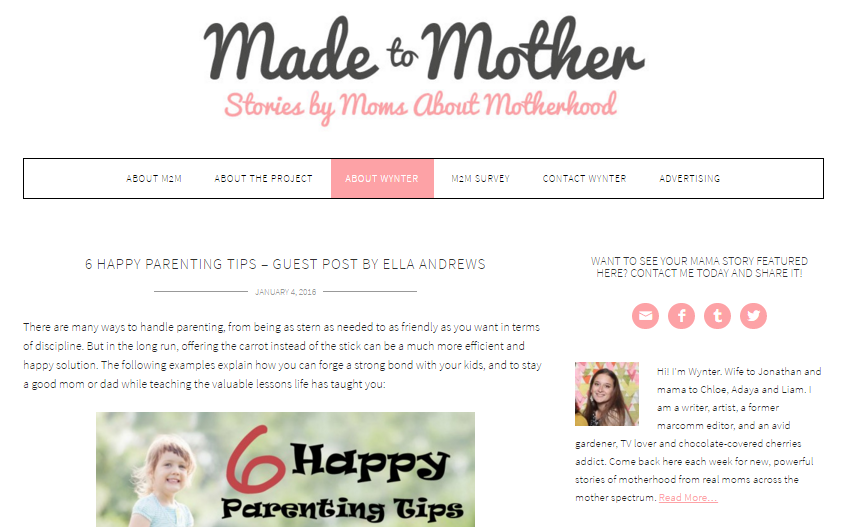
STEP 3: Send straightforward pitches with strong value propositions to capture their interests
Useful Resource: 50+ Ways To Increase Website Traffic (Roundup)
14. FIND HIGHLY CONVERTING OUTREACH PROSPECTS IN MOMENT QUERIES
Targeting high-profile bloggers who are likely to convert into linkers is one main objective of a blogger outreach campaign. But that’s going to be really tough if you don’t know how to find them.
Searching the web for potential linkers is one initiative you can start in your link prospecting process. However, your search phrase (keywords plus search operators) should be as very specific as possible to get the most refined results from search engines.
One off-page SEO technique to be very specific with search pages as well as to increase response and link acquisition rates in your outreach is to actually use in-moment options in Google search.
This means that pages that will appear in search results are assured to be published within the past hour or past 24 hours from the moment of search.
How to start with this link prospecting technique:
STEP 1: Do a Google search for your preferred search phrases.
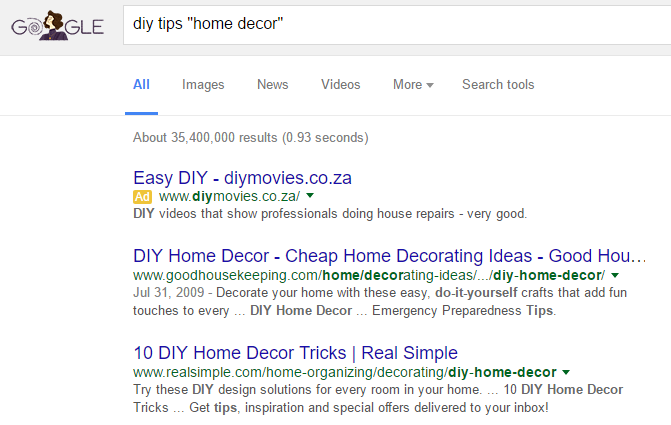
STEP 2: Filter the results by date of publishing (Search – Date – hour or 24 hours).
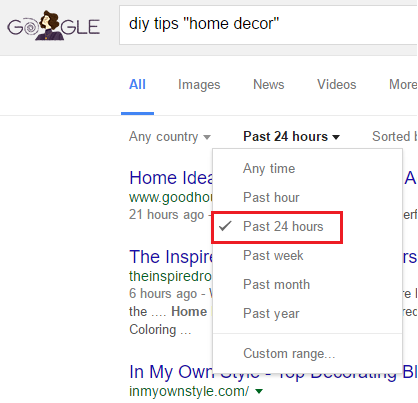
STEP 3: Gather those pages that are relevant to your niche and put them down in a list. Qualify them based on your link metrics and reach out to them afterward.
15. USE LONGER STRINGS FOR HIGHER CLICKS FROM LINKS
Links have been a top-ranking signal in search today and this has been proven many times - see these posts at SEOAuv about link importance and this experiment on Moz on how long links can influence rankings).
Links help websites rank in organic search. This is unarguably true. However, many marketers forget other objectives of links like driving visitors to a linked page. If it does generate visits, acquiring links can also become a very strategic approach to increase followers, subscribers, and brand advocates.
If you are distributing content to other blogs – i.e. contributing a guest article or providing answers to interview questions, make sure you only add niche-specific resources to your contributed piece. If the topic is email list building, don’t add any pure on-page article to content unless it is contextually relevant.
State the value of a referenced resource by giving readers a preview of the information the content includes. The best way is to actually use longer strings to describe what the content is all about.
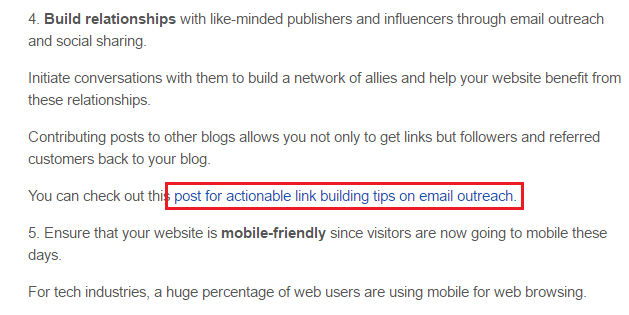
16. ACQUIRE NEWSLETTER LINKS
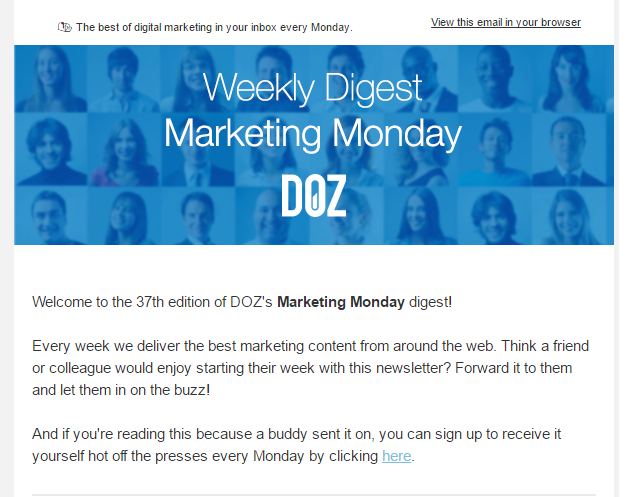
Email newsletters are good sources of information from publishers. This information could either be a curated list of links from top articles of the week or a preview of a new blog post posted on the hosted blog.
Getting featured in these newsletters is a very powerful branding/marketing strategy, as it allows your brand to distribute its own content massively to a different audience which will also help you increase your existing followers if you absorb active social sharers from other blogs.
Eventually, when these followers are fascinated with your blog content, they will eventually be your brand advocates who might be interested in linking to your content assets from their own websites and social profiles.
That’s why identifying newsletters that allow external linking to other relevant sources is a huge advantage for marketers. Exclusive feature in newsletters becomes a profitable off-page technique nowadays.
Follow this simple step-by-step guide to get featured in topical newsletters:
STEP 1: Create a list of blogs that feature top resources in newsletters on a monthly, weekly, or daily basis. You can also check out your current list of outreach prospects to find newsletter-featuring websites.
Once you’re done with the list, take note of how periodically these blogs send emails to their subscribers by looking at some obvious statements on their available opt-in or landing pages on their websites.
STEP 2: Subscribe to these blogs’ email lists and know what kind of resources these newsletters usually link out to (identify similarities in form, length, and theme).
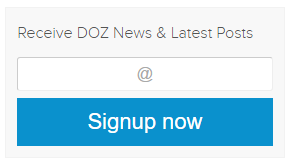
STEP 3: Constantly provide actionable and useful content on your blog to build a strong readership following and to get recommendations to be featured in other blogs’ newsletters. If you are not getting any exclusive email feature after months of content publishing, you can try reaching out to publishers in your earlier contact list and ask if they are interested to see a new user guide or resource.
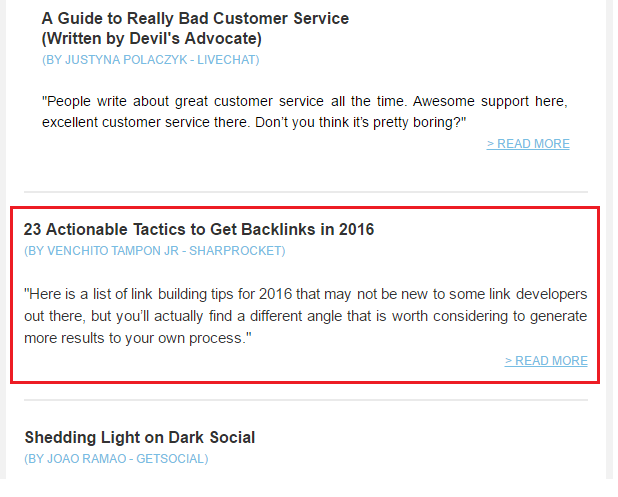
17. ADJUST REFERRAL COMMISSION RATE FOR AUTHORITY BLOGGERS

Relationship building matters in online marketing as it helps you build a strong following base that is capable of introducing your content to new readers, who might actually be your potential linkers.
Bloggers, especially those who are professionals, are part of a market segment that has the highest response rate among all online users simply because of their availability and full-time access to the web.
Building relationships with these bloggers allow you to dominate a particular part of your market segment, given that their followers could also connect with you for different forms of partnership. This is a compounding effect to your branding campaign since you will get a double portion of the market – your target bloggers and their followers as well.
The best way to initiate this off-page SEO technique is to offer an affiliate program or a referral commission system to attract bloggers in reviewing your products or services. Here are some steps you can follow through:
STEP 1: Create a list of bloggers who might be interested to write a review about your product/service or might share some stories and insights with your offering.
STEP 2: Segment your list of bloggers based on their social following base (Twitter followers), authority, and their websites’ factors (i.e. referring domains, domain authority, estimated organic traffic in SEMRush).
You can also add the format of content they usually produce on their website. If they can produce more than one – i.e. articles and webinars/videos/podcasts, it’s a good sign that they can engage their audience with different content types, which is very important in retaining the interests of your target visitors while consuming your product/service review.
STEP 3: Prioritize reaching out to authority bloggers. Offer them a higher commission rate so you can easily entice them to write a review about your offering. You can also make cross-publishing an additional value proposition in your outreach. The idea here is to make the off-page SEO strategy beneficial for both the blogger and your brand.
For example, your brand will get an additional following base and potential customers from the product/service review and the blogger will also have the advantage of co-branding himself by publishing an article to your brand’s blog and adding it to his portfolio or about page (as featured in….).
18. GET OUTREACH DETAILS FROM CLEARBIT
Finding a person’s name and email address is the initial phase in link building outreach. This is where most of your outreach initiatives will depend on given that if you find wrong contact details, obviously your pitches won’t be taken to the right place.
When finding outreach prospect’s personal details, it’s very important to use effective web-based tools such as Clearbit. I personally use Clearbit as an alternative tool for Rapportive because the product is capable of giving you the free email address of the person you’re contacting, not only validating it if it’s actually working.
How to use Clearbit for initial pitch:
STEP 1: Install Clearbit to your Gmail Chrome Extension.

STEP 2: Click “Connect” link at the upper right side of Gmail and choose “find an email”.
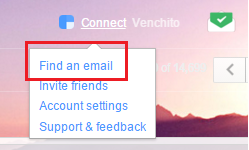
STEP 3: Type in the homepage URL of the site you’re extracting the email address from. The tool will automatically provide names of people working for the company and/or are included in the website. Choose the person you’d like to connect with.

19. COMMENT-BASED LINK PROSPECTING
Link prospecting is the initial phase in link building where you’ll start to find possible link targets from verticals that are relevant to your website. This is also where your entire link acquisition campaign will depend on, as this initiates the process and helps you identify what particular methods you’ll be performing to acquire links from your target backlink prospects.
Creativity matters in link prospecting since you have to choose the right keywords that will be able to generate refined page results in search engines.
One off-page SEO tactic we’ve been using for our link research campaigns for our clients that are very effective in providing high-quality blogs is adding the number of comments to a specific link prospecting phrase. Here is how you can exactly do it:
STEP 1: Add comment plus number to your prospect keywords (“comments(8)” “keyword”) and generate results on search.
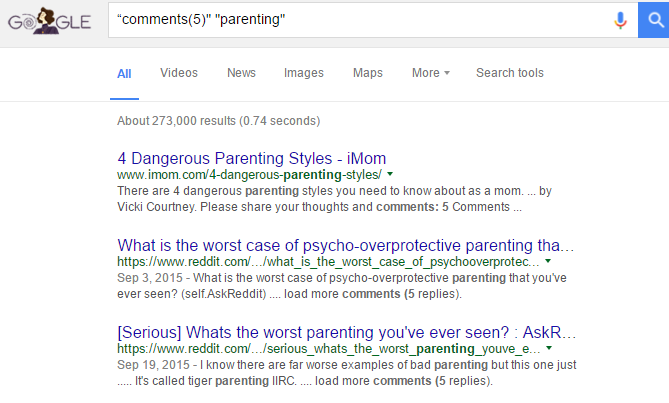
STEP 2: Qualify results based on your brand’s link metrics. Discover new backlink opportunities by checking links inserted in blog’s comments.
STEP 3: Try using the following comment-based search phrases to collect more backlink targets:
- “disqus” “keyword”
- “commentluv” “keyword”
- “notify me of follow up comments” “keyword”
20. CREATE LOCAL NICHE PROFILES
The ability to dominate a market segment, particularly if you are a local brand, highly depends on the brand awareness you build in your local community, whether offline or online.
Local link building nowadays is leading towards partnerships with local organizations and institutions as well as really getting into the minds of your customers (mindshare), which is a solid combination of an off-page SEO strategy that can certainly impact your lead generation process.
One easy way, but mostly overlooked off-page SEO technique in building local links is creating niche profiles.
I’ve noticed this recently when we had a vacation last month that instead of searching in Google for the best restaurants located near our vacation place, we go straight to a popular local website that features nearby restaurants and food stores – Zomato (which is actually a recommendation of one of our friends).
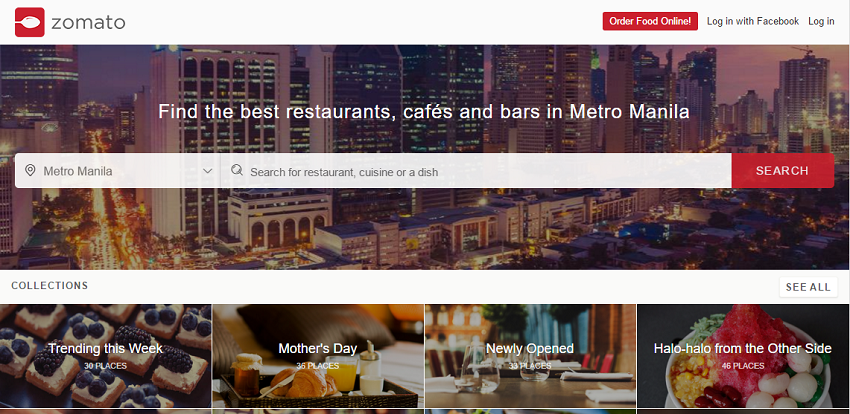
Having said that, creating local brand profiles that are targeted to an industry you’re trying to promote your products/services to, is a handy technique you’ll generate high returns from your marketing efforts.
Other Useful Resources:
21. STRONG BRAND MESSAGING
Brand building is the new link building and off-page SEO strategy in digital marketing today, given that when brands become true to their core values, messaging and personalities, it becomes easy for them to penetrate and dominate their target audiences.
There are many ways to send a strong brand messaging without actually hard-selling your products/services, below are some steps you can apply:
- Identify your brand’s core competence, to be able to know where you would put most of your efforts.
- Invest in creating comprehensive resources that will give the best answers to commonly-asked questions in your industry.
- Provides satisfaction and excellence to existing customers or clients so you'll acquire hard-to-built links that your competitors can't easily copy (see this link we've earned recently).
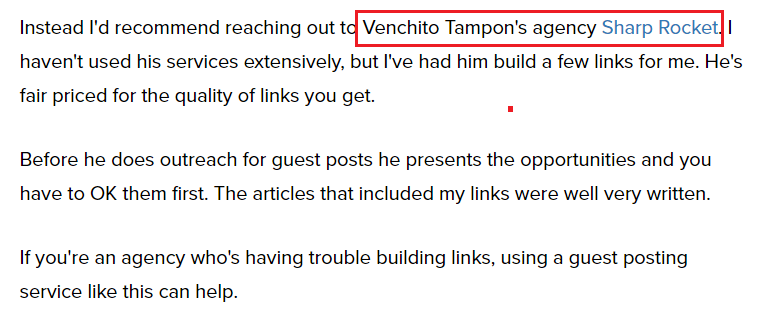
Brand Building Strategies for Modern Day Link Building
Brand building is the new link building.
Keyword-centric link building is long gone. Focusing on a large percentage of exact match anchor text usage on inbound links will do more harm than good for your website.
The way to win in search nowadays is to start thinking brand-first.
Over the years, search engines and users favor brands that have a strong presence online. Think of a product you need right now and remember a brand that sells a kind of it.
The long-term effects of building your brand through links are overwhelming. It's not instantaneous but can illustrate a slow yet gradual increase of benefits as soon as the leverage starts kicking in (think link building flywheel).

For small websites with inadequate size, budget, and resources to win over their competitors, the only way to strengthen their brands is to build the right types of links.
 Below are four strategies to effectively help you with your link building campaigns that aim to build your brand.
Below are four strategies to effectively help you with your link building campaigns that aim to build your brand.
1. Invest In Big Content Assets
Publishing content assets that are big enough to cut through the noise requires both resources and creativity. If you don't have the former requirement, double down on the latter - creativity.
Start by identifying topics that are frequently searched by people in your industry.
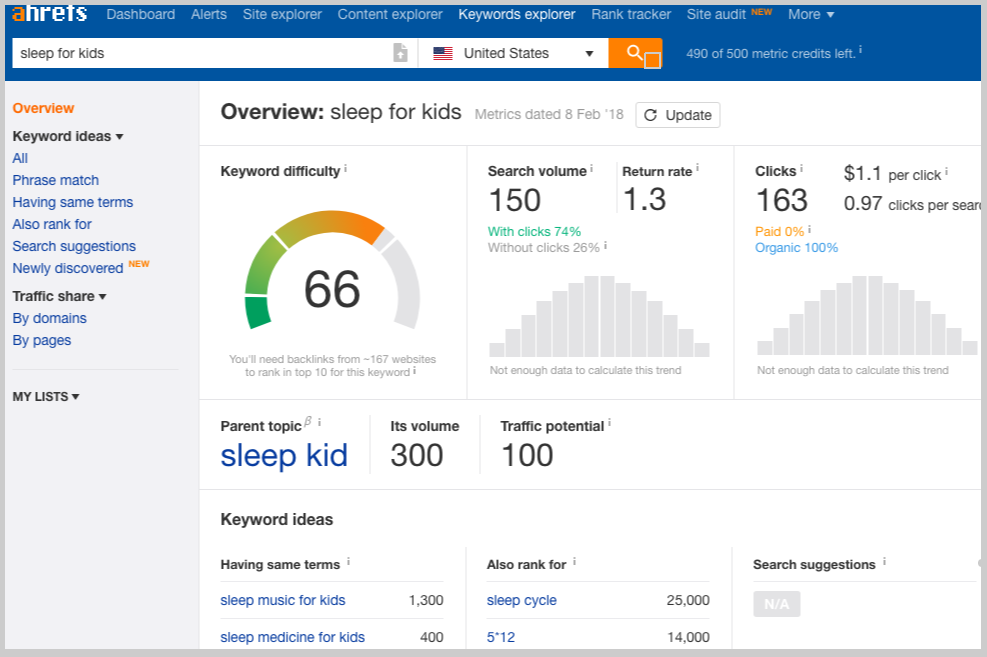
Ensure that there's a substantial amount of pages linking to the pages ranking in your target keyword. This guarantees that there's an audience of publishers that might possibly link to your content asset when you reach out to them.
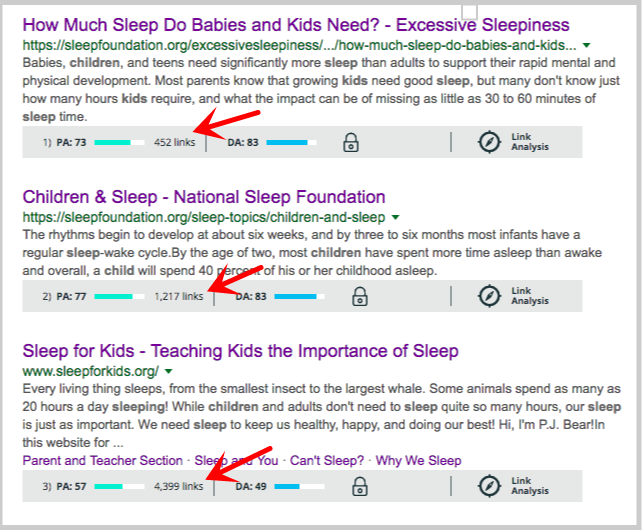
Pro-tip: Observe niche websites that are focused on a particular topic and are targeted to a specific audience.
For example, this website is particularly centered on providing information to parents and teachers on the importance of sleep for kids and how to get them to sleep better
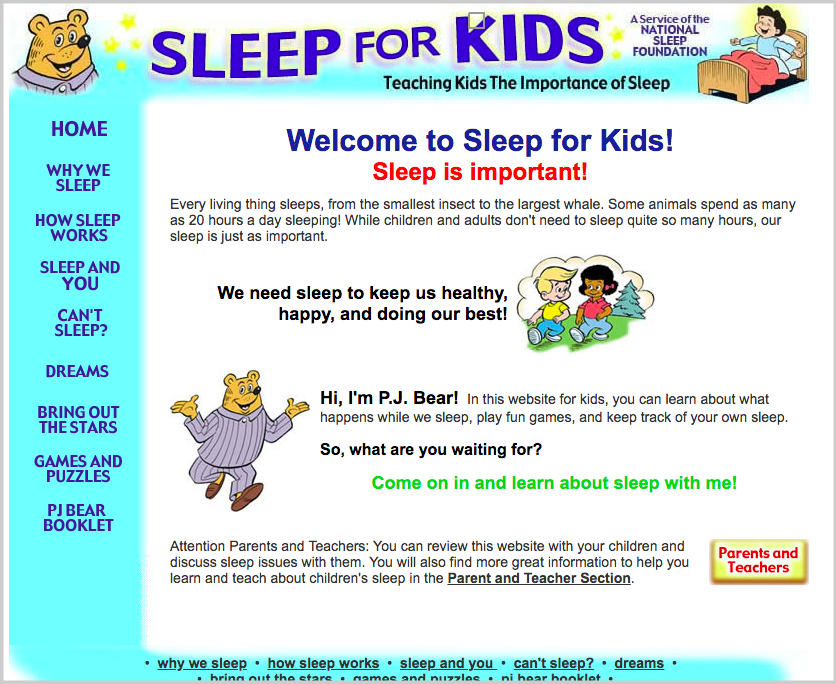
A couple of pages have been published on the site as well that may seem to be better to consume if they are on a single page (on a big content piece).

So, we've created comprehensive content on the topic - encompassing all big points covered on the website as well as topics we may have to incorporate that are not included yet in the original source.
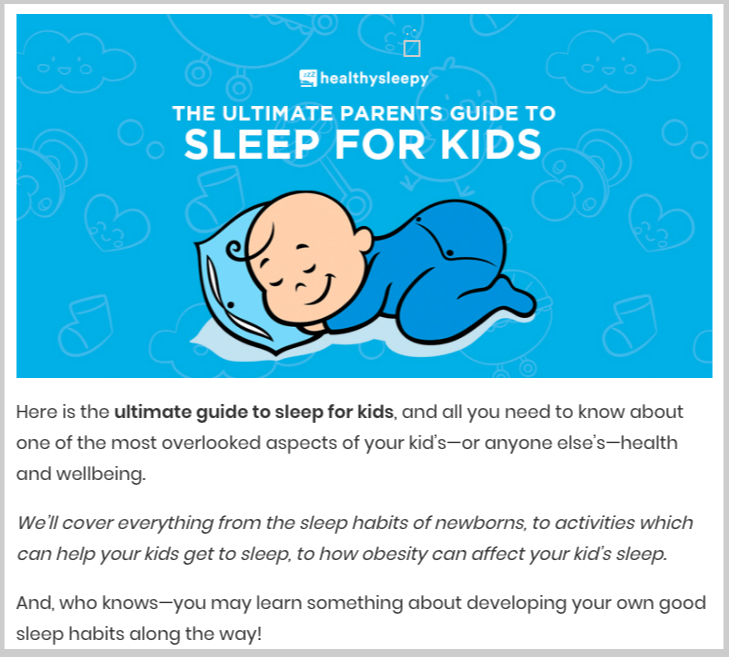
It's also important to identify how to position your content asset as a differentiator in your industry by including content types your competitors haven't built yet.
For example, the sleep sheet page I've found can be best turned into an infographic - making it easily consumable by the audience.
We've created one for that.
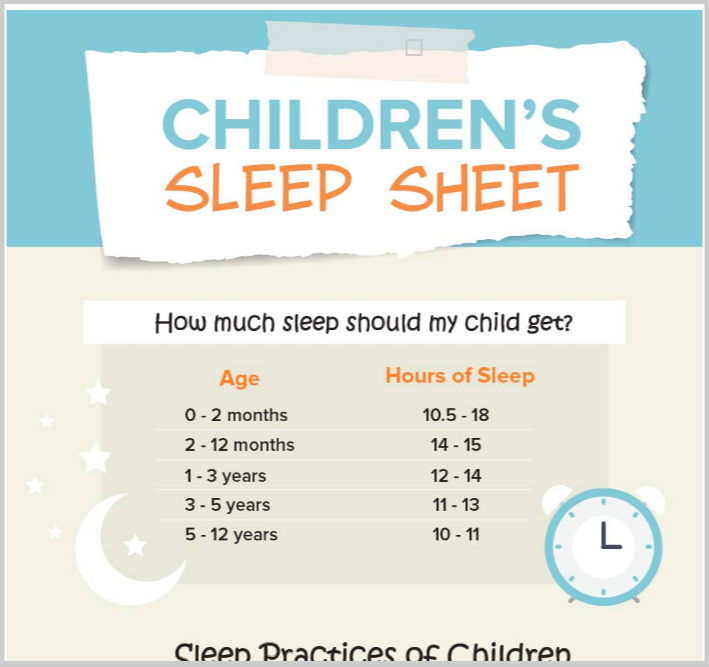
And we gave credit to where it is due.
Add table:
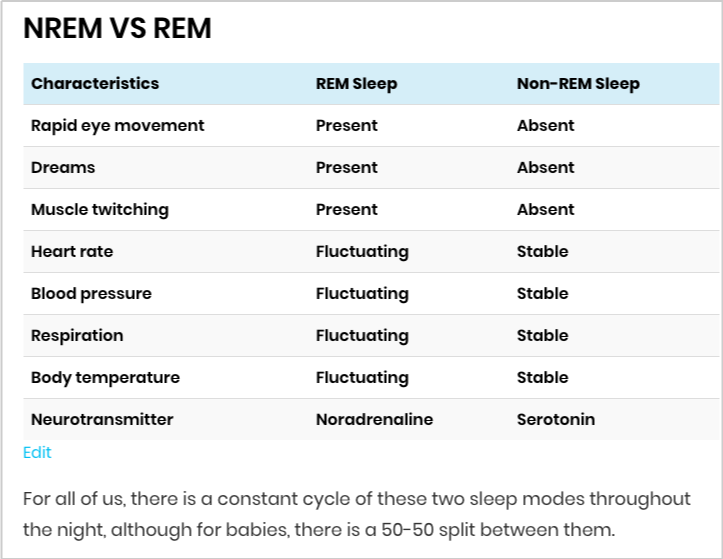
Embed videos:
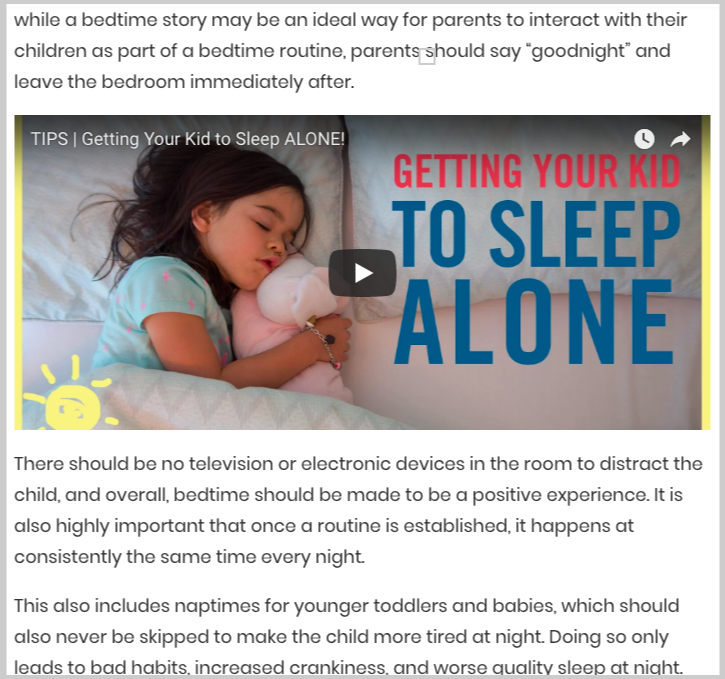
Always remember in creating big content assets:
Treat your content as a product.
Like a product, before your content asset goes out to the world, you tested it for quality assurance. You may want to check out this content quality checklist from Siegemedia to guide you with the post-content creation phase.
Start reaching out to websites linking to the niche website and get high-quality contextual links:


Other Useful Resource:
10X Content Ideation and Creation Process
2. Be Missional In Your Outreach
In their latest content trends study, Buzzsumo shows that majority of content published online gets zero backlinks and no social shares.
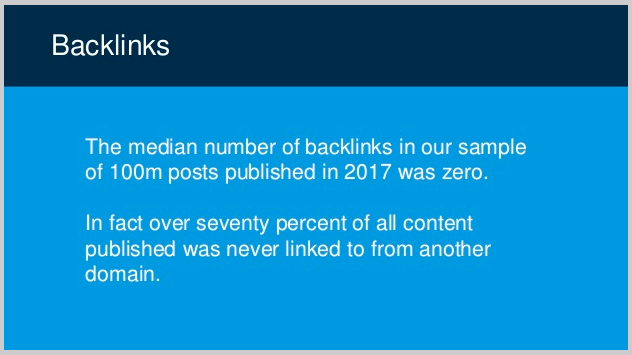
That's a harsh reality, but it's true.
It's easy to create content. But the hardest part is acquiring links and social shares to it.
Just like a product, the market decides if your content is good enough or not.
To break that content promotion anxiety, one has to come up with an effective approach.
Years ago, I stumbled upon the idea of mission-based marketing at CitationLabs. It speaks about identifying a mission in content creation and outreach.
Primarily, a mission can impact your content marketing campaign in so many ways:
- It creates a genuine purpose.
- It enables buy-in from influencers and experts in a meaningful way.
- It justifies sudden existence in someone's inbox.
When that happens, it's easier to execute parts of your outreach campaign, such as:
- Identifying potential linkers to your content (linkeratis)
- Crafting email templates that get an above-average email open rate
- Engaging publishers/webmasters/link-curators that reciprocate your actions in the end.
Let's dive in a little bit and see how the mission plays a vital role in each one above.
Identify Potential Linkers
There is no actual mission if there is no target people to whom a special purpose is catered.
With my earlier example, our main target audience is parents who're having a hard time getting their kids' sleep. We could target both parents and teachers (on how to teach the importance of sleep), which of course could expand our reach - more link opportunities!) but that would deviate from our focus mission from the very start.
By having a clear target audience, we were able to populate our initial list of link opportunities by reverse engineering similar content assets.
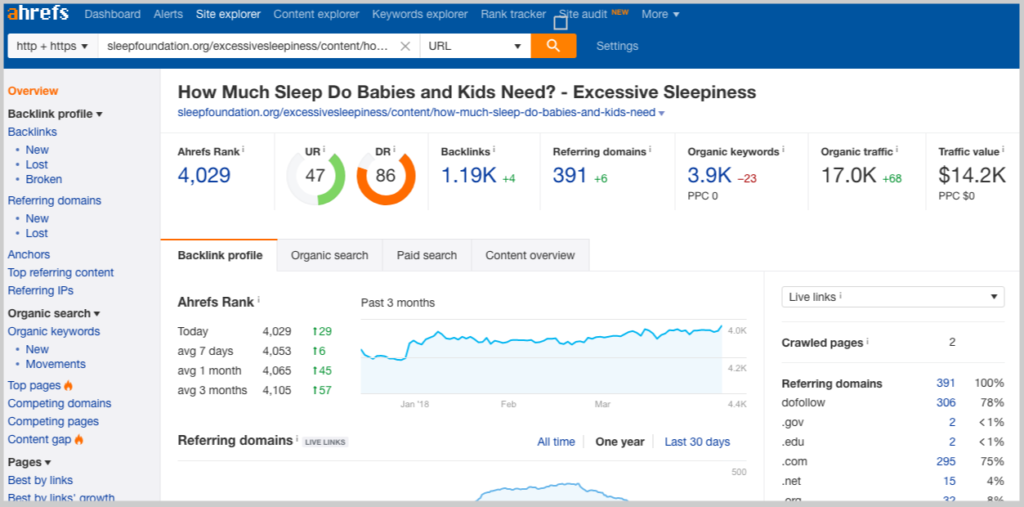
Searching deeper, we've found out pages linking to those who've linked to competitors' assets.
Crafting Email Templates
By putting mission upfront in your outreach, it brings excitement and passion in crafting your email messages given that you're thinking of how to get buy-in from outreach prospects to your purpose.
Clearly define ways on how other people (webmasters, link curators, bloggers, publishers), can contribute to the cause on your initial pitch. Your subject line and the first sentence of the email should encourage collaboration.
Through this, they (publishers) can help you in so many ways, such as:
- Providing suggestions and feedback to your content asset
- Connecting you with any of the influencers/experts within their organizations
- Sharing your content piece through other channels (social media, email, etc..) that are aside from linking to your page
- Contributing data insights that can improve your existing content piece (e.g. calendar, graph, directory, list)
Getting your outreach prospects to buy into your mission is one of the best ways to naturally attract links to your website.
Engaging Outreach Prospects
Bringing value upfront differentiates you from the pack of people sending off link requests all the time.
For example, if you practice broken link building, when you elicit responses from webmasters after you've told about their link errors on their resource pages, you immediately suggest pages (including yours) as replacements to their defunct links.
One approach we've found to be highly effective in helping webmasters fix their links is to look for the best replacements for each broken link.
There are three things that we normally suggest to them as replacements.
A. New page (redirected page)
By using the advanced search operator "site:domain", we look for the new page where the old information is now placed - which is published on the same website.
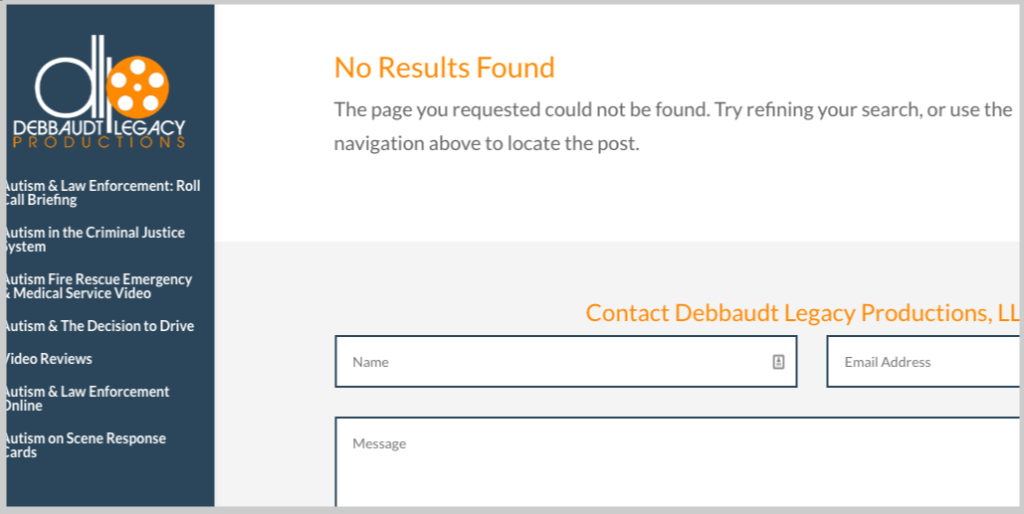
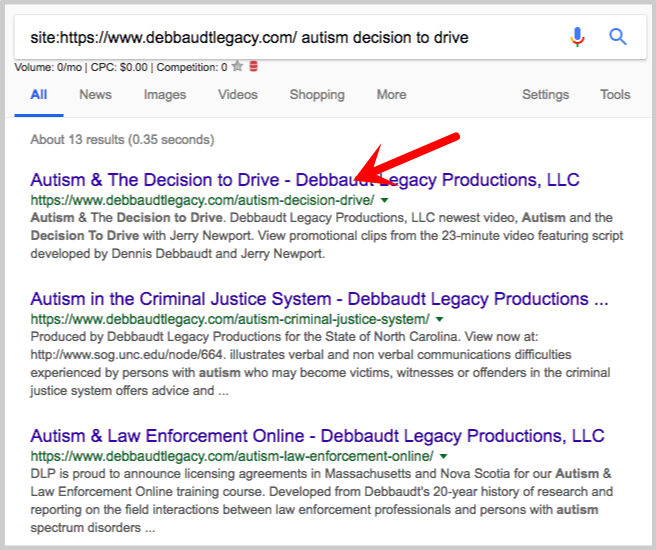
In some cases, the new page is a redirected new website where the webmaster has transferred all details of the original information.
B. Homepage
If the old information isn't published anywhere on the website (i.e. a new page) or it couldn't be seen on other sites (or new website), the next best replacement is their homepage.

C. Remove the link
There are broken links that are non-evergreen (i.e. news, article, pdf), of which the homepage is not a good replacement - the best suggestion to the webmaster is to actually remove the link.
For a more detailed guide on how to find the best replacements for broken links, you can check out my older post on broken link replacements.
3. Collaborate With Influencers For Guest Publishing
Relationships are vital in acquiring high-value links from top industry publications.
It would be easier for your pitch to stand out amongst hundreds (if not thousands) of guest contributor emails bloggers are receiving daily in their inbox if they are aware of your brand (you) and the kind of value you can contribute to their website's audience and followers (through your content).
Easier said than done, but bloggers who're still starting to build their own brand may not have the popularity and authority needed to generate interest from target publishers.
One approach that you can use to capture the attention of your prospect publishers is to associate yourself with influencers or experts in your field.
The process can begin by Identifying influencers whom you can help out by getting them more exposure on bigger sites/brands.
You can start with popular bloggers who host interviews on their blogs (use Google search - ex. "interview series" + "industry" or "podcast" + "industry").
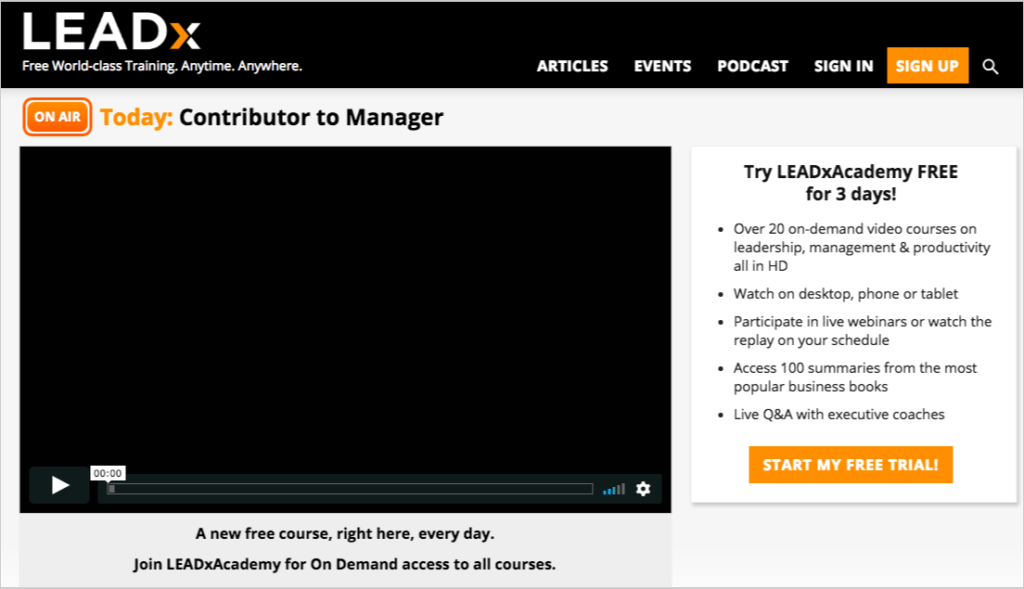
Check the list of experts being interviewed on the hosted website. Pick those who have their own blogs given that high-value links to their websites will be the main value proposition of your pitch to them (more on this later).
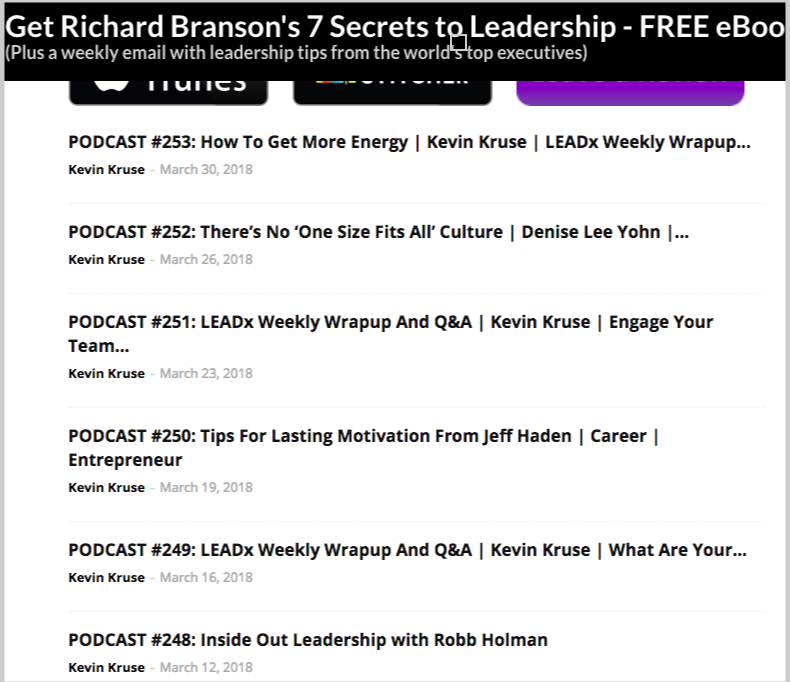
From there, you can find and collect their email address. List them all in a spreadsheet to have an easier process once you start reaching out to them.
The second part of this process is to pitch industry publications with content topics that haven't been covered yet on their blogs.

What you should be offering for them is content that can rank on keywords that they haven't ranked yet and that includes high-value information based on your expert's (interviewee's) answers to your niche-specific questions.

The only answer you'll expect from your initial pitch is their chosen topics for your guest content.

The next part of the method is to reach out to influencers or personalities (from the first part of the process) and try to do an interview with them.

Come up with questions that are related to the chosen topic of your target publication so it'll be easily integrated into the draft piece you'll be creating (given your guest content is also about the chosen topic).
Once you've received their answers to your questionnaire, you'll then create highly informative content that you can use as a guest entry for your prospect publication sites.
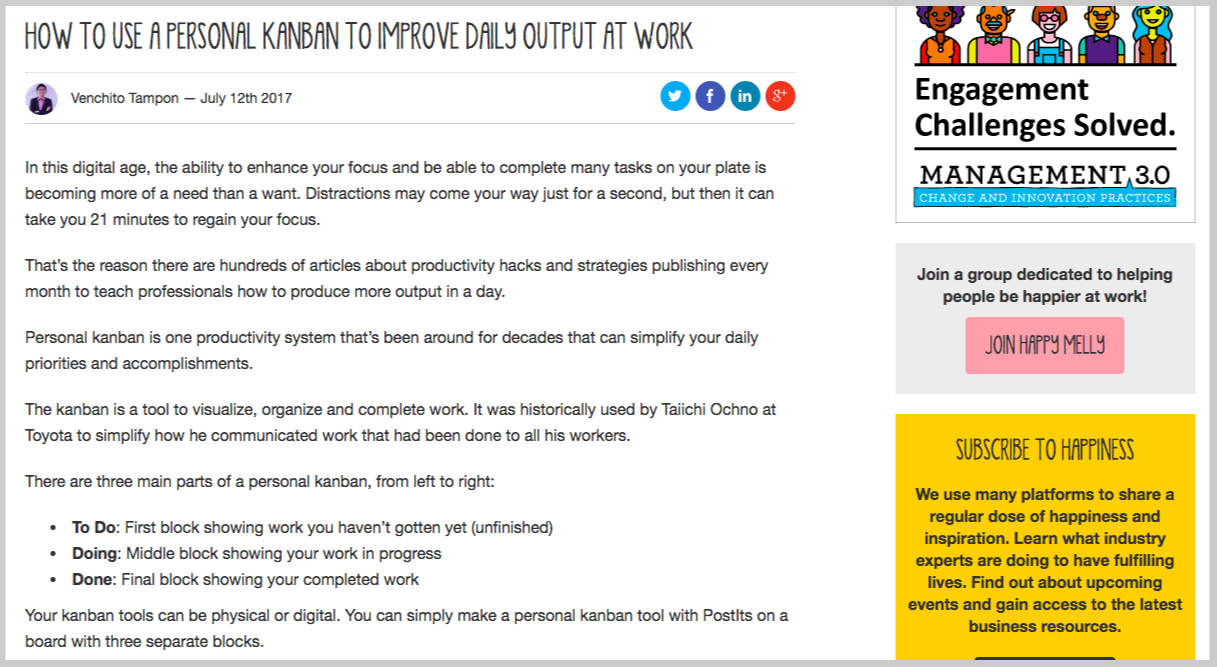

The great thing about this approach is that it's very easy to generate this type of content and definitely a win/win situation for all parties: the blog hosting the content will publish content that includes experts' insights (and potentially can rank for informative keywords), the interviewee (expert) acquires a quality for his/her blog (and gets more exposure) and you, as the contributor, build a brand presence and authority on other blogs (which can translate to additional traffic and more potentially linking opportunities).
4. Have A Long-Term Perspective
When doing link acquisition, it's imperative that you think long-term. You avoid shady link building tactics that lead to short-term behaviors and benefits.
Instead, you target the right types of links that will have a lasting impact on your website.
By providing useful content (industry guides, cheatsheets, data infographics) that gets visibility over time through its ability to rank for secondary/primary keywords, you increase the possibility of attracting links even without doing manual outreach.
Ross Hudgens shared their repeatable blog promotion strategy at SiegeMedia that allows them to increase their client's monthly visitors by hundreds of thousands (month over month).
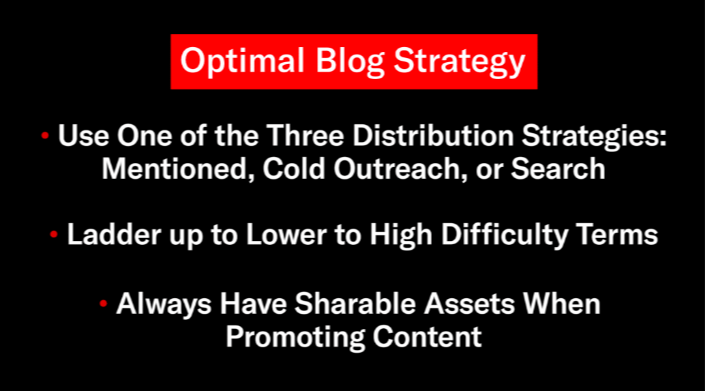
By targeting keywords where your website has the ability to rank (by creating comprehensive content and manually building links to it), you'll soon be able to level up to more difficult topics/keywords.
Repeatedly doing so can slowly build your brand as an authority publisher of useful information in your industry.
For further reading, you can check out these two guides on building authority links and content writing tips.
Content Marketing Ideas & Strategies For Small Business
Content sits at the core of most discussions by marketers and business owners today.
The reason why content is king is that it ties every area in digital marketing together. This simple image below from Jason Acidre's content marketing at Moz is still relevant up to this date.

"Does content marketing work for small businesses?" This is a question I received multiple times. And the answer is an astounding yes.
It works for big brands and it works for a small business owned by you.
However, it works more effectively if you are clear about your goals.
You'll receive different responses when people are asked, why are they doing content marketing?
You hear words like, "because it's trending now". Others say, "my business friend does it, I'll invest in it too".
Why Do Small Businesses Need Content Marketing?
Why use content marketing? How can content marketing help a business? What does content mean in business? What does content marketing include?
These are the questions people asked as to why small business owners need content marketing?
In the recent B2B content marketing research by Content Marketing Institute, these are the top three most-cited content marketing goals achieved in the last 12 months — giving us a preview of the main reasons why people need to invest in content marketing:
- Creating brand awareness (86%)
- Educating audience(s) (79%)
- Building credibility/trust (75%
Let's quickly discuss them one by one.
Creating brand awareness
Content is deemed to bring awareness about your brand, regardless of type, industry, and size.
And in this day and age, the competition is in branding. People buy products because they've known it, repeatedly seen on different social places — and therefore, they've made buying decisions based on which products get more branded.
Building awareness through content marketing is a huge thing.
This is where small business owners like you can leverage and can compete over your contemporaries.
You may not have a billion-dollar marketing budget, but if you can purposefully implement a solid content strategy with a good amount of investment and build a strong brand out of it, you'll be better off dominate a good share in your market.
Educating the audience
To educate is the best way to sell
Content marketing takes a long process to get people to move through your business' customer journey. In content, you are not always selling your products and services.
Most of your content assets, whether those that are written-word (like blog posts), videos, audio, and other formats, are designed to inform your audience with topics they'll be interested to consume.

Through content, you show your expertise as a brand. Your potential customers get to trust you as they are helped with the content serving their specific needs.
There is a high return on investment in content marketing. If properly planned and executed, content marketing can be a powerful channel of new leads for your small business.
Building credibility and trust
Word-of-mouth marketing today isn't only acquired through best works of services or products--while that, of course, is a huge advantage for entrepreneurs who are looking to scale their small businesses.
Through content marketing, you can build credibility and trust of your potential customers to your brand.
Word-of-mouth marketing can also happen when they've found your content valuable to be shared and used as a reference for their content works.
See more resources:
Content Marketing Myths Of Small Business Owners
There are certain mindsets small business owners, including the ones who owned a content marketing business, must break to start investing in content marketing and reap its benefits. Here are a few you should watch yourself if you're a small business owner.
"I don't have time for content marketing"
If you're an entrepreneur, you wear many hats to let your business thrive. You are putting out fires in sales, operations, hiring, admin, and finance.
Doing all these things makes you think you don't have time for content marketing.
That may be true, but if you look at the benefits of content marketing to your business (which I've shared earlier), you'll find ways to invest in it.
The best way to start is to do it yourself. Content requires some kind of expertise that outsourced generic writers (low-cost outsourcing) may not afford to do.
You can create one asset for less than an hour (e.g. producing a video and repurpose it into other content formats — to efficiently and instantly generate multiple content pieces for your brand.
"I don't have enough budget for content marketing"
Besides lack of time, another excuse small business owners voice out is their lack of resources, particularly finances to invest in content marketing.
Today, the online web has offered several opportunities to market your brand with small investment using strategies through organic channels.
For example, you can answer 3 to 5 questions on Quora on topics you are interested in (and have the expertise to bring value). This Quora marketing doesn't cost any buck from your end.
So not having enough budget to execute a content marketing campaign can't be used as an excuse today — knowing there are so many opportunities this core channel can bring to your site.
"Content marketing is SEO"
This is where most people get confused: mixing content marketing and SEO.
Here's the truth: content marketing is not SEO, but it is part of it.
Content marketing is tied into your other SEO efforts such as link acquisition, and keyword research. Links are a by-product (and considered as one goal) in starting a content marketing campaign.
Researching and choosing content ideas is tied into content asset creation to target topics (or keyphrases) that have a tendency to rank in search results.
There are many other myths small business owners come up with on a daily basis.
But the thing is you have to be sold enough to the idea of content marketing.
If you're still not convinced, here are some more benefits of starting a content marketing campaign:
- Drive potential customers from organic rankings (when content assets start to rank for their targeted keywords) and from distribution channels (when content assets are promoted).
- Establish a personal brand (besides the company itself) as an expert in your industry.
- Engage with your leads and let them go through a slow process of a customer journey.
Now, let's dive into some content marketing ideas you can start brainstorming with your team, fill in the gap with your competitors' content, and execute as much as possible to reap the benefits listed above.
Content Marketing Ideas for Small Businesses
Execution starts with ideas.
In this section, we are going to answer this question, "how do I market my small business?"
If you're looking for ways to come up with content assets as early as possible, here are some that can get you out there and do the work.
Leverage the GaryVee Content Model
Gary Vaynerchuck, CEO of VaynerMedia has closed the gap between content ideas and their distribution with his content model.
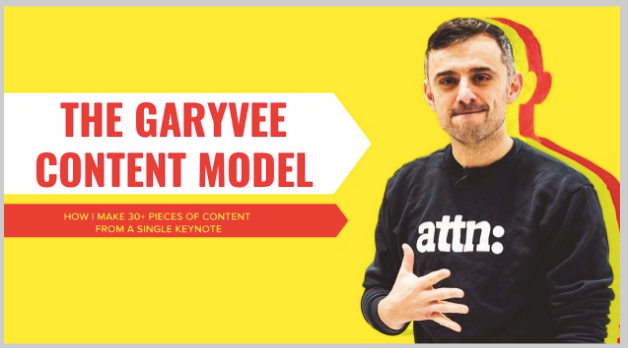
His content model basically follows this process:
- Document pillar content
- Repurpose into micro-content
- Distribute across social media
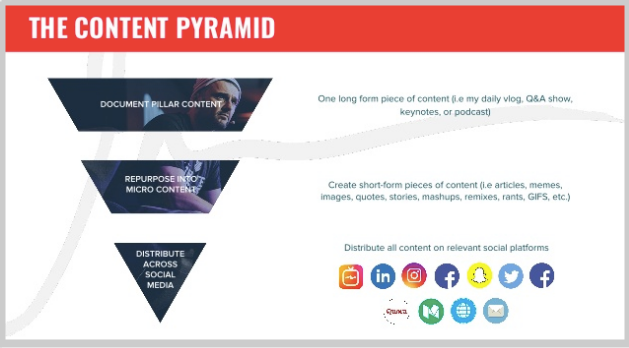
Let's discuss each step.
Document pillar content
What is pillar content?
Pillar content is a long form piece of content that can be chopped into micro content pieces. Examples of pillar content are daily vlogs, Q&A shows, interviews, keynotes or podcast.
If you are not comfortable in documenting your brand videos — with you like the frontier, you may find videos where your brand has been part of (it could be a story of your company from its setup to its growth today).
Discover these long-form pieces in your archives or create one for yourself.
Repurpose into micro-content
From your pillar content, you can create short-form pieces of content. These are video clips from your long-form video, videos transcribed for articles, short clips turned into memes, images, quotes, remixes, GIFs, and other micro content useful for your audience.
Imagine if you have 1 or 2 pillar content and turn them into 30 micro-content pieces each. That's 60 content assets in total that you can distribute both on your internal blog, and to external distribution channels such as Facebook, Twitter, Linkedin, and Youtube.
Distribute across social media
This last phase is the tedious part of the process because you have to ensure you know the context and behavior of each social platform.
Facebook is over-indexed today with videos as well as images with long-form captions.
Instagram is full of high-quality images, quotes, and IGTV comes with minutes of video content.
Every social platform requires different visitor interactions and consumption of content.
Ross Hudgens of SiegeMedia has done this model incredibly for their weekly videos on their content marketing blog. They have Content Conversations series where they interview top-notch SEOs and marketers to talk about the different facets of content marketing, techniques, and link building strategies to better improve the execution of content marketing.
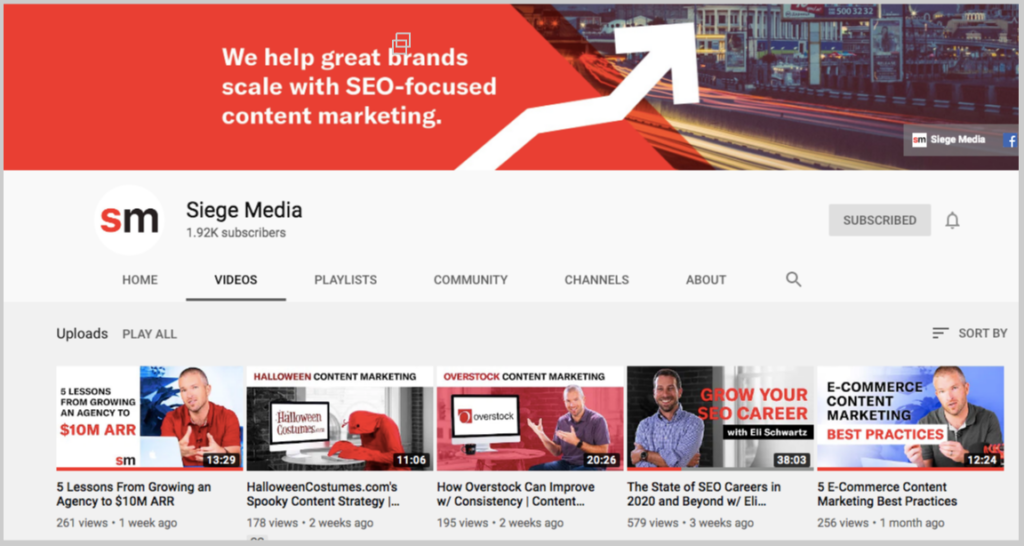
They also have weekly tips where they simply share their insider content strategies for their clients.
This is where your "no time" and "no resource" excuses will be eliminated. As you produce more pillar content pieces, you double it, or multiply the number of pieces you have. This allows you to get a flywheel effect on your content marketing results.
Produce 10x, 5x, and 2x content
The idea of skyscraper content produces a movement of marketers producing long-form content — increasing now the benchmark of word count per content piece.
Even that itself gives a solid motivation for publishers, Brian Dean's skyscraper principle was misunderstood by many publishers, leading them to sacrifice the quality of information over quantity.
The reality is producing 10x content requires both: quantity and quantity.
Not only that, there is a misconception going around that all content pieces should be done 10x. This means that if your content piece is not 4000 or 5000 words in length, your page will not stand out in organic search results.
For small business owners, 10x content creation is not the only pathway to go.
There are information and topics that need 5x, and even just 2x needed to perform better in search engine results pages.
You don't have to write long-form to satisfy users.
Sometimes, you need 2x content, not 10x content. Here's why:
- Consistently producing 2x content pieces multiple times a month can outperform a one-time 10x content asset every month.
- The number of 2x content produced on a blog that targets different topics has a faster impact on the site's overall domain authority.
My recommendation for you as a small business owner is to produce 2x content, 5x content, and 10x content. 10x content isn't only the way to go.
To get the maximum results in the least possible time, you can consistently produce 2x content on a monthly basis.
While doing so, make sure you consider delivering other formats of content to better satisfy your users.
Here are some formats for different learning styles you may consider to add to your content:
- Surveys
- Podcasts
- Video content
- Ebooks
- Case studies (of your customers or other people)
- Checklists, a list of additional references/resources, and tools
![]()
![]() You can't produce all the content types. There are only ones that fit into your strengths — your technical expertise, your resources, your set of writers, and your blog architecture.
You can't produce all the content types. There are only ones that fit into your strengths — your technical expertise, your resources, your set of writers, and your blog architecture.
Identify those aforementioned factors before diving right into content creation.
Use low-cost entry channels for content distribution
Your content marketing campaign will not succeed without any promotion of your brand assets.
If you're a small business owner, you don't want to invest money in content creation without even promoting it to get more results in terms of traffic, shares, links, or referred conversions.
Remove the mindset that in order to distribute content to different channels, you have to pay huge bucks for advertising.
There are, in fact, entry channels where the cost of entry for distribution is low, and even free. It doesn't necessarily require a team of content marketers to promote your content. You can actually do it yourself.
Quora
Every industry has questions to answer. This is where your expertise can play with.
Use Quora to market your content assets. And I don't mean you insert links inappropriately.
What you need to do is to find any discussion pages that need more attention to answers.
Prioritize the ones that are already ranking on search engine results. Given that those are pages that get recurring visitors from search.
Use SEMRush or Ahrefs to find what pages Quora is already dominating on search results.
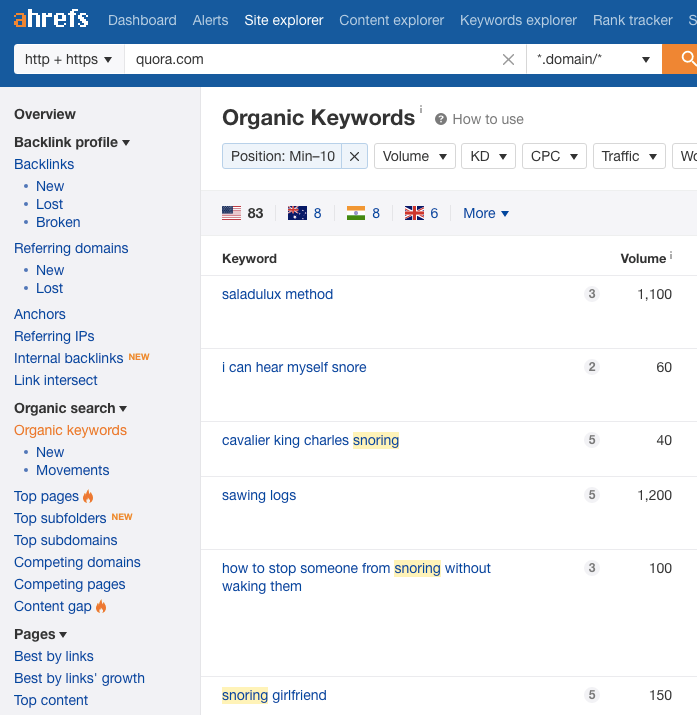
Answer those questions if they seem relevant to the content assets you've already published.
For example, I recently published a guide on how to use HARO. I then looked for any HARO-related queries on Quora and used takeaways or bullet points from my HARO guide as answers to questions.
7 Content Marketing Tools for Small Business
"How do you create business content?"
You can't create business content assets without using proprietary tools.
Not just for content ideation, but for content formatting, topic research, and even outreach promotion — tools can speed up output in a content marketing campaign.
Here are some web-based products you can utilize for your small business content marketing campaign:
Pixlr
It doesn't hurt much to edit photos yourself. If you can't afford to hire a full-time graphic designer, you can DIY photo editing.
Pixlr can help you with photo-editing tasks.
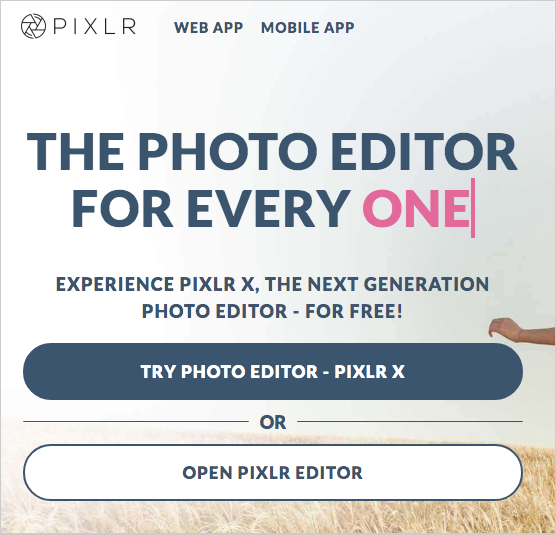
What I liked about this online photo editor is that it is easy to use — very quick even for professional edits. You can make adjustments to your image, draw anything on it, remove spots, and add more filters to enhance the photo.
Whatever quality of photo you desire, you can achieve it perfectly with Pixlr.
Remove BG
Oftentimes, if you want to remove the background of an image, you have to learn how to do Photoshop.
You don't always have to.

Within 5 seconds, RemoveBG can remove the backgrounds of images. It slashes your time editing the entire visual.
Snappa
Another amazing content marketing tool you can repeatedly use is Snappa.
For every text-based content, i.e. blog posts, there is a need to create featured images to appear in the blog section.
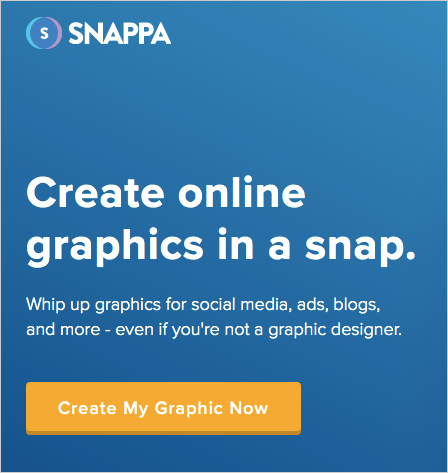
Snappa allows you to create an eye-catching image even if you're not a graphic designer.
Starting from the perfect image dimension and with their pre-made templates, you can create a high-resolution stock photo right inside Snappa. Add texts, and effects to the image wherever you want.
In 5 minutes, you can do the work you pay for designers. Have it very quickly for blog posts and for social media posts.
Recordit
If you are creating how-to on-screen guides in a text or video format, you spend most of your time creating screenshots.
RecordIt gives you the luxury of generating fast screenshots. You'll save much of your time doing so, therefore, producing more how-to content assets for your blog.
Esummarizer
You know one of the most consuming parts of a content creation process. Specific to blog writing, — It's writing the summary of the entire article.
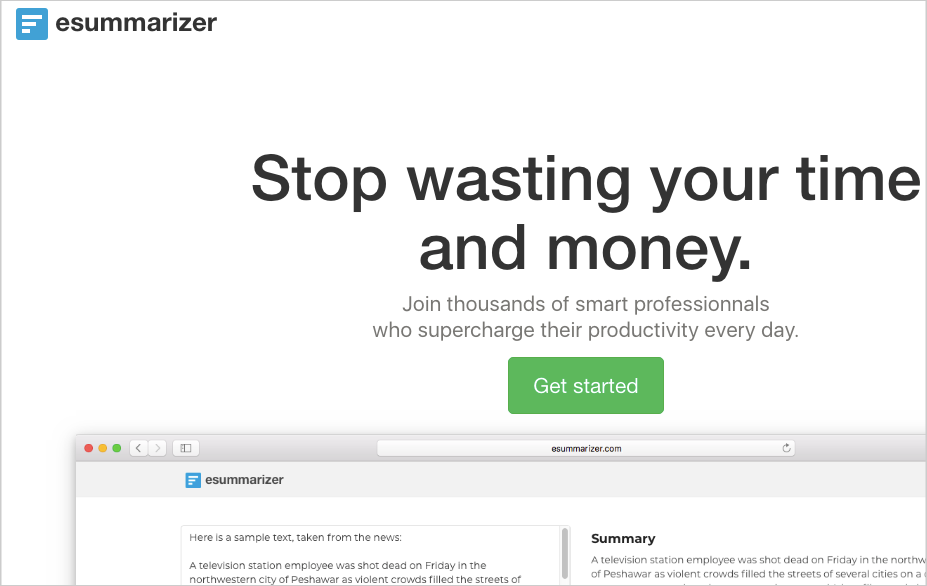
Another tool to supercharge your productivity is Esummarizer. It does only one thing — to summarize any text online in a few seconds. Now, you don't have to worry about the summary, the tool does it for you.
Keywords Everywhere
Keyword research tools are great. But one tool that's most fascinating, easily integrated as an extension to your browser is Keywords Everywhere.
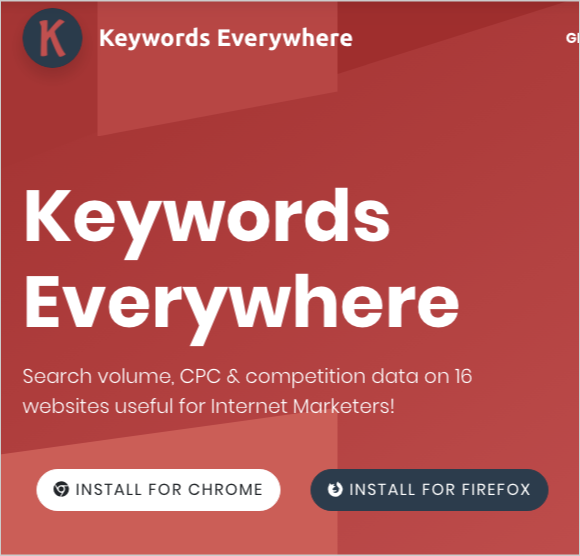
Whatever keyword you are searching for on Google, it will give you related keywords and phrases people also search for. These words can be included in your content piece either add it straight to the page and/or create new sections to target those topics.
Furthermore, Keywords Everywhere allows you to check important metrics of keywords — search volume, CPC & competition data.
Straight from search results, you can export and download any list of keywords in Excel, CSV, or PDF file formats.
Google Trends
Using trending topics in your content is a good way to get early traction from readers who are looking for industry updates.
Google Trends is a great tool to see any trending topics as well as check the demands of a keyphrase month over month.
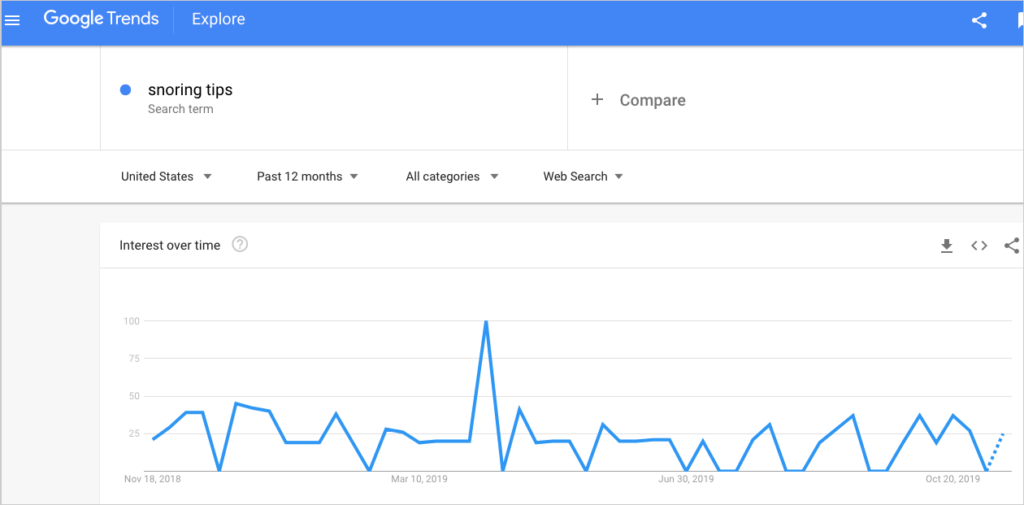
Here are some advantages of using Google Trends in your content marketing toolset:
- Find entities associated with the term — by adding brands, institutions, and any particular names to your content, search engines can easily identify and match them and know what your content is all about.
- Look at whether the interest in that topic is increasing or decreasing over time.
- Compare up to 5 different things against each other to resolve an argument about which topic to focus on.
3 Content Marketing Examples for Small Business
All content marketing ideas are good if they are executed properly. And everyone needs content marketing help for some inspiration.
Here are three small businesses that are doing extremely well with content marketing (from John Doherty's observations at Credo).
Ecommerce: Frank and Oak’s Handbook
You see usual blogs from eCommerce sites - nothing too special. But Frank and Oak have a top-notch blog architecture that gives you a soothing feeling in consuming its content.
This clothing retailer brand makes their handbook (their blog) like an online magazine filled with stories and advice on good living. It also has categories for culture-centric content pieces that perfectly fit its target market - millennials.
If you're an eCommerce small business brand, check out their blog and be inspired by how they use content to get brand advocates.
SaaS: Wix’s website-building tutorials
If you're a SaaS small business owner, Wix's content execution can be an inspiration for you. They published tutorial-style content in video format and publish it on their Youtube channel.
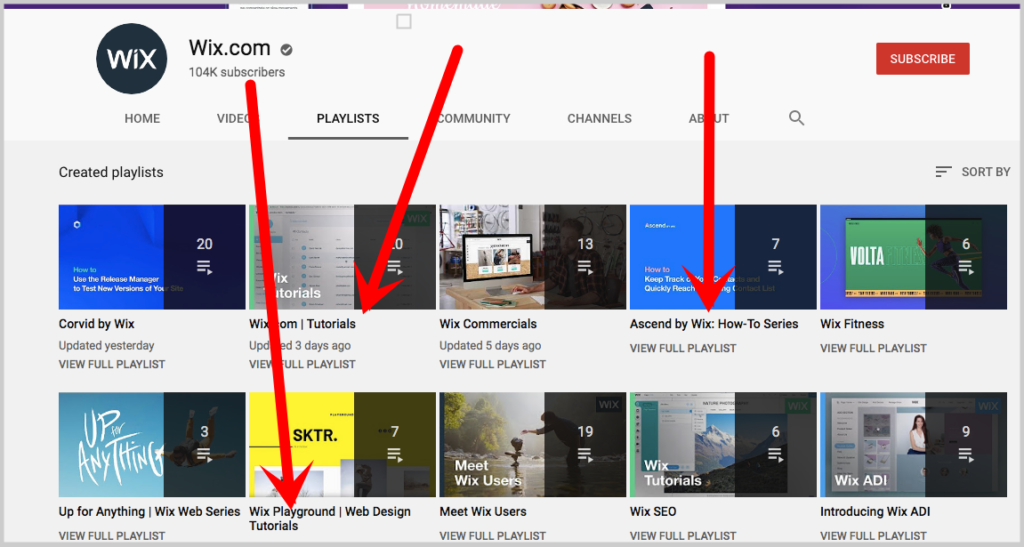
From basic topics to more advanced areas of website building, Wix does well in making its channel a one-stop information channel in the industry. They also have interview-type content where they feature prominent personalities and influencers.
B2B: MindSea’s original research
For B2B small businesses, ensuring that content is fact-based and/or credible is the top-most considered concept when creating content.
There are no other brands we can think of that does solid data-driven content creation other than Mindsea. They take a different approach to sharing data interestingly through visual content.
Further Reading:
- The guide to building your business with content
- Case studies on out-of-the-box content marketing
- 2020 B2B content marketing
Final words on small business content marketing
There is no small business, only small business owners. The same is true with your investment in content marketing.
It's not only how much money you invest in content marketing. Consider as well all non-financial resources you can put all into execution — time, attention, and networks to help you propel the results that you're looking for.
Share with us in the comments what else you need to get started with content marketing.
Ecommerce Link Building: 21 New Strategies [With Examples & Email Templates]
In this post, I’m going to show you 21 new link building strategies for eCommerce websites.
And these tips actually work in ranking product pages for competitive keywords.
In fact, the 21 strategies I'm going to share with you have helped us ranked one of our eCommerce clients (Fiddlershop) for highly searchable competitive keywords like viola, violin, and cello.
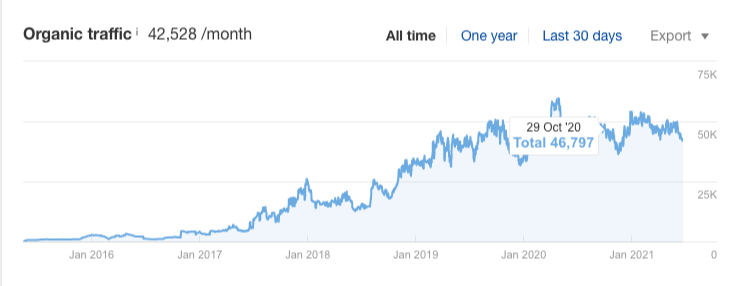
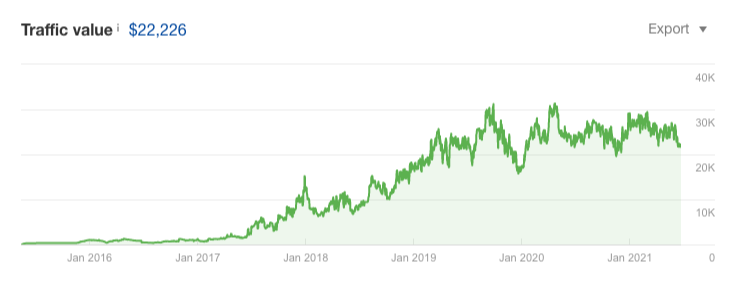
Now it's time to show you each of these strategies.
1. Get Listed on What's On My [Season] Wishlist
You're probably familiar with wishlists.
There are counterparts of it online, in a form of a blog post.

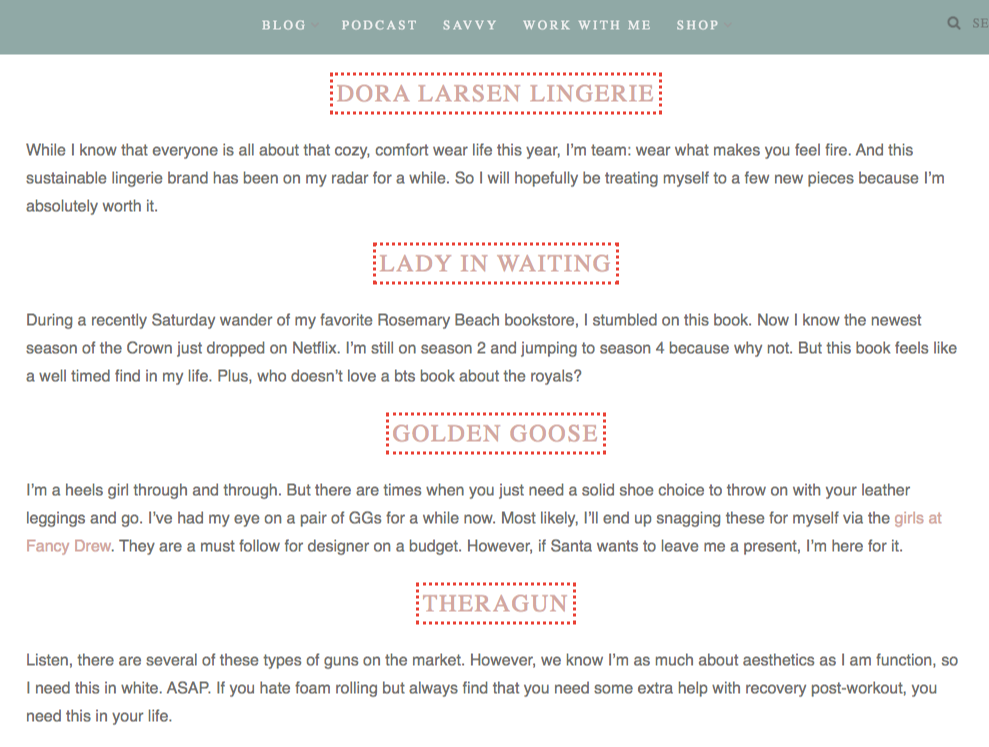
Industry bloggers publish this type of content during seasonal events (e.g. Christmas) to help their readers discover new products online.
And if you, an eCommerce marketer, give these bloggers a product that's interesting to use, you get link opportunities right off the bat.
But where can you find this type of backlink opportunities?
You begin by finding bloggers who just recently published "wishlist" blog posts.
Use this search query when you do a Google search: "what's on my" [SEASON] "wishlist"
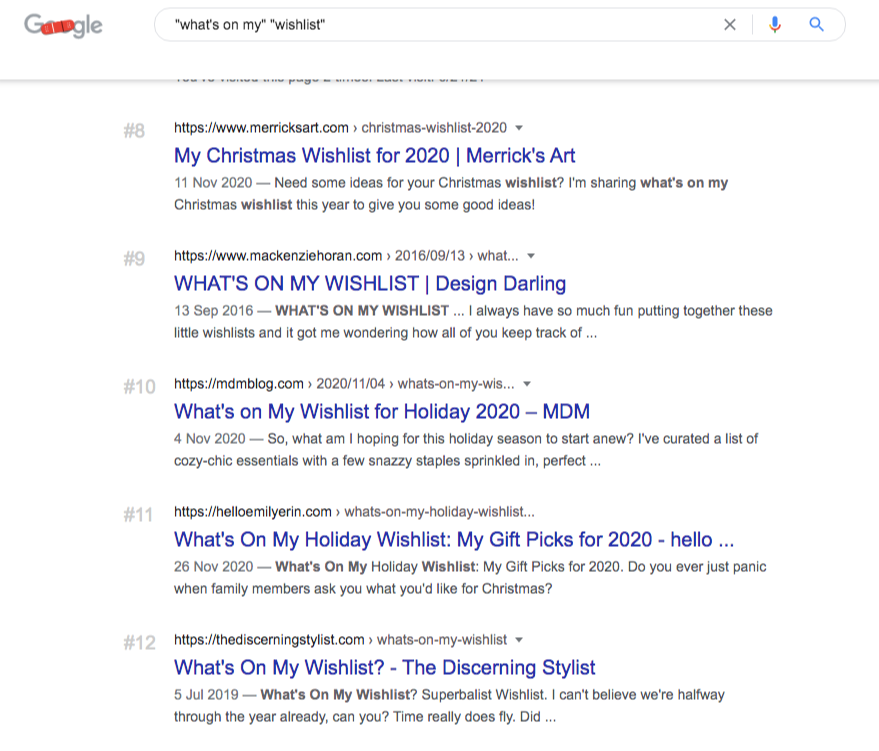
Make a list of bloggers who published wishlist articles on their blog.
It is best to check if they only post one-time or if they do regularly publish wishlists during seasonal events.
Because they're more receptive to your product endorsements/reviews if it is part of their content ritual.
Approach them through email and offer to give away your product for free.
2. Build Product Page Links From “Where to Buy” Pages
Here's the #1 struggle in eCommerce link building:
Building links to product pages…
Even more difficult if your product and category pages don't have much information worthy of reference by publishers.
But here's the thing:
You can get backlinks to your product and category pages.
How?
Start by contacting your complementary businesses and suppliers.
Typically, they have "where to buy" or "stockists" pages where they list down all sources where people can buy their products.
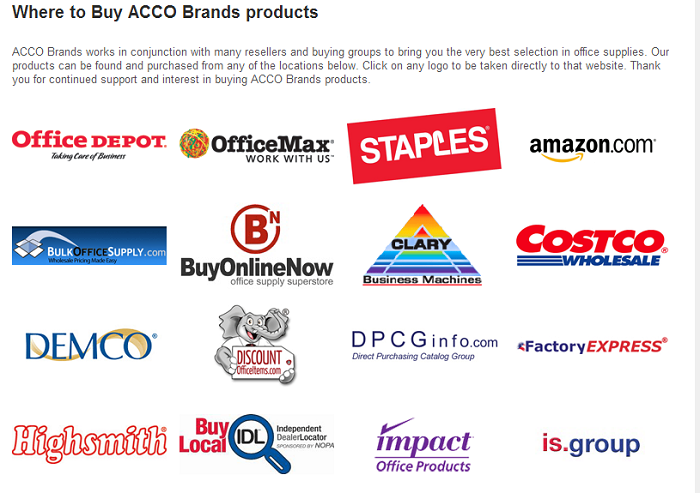
List down your manufacturers, retailers, or suppliers of your products.
See if they have websites and dedicated "where to buy" or "stockists" pages.
Use a quick Google search, "site:domain.com "where to buy" OR "stockists"
Or you can also reverse engineer your competitors.
You can use Ahrefs for this.
Site Explorer > enter a competitor’s domain > Backlinks
Then search for "where to buy" or "stockists" in the search field.

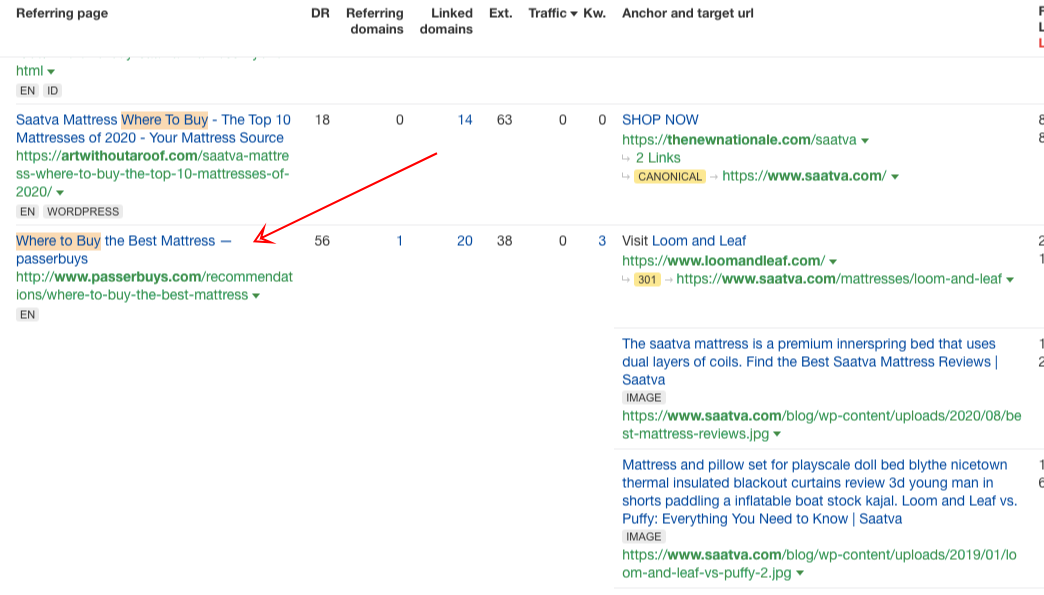
Reach out to them and request to be added to their pages.
3. Use The "Product Alternative" Technique
There is always a better option for products.
And people want alternatives to see which one fits their purchasing needs.
The only question is:
What makes your product a better alternative for your competitors?
Are you serving a different market? Do you target a different type of customer?
If your competitor serves the US market, you serve the UK — you're a good alternative for the same offer.
If your competitor targets a different type of audience (high-end customers), you sell affordable products - you're a good alternative for the same product.
How can you take advantage of this "product alternative technique"?
First, you find it in different markets, locations, or audiences.
Prospect blog posts recommending or mentioning this competitor. Ahrefs can easily help you with this.
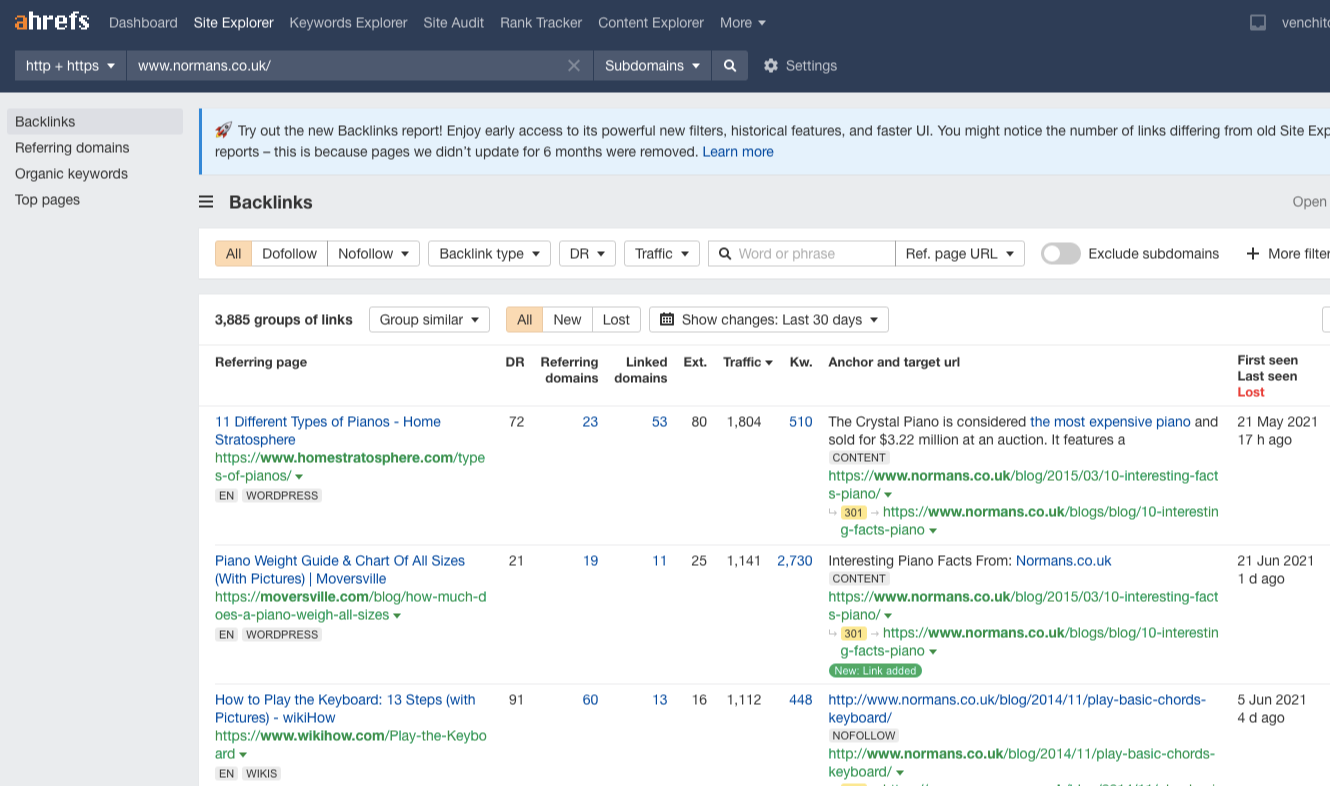
Request these publishers to link to you, stating that your product might be useful for their market.
4. Convert Unlinked Mentions Into Links
Whether your online store is new or established, you'll experience some of these changes:
New product launches.
New partnerships and acquisitions.
Location openings and closures.
Interviews about your leadership team
Whether you do digital PR or just bloggers catching up with your new product events, you get mentions from elsewhere.
But there's the thing:
Not all brand and product mentions credit you with links.
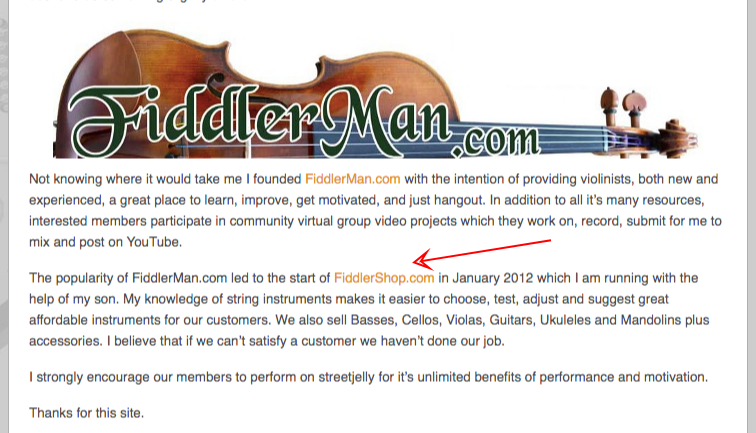
So what you want to do is to capture all of these unlinked mentions and turn them into links.
First, find them through intitle Google search.

Or use Ahrefs to get more of these linkless mentions.
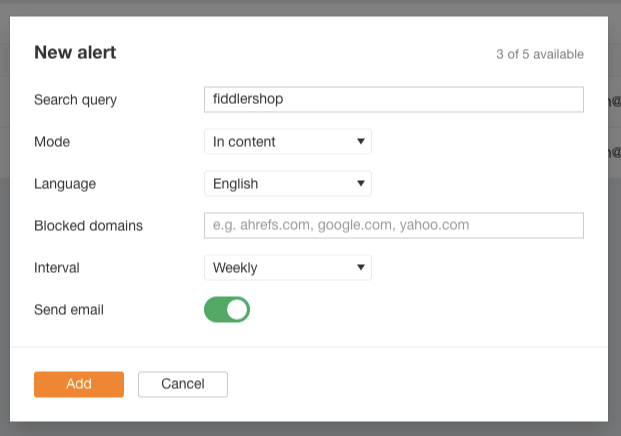
Then go and reach out to each publisher and ask them to credit their mentions with links.
Subject: Thanks for mentioning [ SITE/BRAND NAME]
Hi [ NAME ],
Hope you’re doing great day.
I would like to drop a quick message to say thank you for mentioning [ BRAND NAME ] in your post – [URL].
I noticed that you hadn’t included details of our brand and was wondering if you would be kind to include a link pointing to our website, so your visitors would see more information about your reference.
Thanks again
Kind regards,
[ YOUR NAME ]
For a more detailed step by step process, you can check out this link reclamation guide.
5. Publish "X City" Content Assets
Publish great content.
But what's great really mean?
Simple answer:
Blog post formats that work.
You know you create great content if you publish content formats that really work.
There is one content type that works for eCommerce blogs. And that is:
"X City" content asset.
Just as normal people wonder which city/location has the oldest home or hottest in the state, content creators want to feature interesting content that is based on facts.
Take a look at this eCommerce brand: FilterBuy.
They create different resources in the "X City" format.
The Hottest City in Every State
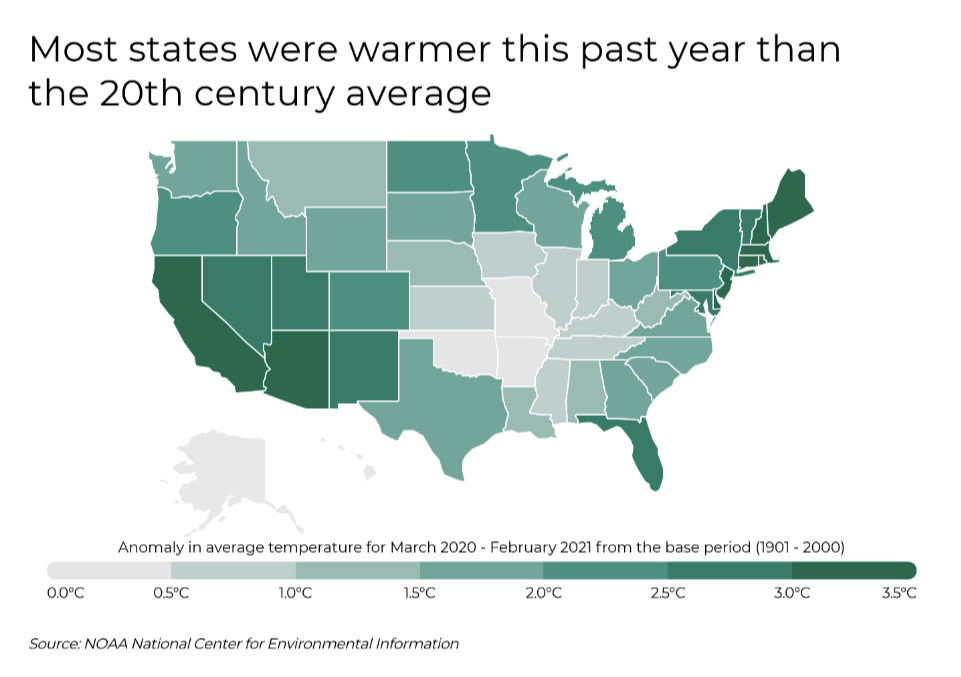
Cities Most Prepared to Work From Home
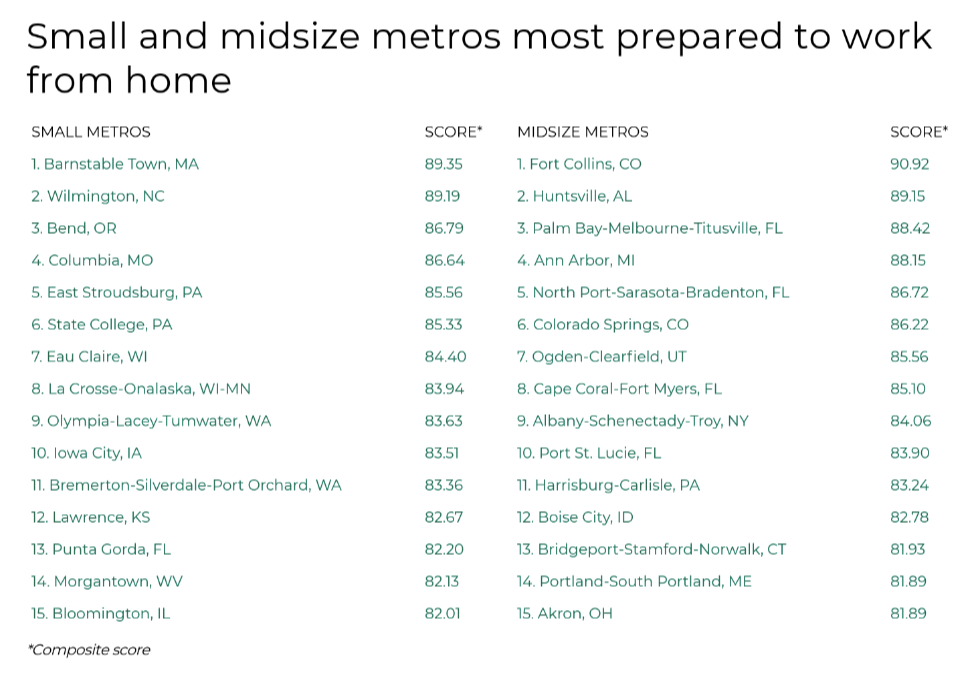
The Most Affordable Cities to Size Up for a Home Office
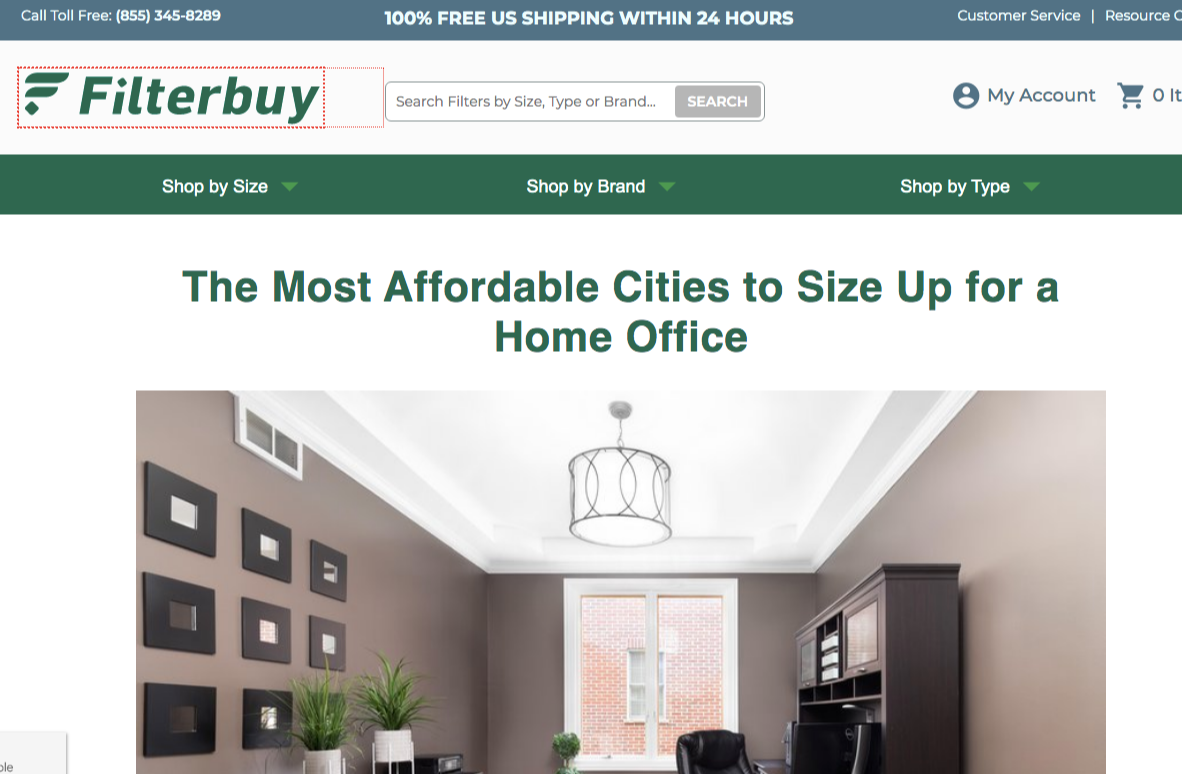
Think about your online store.
What topics would resonate most with your customers?
What topics they would find interesting to consume?
What topics would local publishers and industry bloggers feature on their websites?
Find an intersection among all your answers to the above questions.
Get inspiration from Reddit:
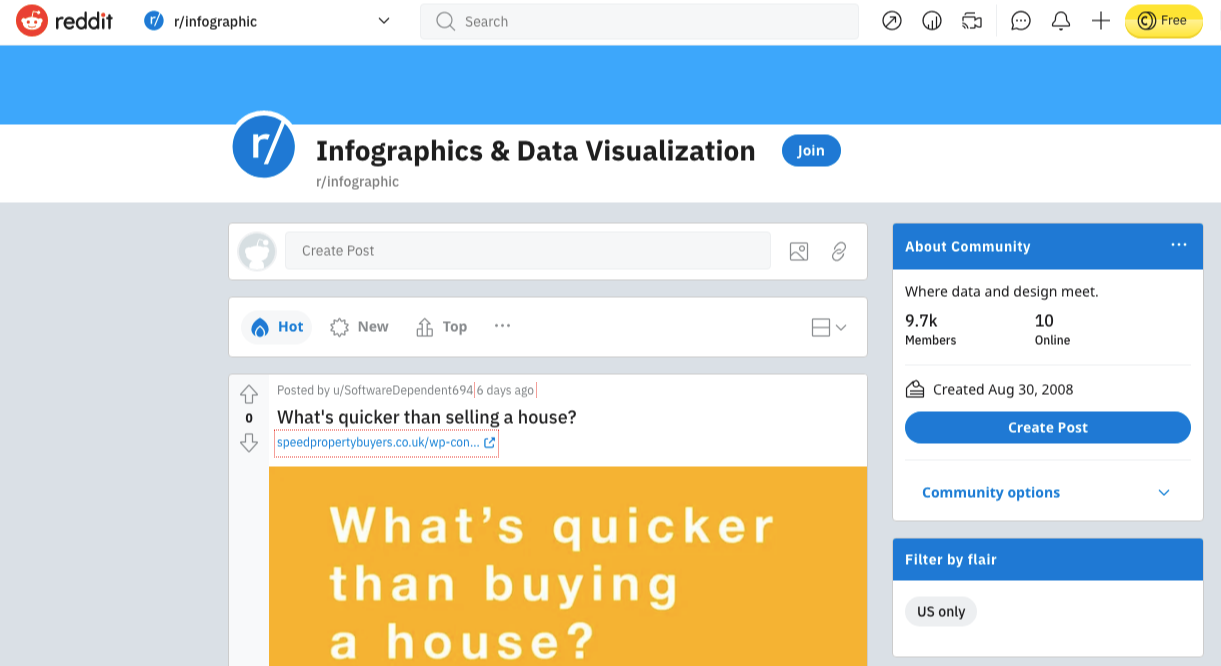
And from niche communities:
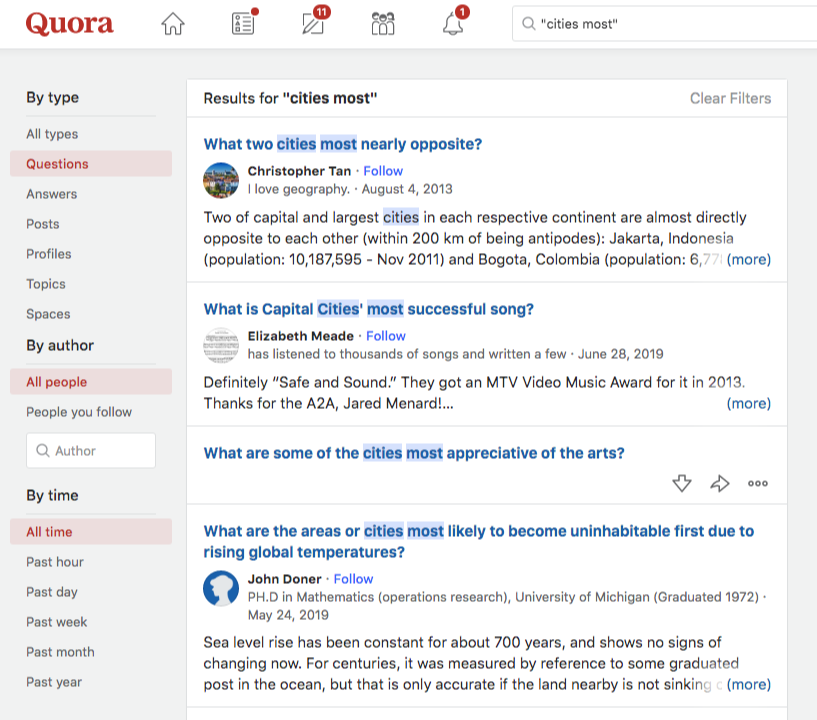
Publish your own version of the "X City" content piece.
6. Use "Gone Out Of Business" As Source Of Link Opportunities
There are businesses that have recently gone out of business.
In many cases, their domain name actually expires.
When that happens, you'll find that the entire site gets replaced with parked pages, just like this:
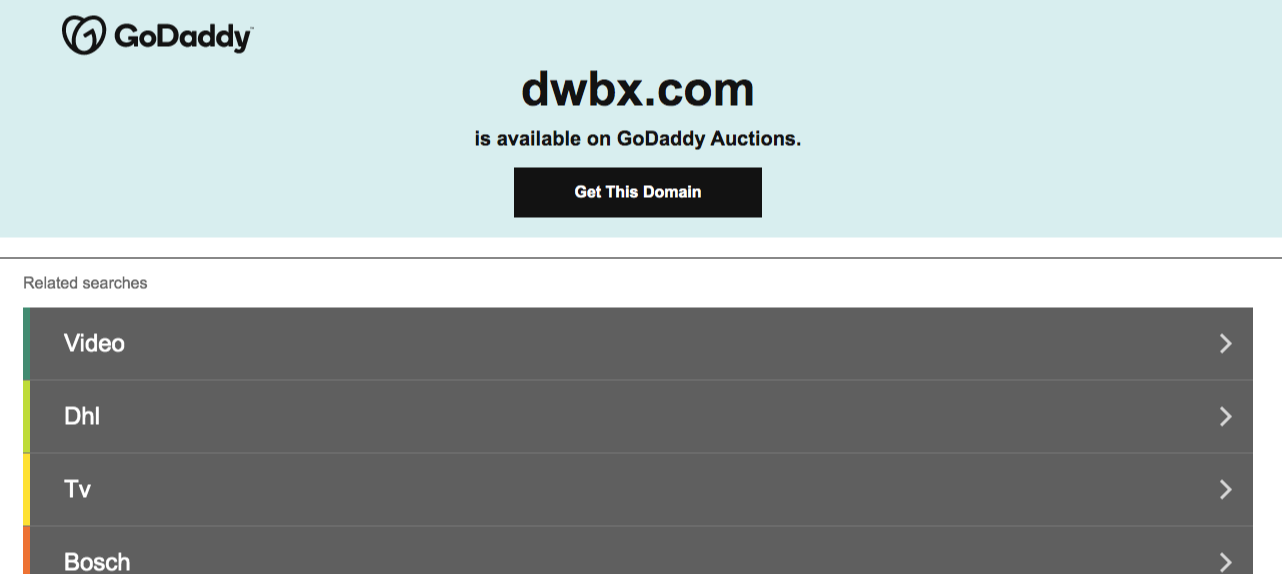
These gone-out-of-business websites are still technically working.
But broken link checkers (like Ahrefs) can't find them.
The good thing is:
You'll find a lot of link building opportunities (hundreds or thousands depending on the site) that your competition doesn't know about.
Here's the question:
How can you find these gone-out-of-business websites?
Start with big domain auction sites like GoDaddy Auctions, Flippa, or NameJet.
Look for outdated websites that are related to your brand.
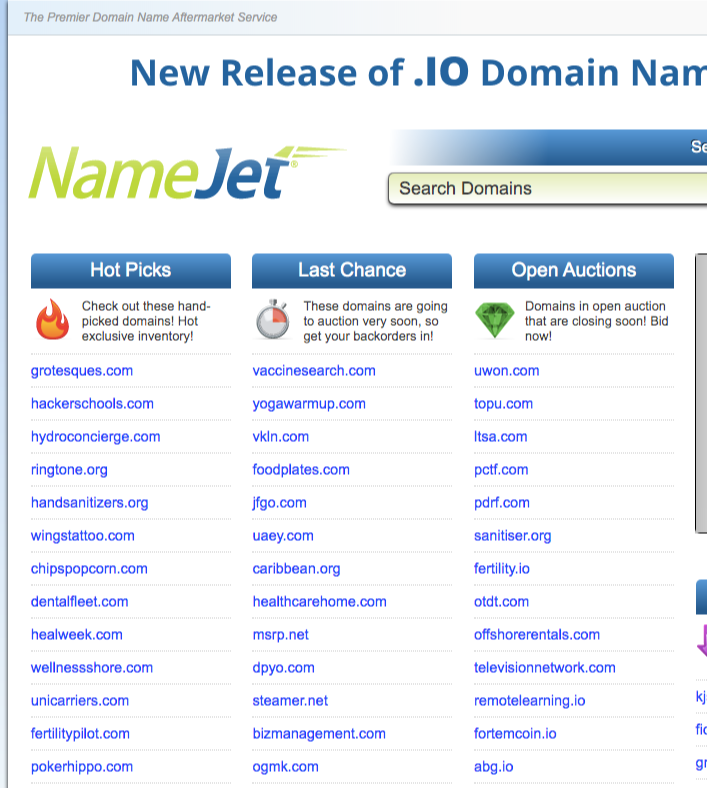
Identify how many referring domains are linking to each of the websites.
The higher number of referring domains, the more link opportunities are available to you.
Next thing to do:
Grab these domains linking to the outdated resource and check their backlinks.
You can use Ahrefs for this one.
Ahrefs - Enter the domain - Backlinks

Let people know about their outdated backlinks and offer your online store site as a replacement.
7. Solicit Links From Topical Resource Pages
You are probably familiar with resource pages.
They're basically a page that lists down links to different resources, references, and content on the same topic area.
Either this resource page is informational or salesly — just in the case with "where to buy" pages, where it lists down suppliers or resellers.
For example, if you see this page:

This is a general resource page that linked out to BMW events, BMW automobile parts sellers, maintenance services, and anything related to BMW.
Whereas, this page covers a more specific vehicle part: batteries.
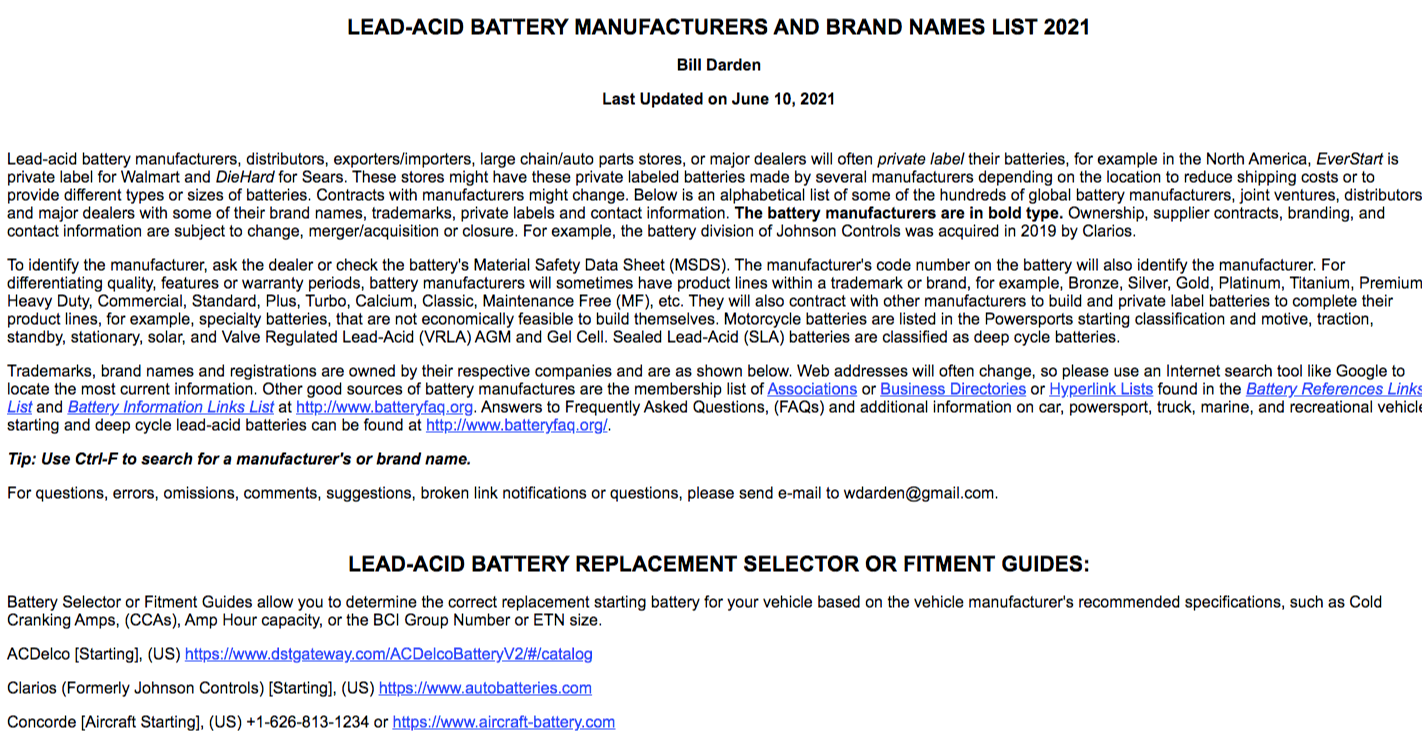
So you'll see manufacturers, resellers, and suppliers on this page.
In your market, there are topical resource pages you can find.
Start with discovering pages linking to your competitor.
Use Ahrefs to find them.
Ahrefs - Enter your competitor's domain - Backlinks.
Then, filter the list with keywords on titles like, "links" OR "recommended" OR "best" to only see resources/links pages.
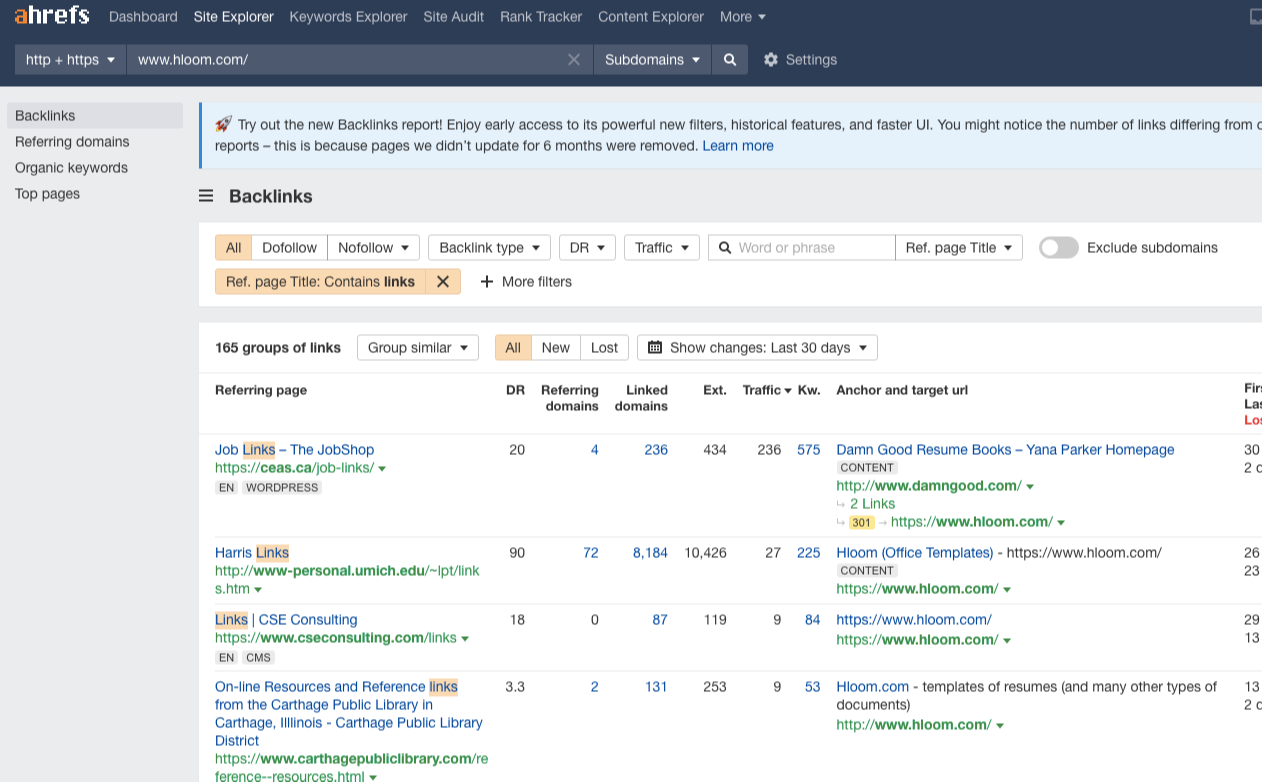
Reach out to them and request your product/category page to be added.
8. Hire Industry Authors For Your eCommerce Blog
One of the best ways to get links is to put out high-quality content.
Creating it is simple and is manageable if you have resources.
But promotion?
It needs efforts to get more eyeballs to your content.
Here's what I noticed:
High-quality content creation requires expertise to fly.
So, hiring an experienced writer to create content for your blog matters.
Start with authors who've written articles on other blogs.
You can use Ahrefs' Content Explorer to find them.
Search for the topic or blog theme you want them to write about.
Click "Published: Last 12 months".

Then, go to the "Authors" tab.
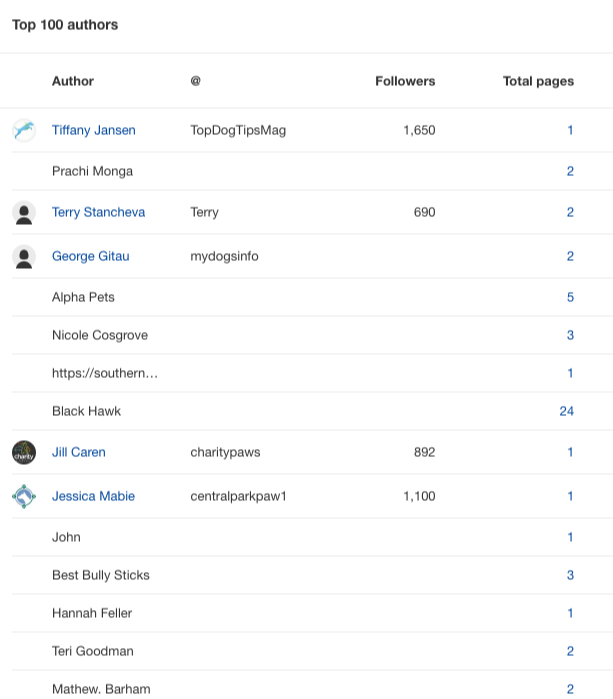
Reach out to them individually and offer to pay them to write for your blog.
It is best to also add your blog's traffic numbers, social media numbers, and any website number in your outreach email to help them see added exposure for them as authors.
9. Target "Going Green" Market For Links
One of the untapped linkable audiences in the eCommerce space is:
"Going Green" market
These are enthusiasts, organizations, and entities who are into recycling and nature sustainability.
If you happen to sell recyclable products or you could create a page about recycling related to what you're selling, there's a bank of opportunities available to you in this market.
How can you start?
Reverse engineer pages that are likely to give you backlinks.
Start by looking at your competitors' backlink profiles.
Using Ahrefs, you can see if they have linking pages about recycling.

Another way, to begin with, is to check general "recycling" resource pages.
Then see what types of content they usually linked to.
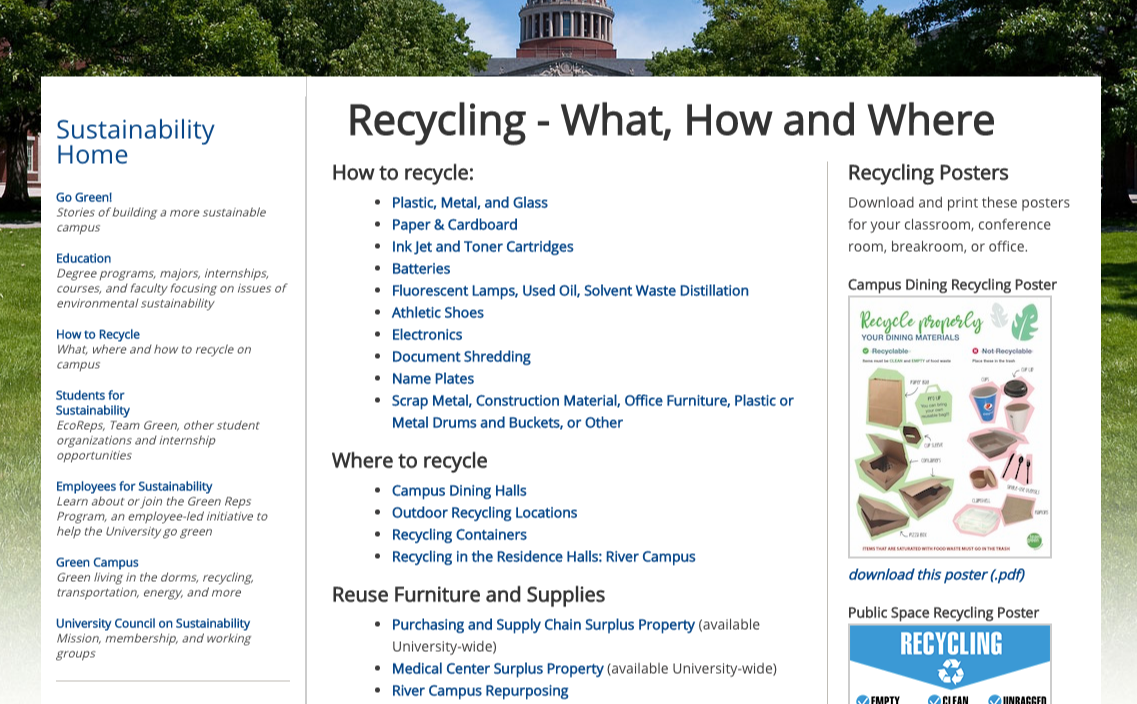
Then you reverse engineer by creating content that matches what these "recycling" resource pages want to link to.
Collect more link opportunities by doing advance Google searches:
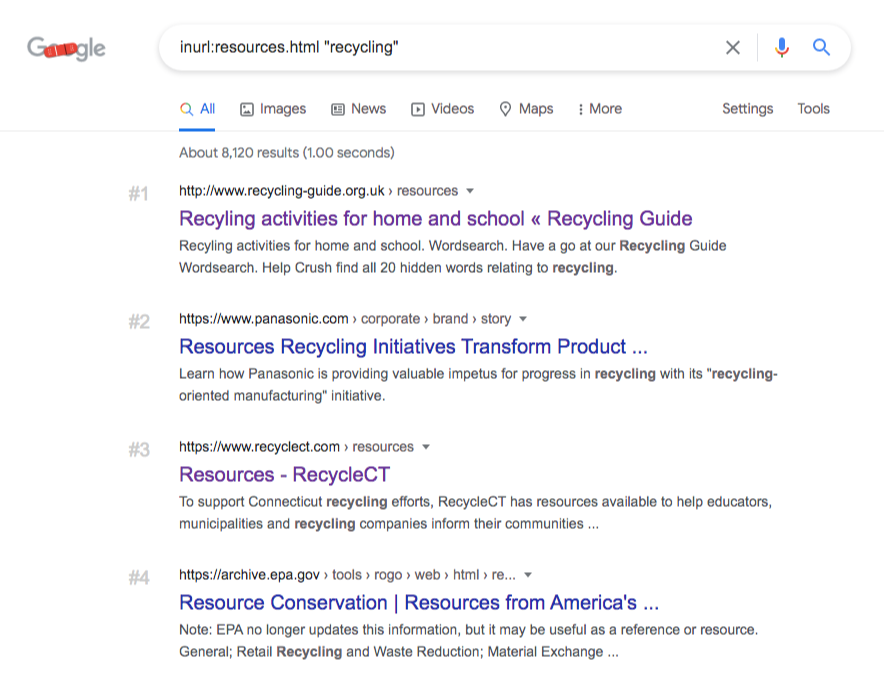
And discovering more recycling resource pages using Ahrefs"
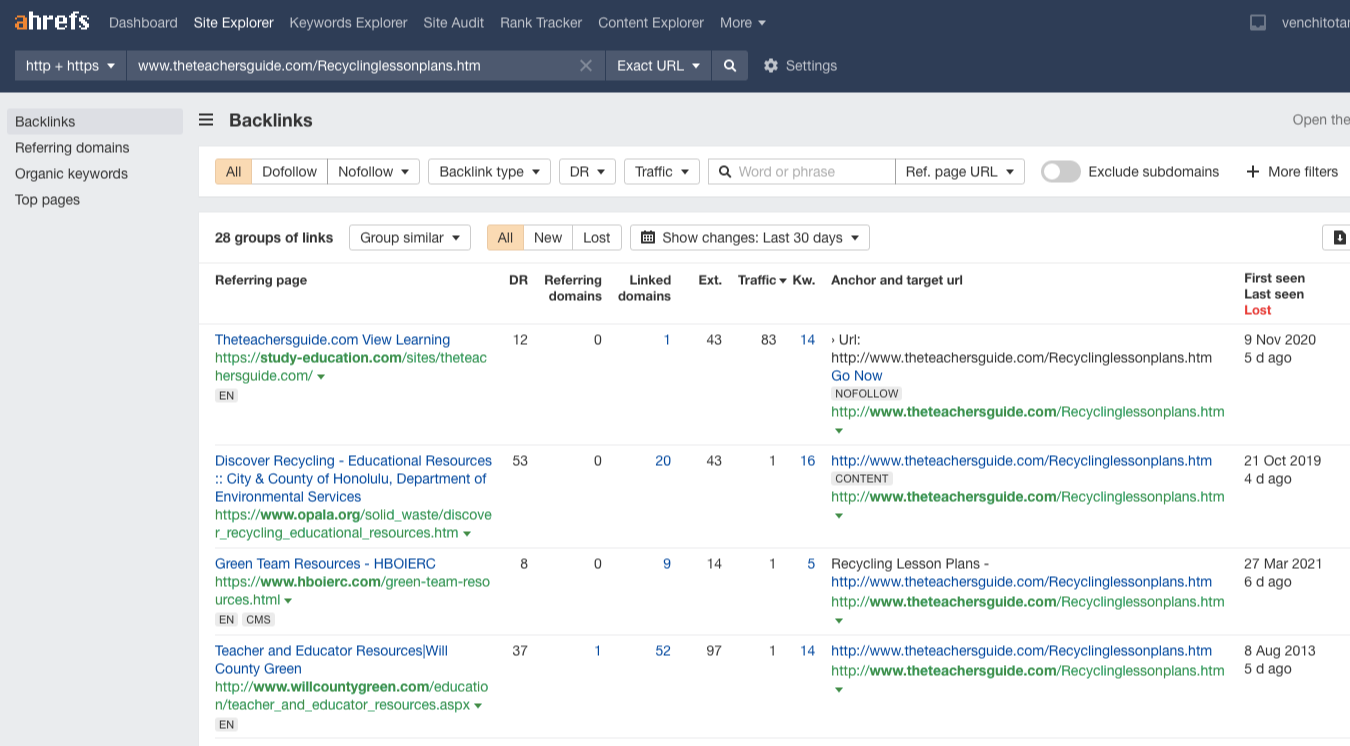
10. Invest In Sponsoring Local Events
If you're into local eCommerce, you should be looking for more geographical-based links (e.g. links from "New York" targeted websites).
And one way to do have those local links is to sponsor local events.
You've heard of sponsorship links.
Well, you may have some arguments or doubts as to whether or not you should buy links.
The truth is:
For the most part, you are buying links.
It may not be in the form of paying a blogger to explicitly give you a link from his blog.
But you're paying staff members (i.e. freelancer or link building agency) to build links for you — that itself is a form of link buying.
Going back:
When sponsoring local events, what you should be aiming mostly are homepage links from event websites.
Like this one:
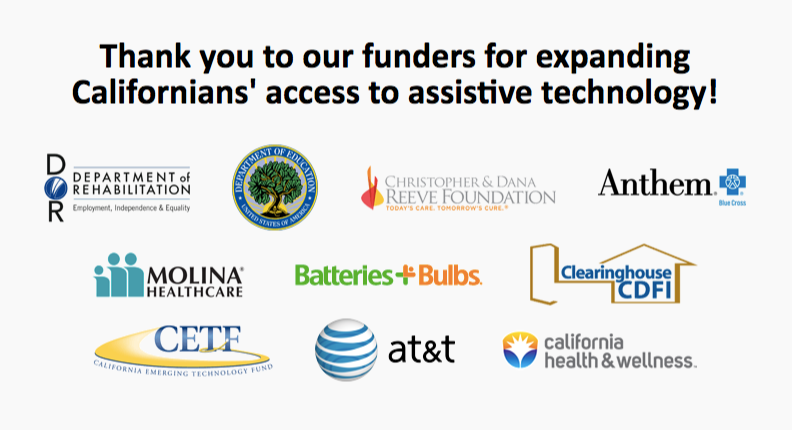
Search for any big or small local organizations such as non-profit organizations.
Examples are outdoor sports and military for possible collaborations.
You can join a few Facebook groups in your niche. Then check the "events" tab inside the group.
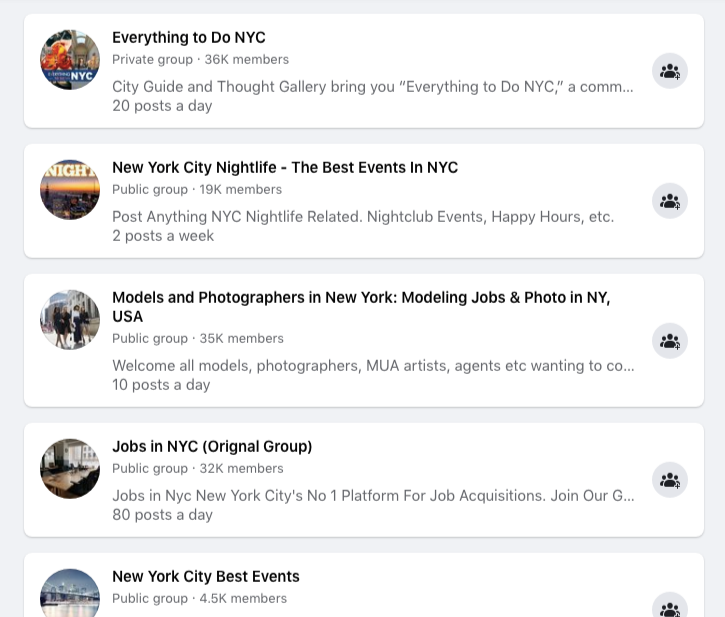
Look for any upcoming events or contact the event organizer directly to see where your products might be a good fit.
Some events may explicitly say they're actually looking for vendors.
Be the first to reach out to them to get yourself updated.
Keep in touch with the event organizer.
You'll find that either:
They will write a post about the event.
Or have a dedicated page for sponsors with image or text links pointing to each of the sponsors’ websites.
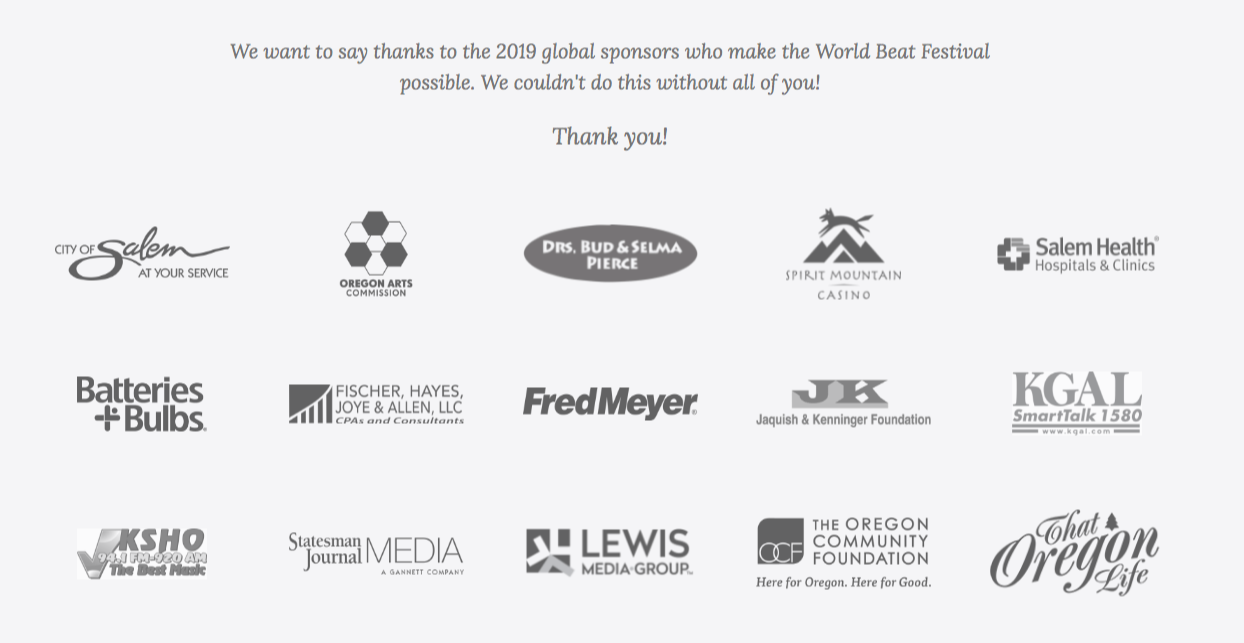
Make sure you get credited with a link when the event goes live.
11. Set Up Landing Pages For "Big Retail Days"
Black Friday, Cyber Monday…
Single's Day, International Women's Day…
These are all big online retail days you shouldn't miss out on.
Not only that you'll get an increase in product sales.
But you often find your website gets occasional links.
So, set up a landing page for each big retail day.
Like this one:
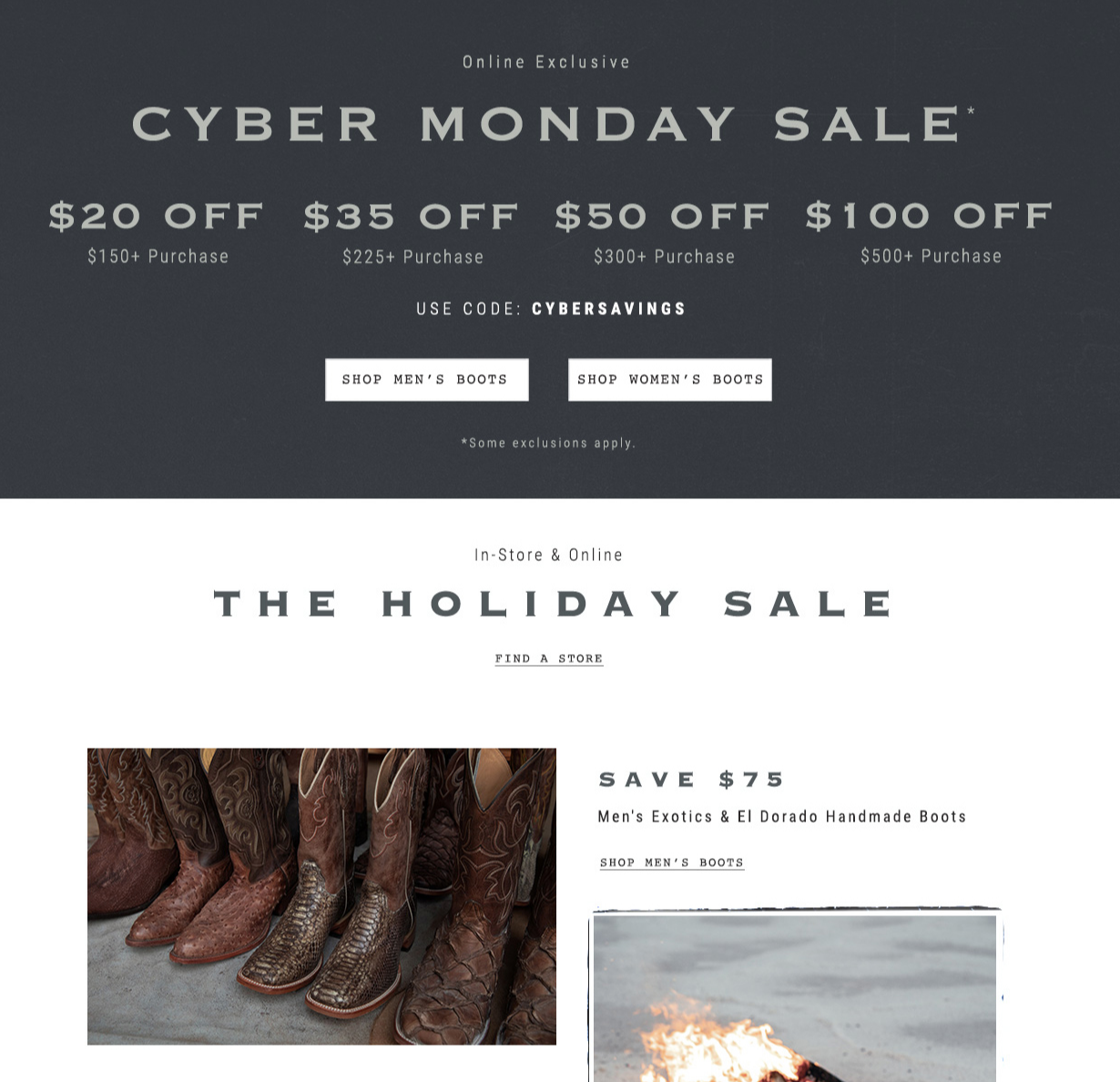
It doesn't have to be fancy, just a page showing your offers and what your customers might expect from your brand during the product offer period.
Look for blogs that showcase new products during retail days.
Reach out to them and ask if they're willing to feature your product in one of the "feature retail days" articles.
That way, you get more upfront instead of simply waiting for bloggers and publishers to cover your "big days" product offer.
12. Get Conversion-Oriented Links From Old School Marketing Strategy
Old school is cool.
Only if the strategy still works.
One of the link building strategies eCommerce SEOs overlooked is forums.
Yes, you can get links from guest posts, "where to buy" pages.
But still:
People are on niche forums.
They are there to engage with other like-minded users to get help when seeking information or asking for possible solutions to their needs.
Instead of you, chasing them. And persuading them to buy your products.
Users in forums are introspecting about what products to purchase during the moment.
Take a look at this:
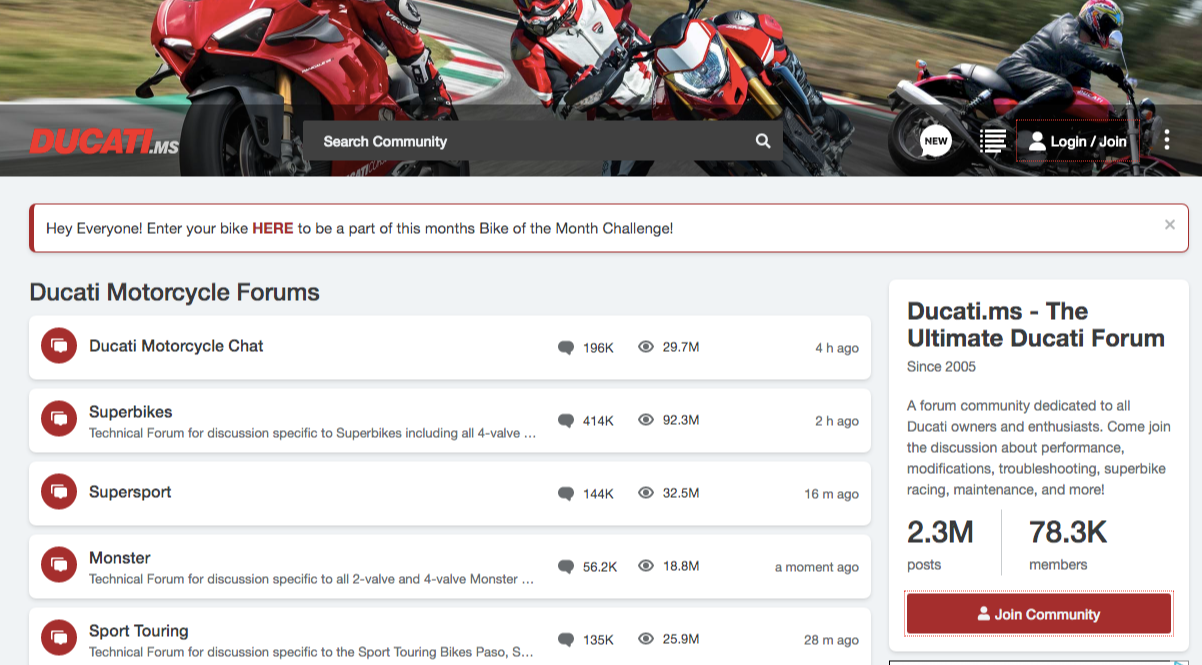
It's a niche forum for Ducati owners and enthusiasts.
With 78.3K members, you're open to needs, motivations, and specific questions and information people like you (or your customers) are looking for.
Engage. Get involved in discussions.
Another example is this string instruments forum.
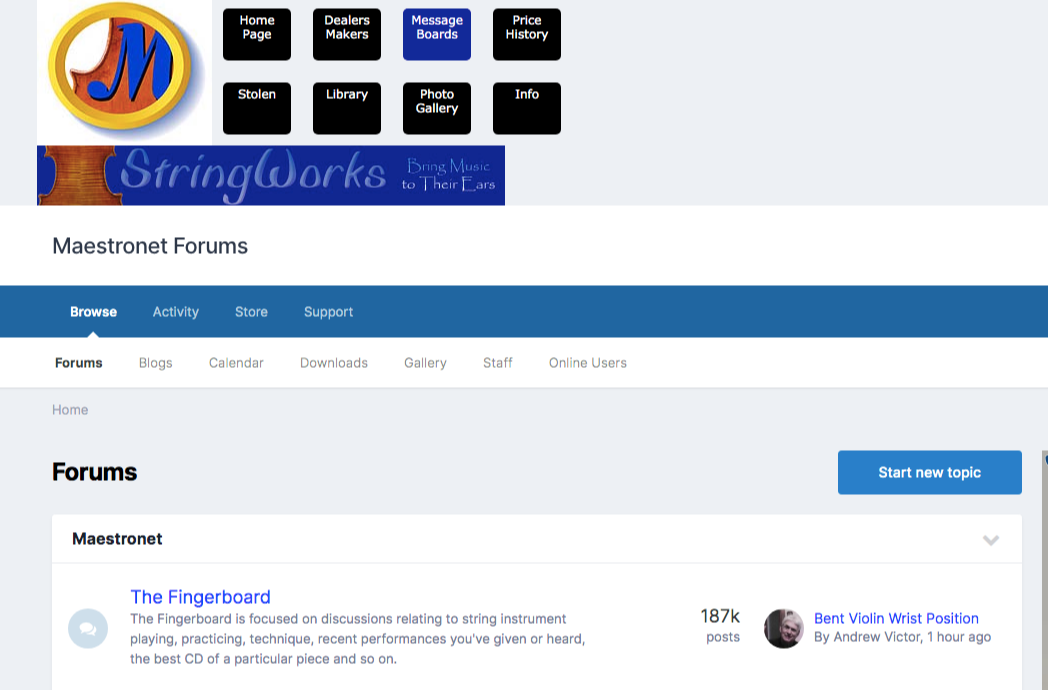
You see threads from people searching for specific products to purchase.
This one:
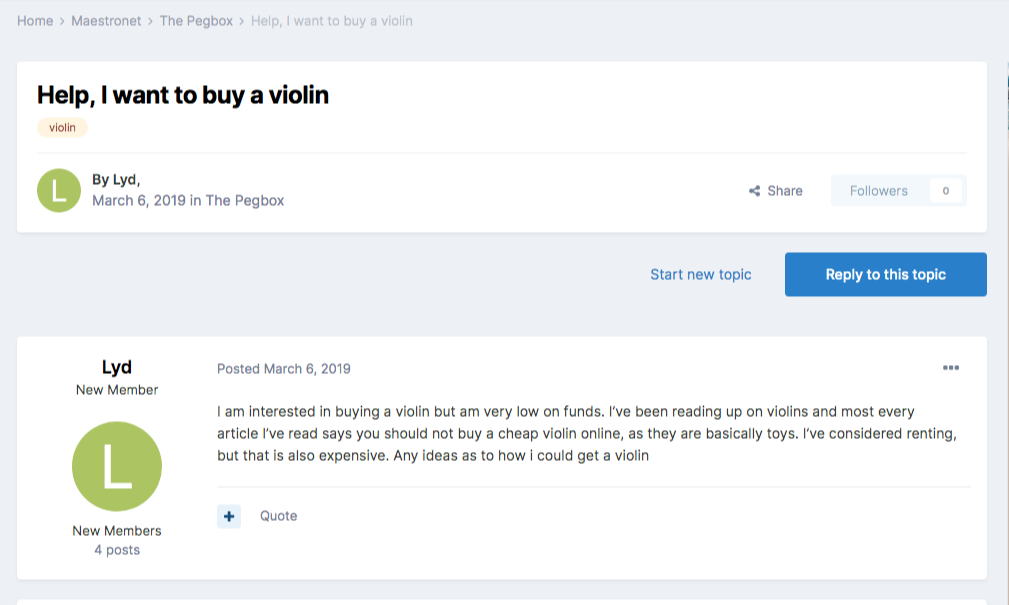
Spend a few minutes answering questions on industry forums.
Whether or not you get links from it, it's a plus for you.
You get visibility for your brand. You get sales opportunities.
13. Avoid "Link Building Block" Using This Strategy
Some SEOs don't know where to start in eCommerce link building.
The simplest way is:
Check what websites are linking to your competitors.
And not just any website.
Look for sites that have linked to 3 or more competing domains.
Because chances are:
If they linked to your competitors (who offer similar products), they're also likely to link to your online store.
So, how you can find these websites?
Use Ahrefs' Link Intersect. Enter your competitors' homepages.
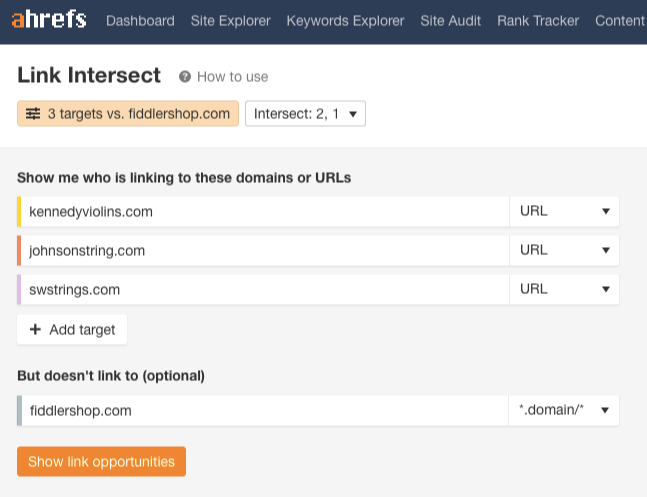
Make sure you choose "URL" for each site so it would only show you homepage links.
Add at least three competitors.
Now, Link Intersect will show you which sites are linking to those competitors.
What you only have to do.
Filter referring pages based on link types.
It could be forums.
Resource pages.
Directories.
The next time you reached "link building block" (you don't know where to start in link prospecting), try this strategy of checking which websites are linking to your competitors.
14. Publish Linkbait To Get Organic Links
You're probably familiar with linkbait.
You create a linkable content asset — an infographic, a guide, a piece that gets attention from linkers.
And because the content asset provides high-value information, publishers, bloggers, or any of these types would link to your page.
In the eCommerce space, I've seen one strategy that's been effective to get initial links.
Good if you're still new in doing SEO for online stores.
Or even if you've been for a while thinking what link building strategy to use for eCommerce.
The process goes like this:
First, choose a specific niche where you’ll feature top XY blogs.
X means the industry (e.g. medical).
Y means number of blogs (e.g. 50).
Here is one example:
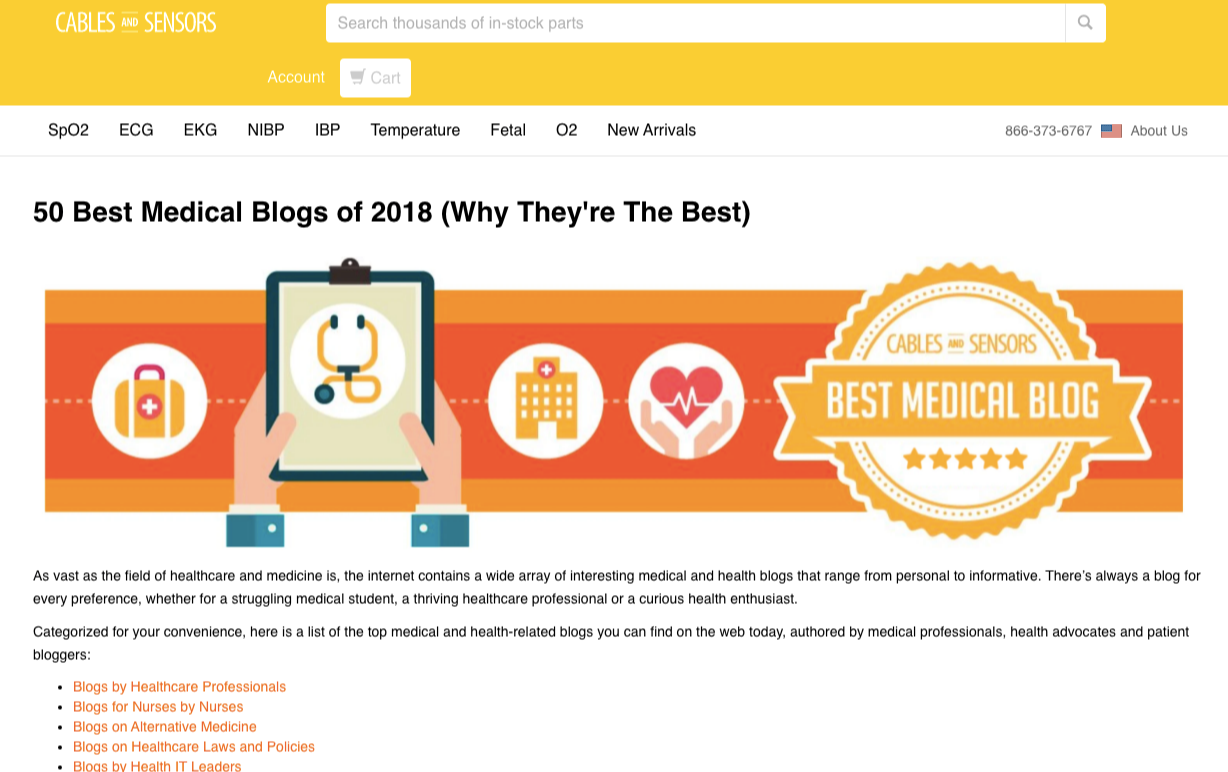
And another one:
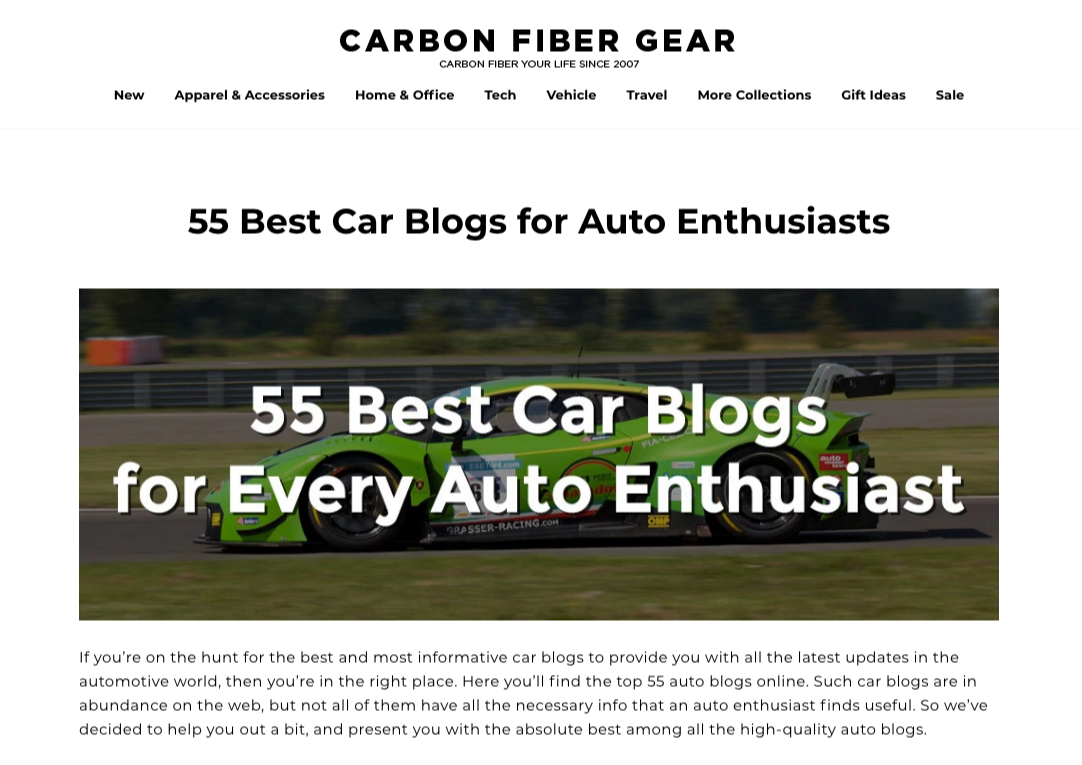
The next thing you'll do is to make a list of all blogs in the industry you've chosen.
What you want to do is to make sure you get enough links from this strategy.
So you first reach out to them and let them know you'll feature them on your top X blogs page.
This way, you don't get any random blogs to be featured.
But you're making sure that once you published the post, you have these people ready to share it to their networks (and at most, link to your page from their blogs).
Here's an email template that you can use:
Subject Line: question OR inquiry
Hi %Name,
I'm %YourName%. I manage the blog %Brand%. I'm looking to feature your brand in our upcoming exclusive %XYTopList% (share more information about your upcoming XY list).
We get "X amount of visitors" every month, and we have "X amount of email subscribers" and "X amount of social media followers" to share our new content with.
Let me know if you're interested to participate.
Thanks,
%Yourname%
The value proposition in the email is your feature opportunity:
The responses from your target prospects will vary.
Some will be honored to get featured on your blogs.
Others won’t care.
Nonetheless, you prioritize people who've shown interest in promoting the "linkbait" piece once it gets published.
15. Use Product Discounts As Linkable Value Proposition
Discount programs get the benefit of added sales once executed properly.
But you can also use it as a way to get recurring links from discount pages.
Here's one example:
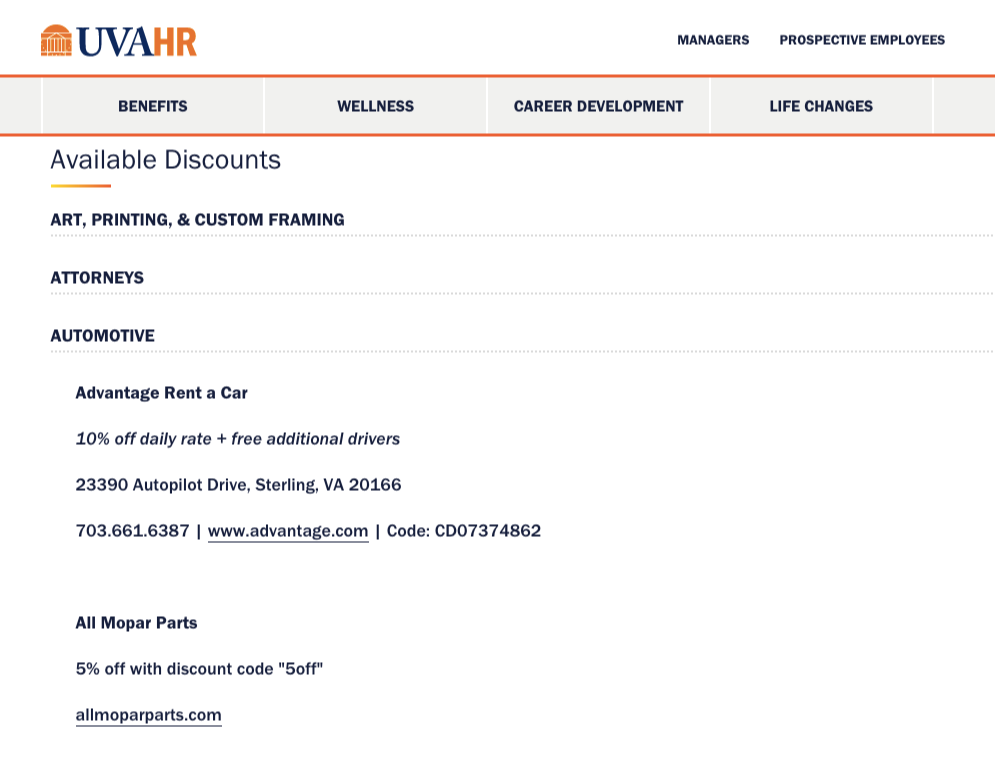
Universities have "discount pages" for students who're looking to save bucks every month.
They partner with brands potentially looking for collaborations.
Universities provide value to students in terms of discounts on products.
eCommerce brands get direct links to discount pages (or product pages).
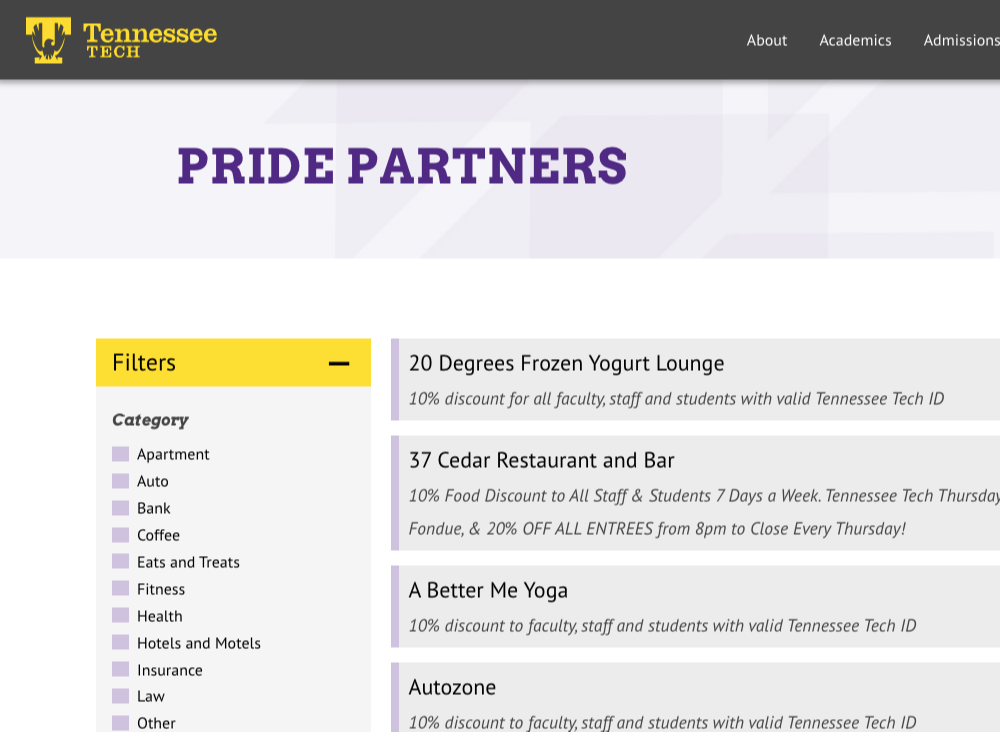
It's a win-win situation.
The process using this link building strategy doesn't have to be fancy.
Simply reach out to them and show them what type of discounts students of prospective universities will be getting.
Subject Line: Discount program for %XUniversity%
Hi %Name%,
I'm %YourName% from %Brand%. I'd like to offer discounts to your readers and followers at %University%.
Here are the details of the discount program:
(Share details about your discount program)
I'm sure your students and readers of your page would love to know any new product discounts.
Let me know your feedback.
Thanks,
%YourName%
Then, you'll reap the benefits of links once you get featured on their pages.
As you know, these universities bring high-level link juice or authority links to any linked-to website.
16. Create Research-Based Infographics
Infographic marketing is not dead.
Some marketers and SEOs don't just know how to create infographics that stand out and get promoted over and over again.
Here are some examples of linkable infographics from online stores:
Parent's Guide to Childhood Asthma: Symptoms & Treatments

Carbon Fiber Cars, Parts, & Care - Infographic
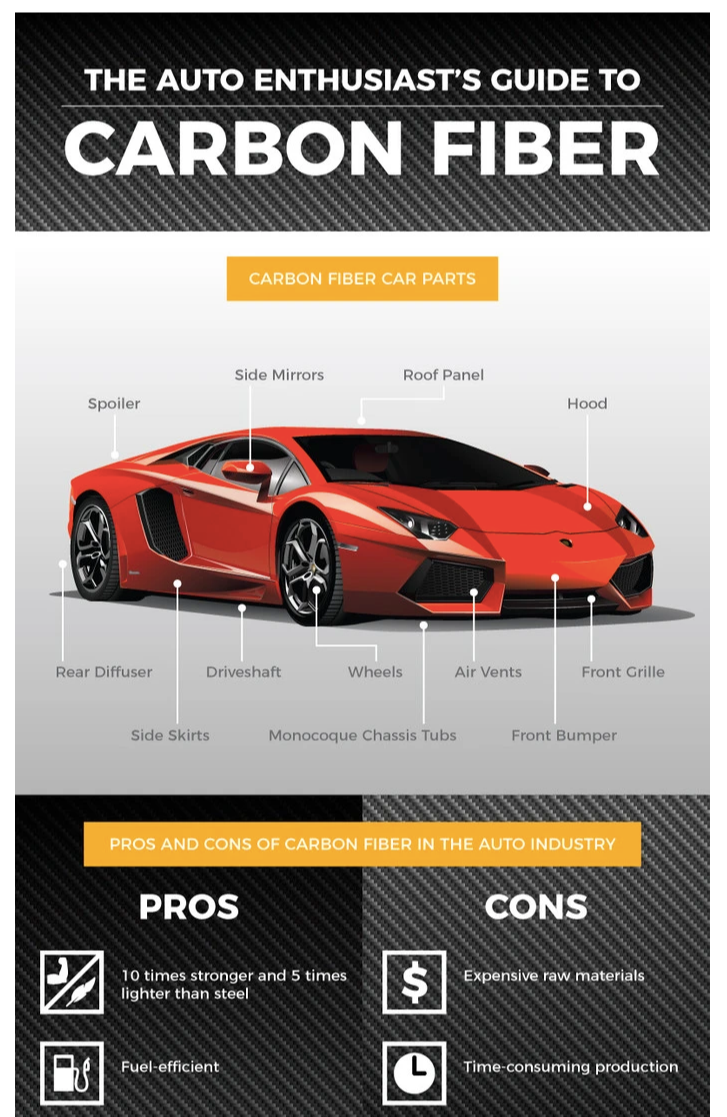
You see:
Nothing luxurious, but you'll find that the creators of these infographics well research about the topic.
And the most part, topics are not random.
These topics are within the boundaries of their brand themes.
So you can start by getting inspiration from top online stores that create infographics in their markets.

See which of them you can model to your eCommerce blog.
17. Get Recurring Links From Roundup Blogs
It's easy to get a link one-time.
But doing it repetitively is another story.
That is why:
There is one way to get recurring links to your online store.
And that's through roundup blogs.
These are bloggers who regularly publish "roundup" articles every week or month.
Some prefer to call it "weekly products".
Others have it as "link party".
Where they feature informational content or straight products on their articles.
Now:
How can you find these easy link opportunities?
Start with your competitors.
Reverse engineer if there are websites linking to them with titles such as:
"links" pages
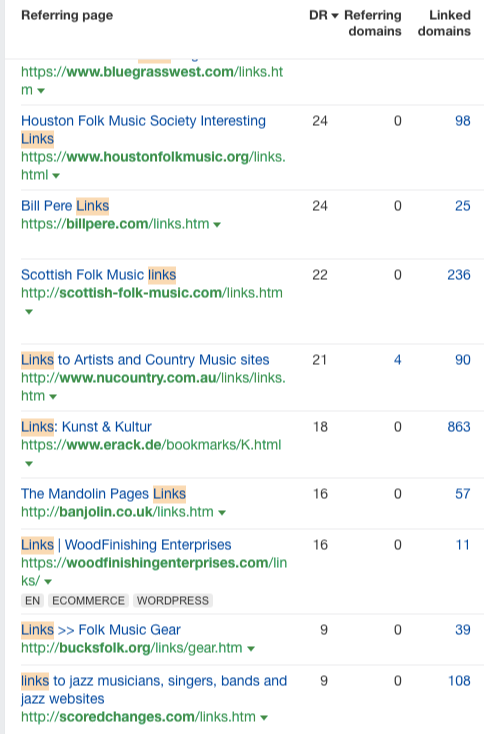
"Best of" articles
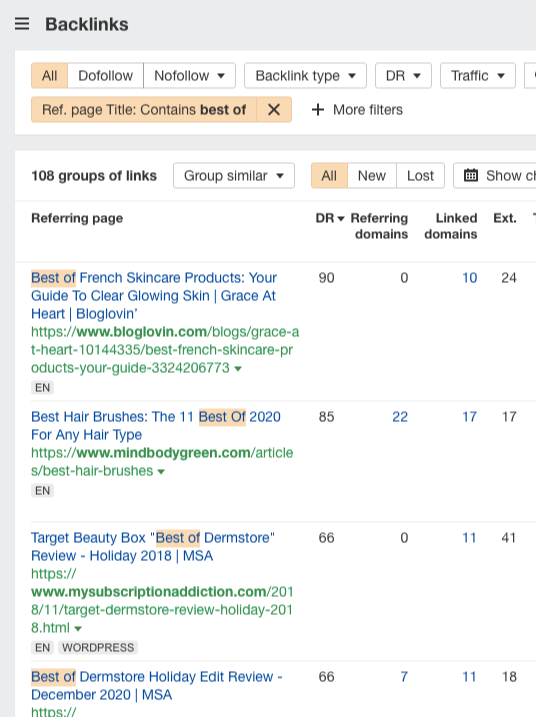
"Round up" posts
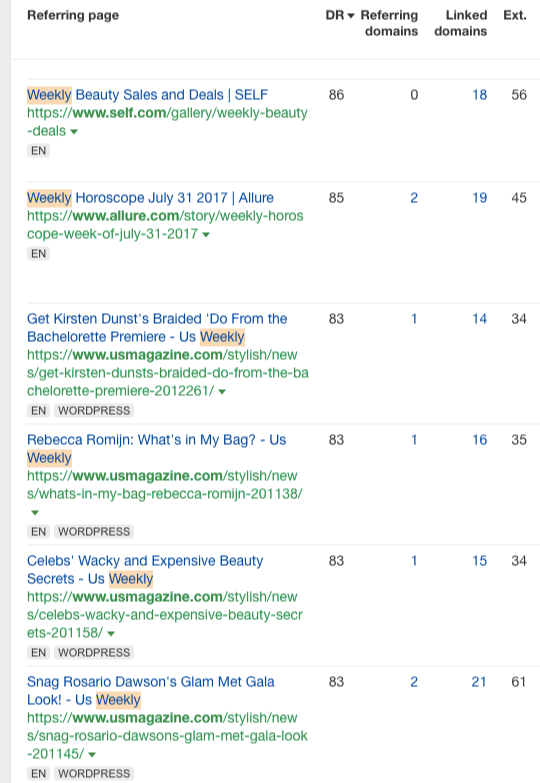
Or your second option is:
You find these roundup link opportunities on Google.
Use any of these search queries below:
- “KEYWORD” “best blog posts”
- “KEYWORD” “monthly round up”
- “KEYWORD” “notable posts”
- “KEYWORD” “notable updates”
- “KEYWORD” favorite posts of the week
- “KEYWORD” friday link round up
- “KEYWORD” friday round up
- “KEYWORD” monday link round up
Assess the bloggers' roundup page.
Understand how, why and what types of posts they link out to brands.
Reach out to these bloggers. Build relationships with them. And offer a free product, a feature on your blog, or any value that gets them to link to you regularly.
18. Offer Discounts To Employees
We've covered discounts earlier.
But that's only for students.
You can add one more to earn more backlinks to your online store.
Offer some discounts specific to employees.
Employees of non-profit organizations, university staff, and high-authority brands.
And this one:
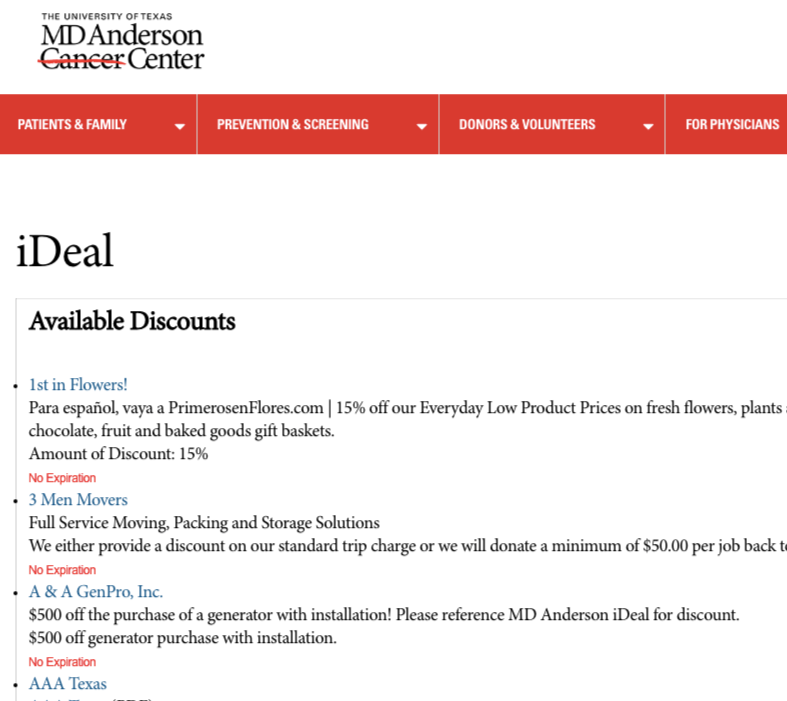
Reach out to them and offer employee discounts.
The better your discounts, the higher is your likelihood of getting links from these employee discount pages.
Webmasters have different requests for information — send them over what you need. And you get featured and links on their webpages.
19. Monitor New Links Of Other Online Stores
New links to your competitors are opportunities for you.
Why?
Because webmasters and publishers who freshly link to a website:
Are more likely to respond to requests.
They're still in the mode of updating their pages.
So where do you start?
Make a list of domains you'll monitor fresh links regularly.
First, it could be a list of your direct competitors.
And it could be a list of top publications in your industry that also target the same market as yours (e.g. car enthusiasts).
And any local businesses picking up new local links.
Then:
Start monitoring new links pointing to each website.
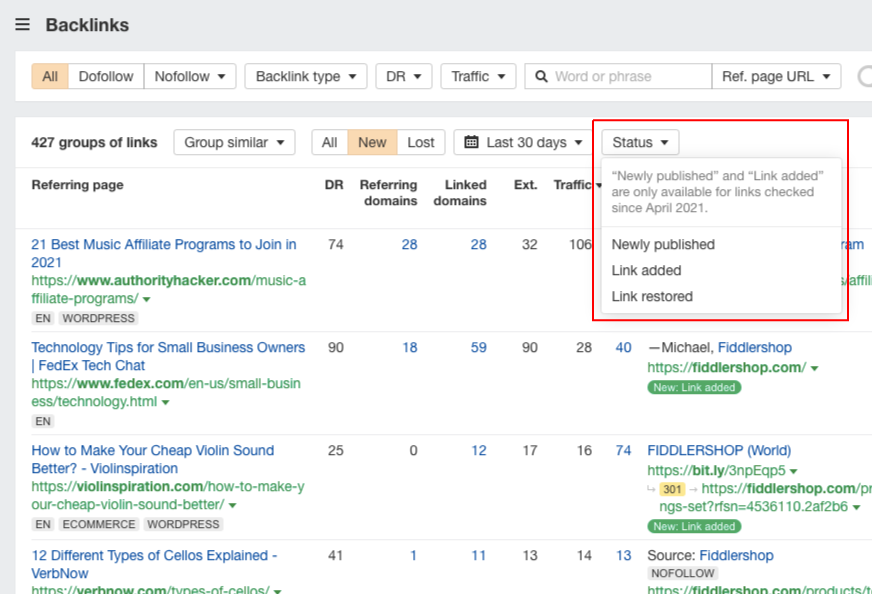
Assess each new link to see if it's worth reaching out to.
Check if the link is replicable.
Can you request a link from the page and let your website be added as well?
Is it a new guest post they recently published? And is it a blog you could also contribute an article into?
The key is to understand why the publisher gave the link to your target domain. And assess it based on your resources if you could also acquire the same type of link.
20. Use "Book Crowdsourcing" Technique
Are you familiar with "Think and Grow Rich" by Napoleon Hill?

If you are reading personal development books, you're probably familiar with how the book is created.
It was basically Napoleon Hill interviewing top entrepreneurs on how to get rich and putting all their insights into one book.
To date, Think and Grow Rich has sold 15 million copies.
Let me ask you one question:
What if you could do the same?
Interview industry experts, practitioners, and thought-leaders in your space.
And curate all their insights into one book.
If you've heard "round-up" posts, you know it's the same as this.
But this "book crowdsourcing" technique is quite different.
It's a lot higher value than a simple "round-up" post article.
Because it is packaged in a well-crafted book.
Take a look at this:
It's not the type of round-up post you see elsewhere.
The book is also available on Amazon and Lulu — which increases its perceived value in the market.
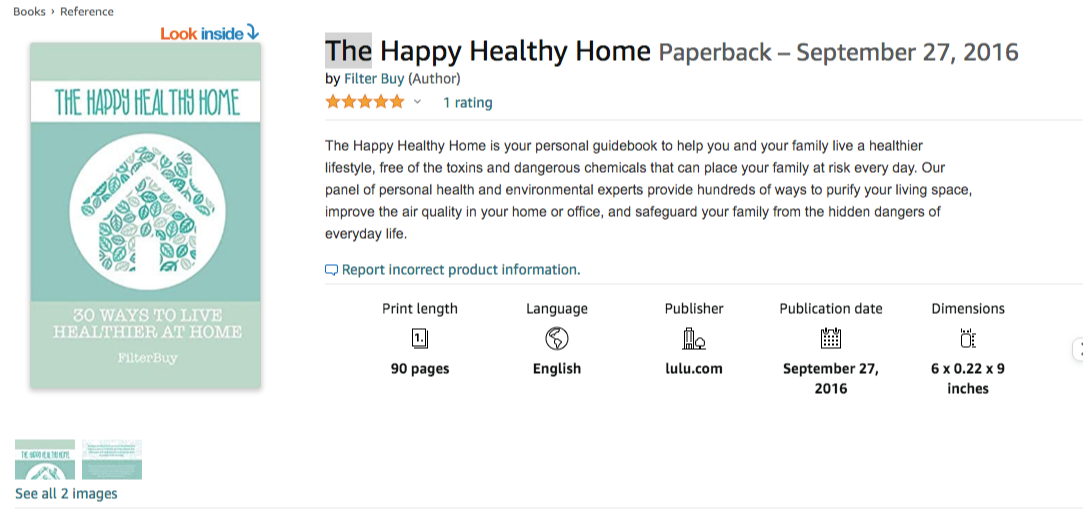
Use this "Book Crowdsourcing" Technique for your eCommerce blog.
Find thought leaders in your industry.
Reach out to them and offer "being featured on a book" as the value proposition of your email outreach.
That way, it stands out among all "interview pitches" they receive.
Then collect all their insights.
Curate, format, design, and publish a book.
21. Add FAQs On Your Blog
People want quick results.
Case in point:
Featured snippets.
Most featured snippets that you see on Google search results are quick answers to frequently asked questions.
And when they rank and get referenced by other publishers, pages with FAQs get backlinks.
How you can start with this?
Discover keywords with featured snippets on search results.
Ahrefs can help you with this.
Check "featured snippets box" to only see keywords with featured snippets on results.
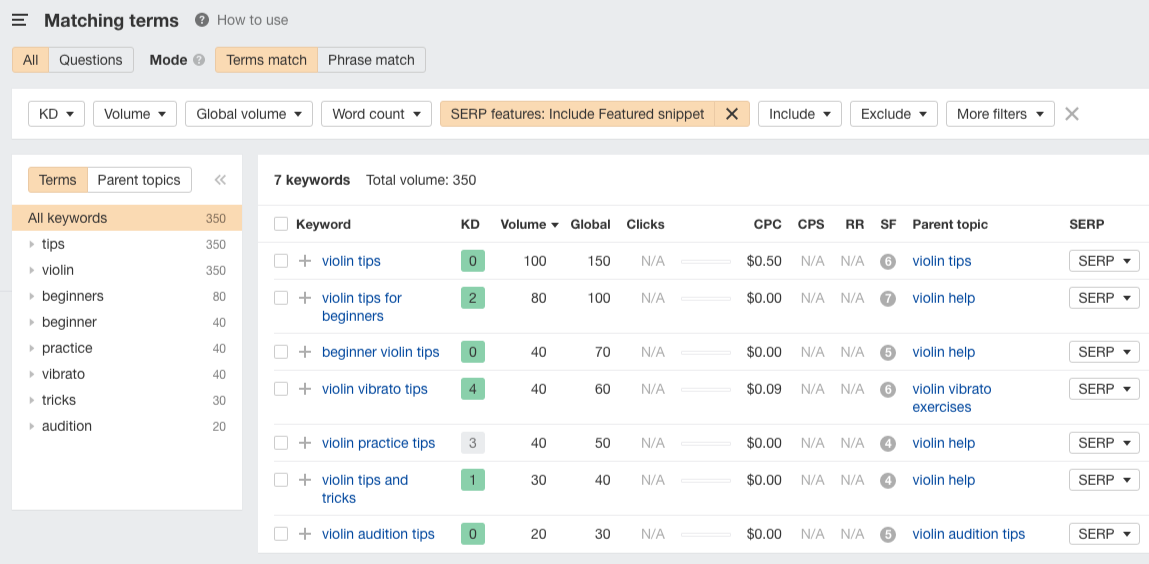
Find what's relevant to your brand. And publish FAQs, included in an article or page.
You can use SEO Booster to help optimize any of your important pages.
Conclusion
I'd like to hear from you.
Which link building strategy you'd like to execute for your eCommerce website?
Would you like to get featured on "where to buy" pages?
How about tapping the "going green" market with your content?
Leave your insights in the comment section below.
The No Non-Sense Guide to Broken Link Building
Broken link building has been around since 2010. From that time on, a lot of things had happened that changed how we approach this link building tactic. Nuances in methodologies, additional best practices, and questions of whether the said technique is still working now, are just a few things we will cover in this post.
Table of Contents
WHAT IS BROKEN LINK BUILDING?
WHY BROKEN LINK BUILDING?
WHY BLB ISN'T WORKING FOR ME?
STEP BY STEP BLB GUIDE
1. FIND A TOPIC THAT SERVES A SPECIFIC GROUP OF LINKS PAGE CURATORS
2. CREATE CONTENT ABOUT THE LINKABLE TOPIC
3. PROSPECT FOR LINK OPPORTUNITIES AND QUALIFY THEM
4. FIND BROKEN LINKS, CONTACT PERSONS AND EMAILS
5. CONDUCT OUTREACH
6. MONITOR LINKS
Before we get too far though, you might want to know how we define broken link building.

Broken link building is a link building tactic where a person contacts a webmaster who has a broken link in his or her website and recommends a replacement of link/s that include his/her target page.
That seems a very simple thing by definition but actually, the work to execute all steps behind that takes a lot of effort.
Though it may be time-consuming, if you understand the value that broken link building can provide to webmasters, it'll give you the confidence of its effectiveness as a link building tactic and that it can also be implemented to many websites if found to be fitting to use.

Broken link building helps fix the web by letting webmasters know of their broken links and their best replacements.
Broken links (or linkrot as some refer to it) happens when a web page becomes permanently unavailable, due to one of many reasons:
- Expired links; temporarily created for a short-term purpose (for example sponsorship page)
- Content is intentionally removed by the webmaster.
- A website where the broken link is hosted may be closed or taken down by the owner.
- A website changed its domain name (some links are not redirected to their corresponding pages in the new website).
No one wants to have broken links in their websites which users would find to be of no value because they don't see the exact resources they are looking for.

If you have helped someone fix his/her links, you will be reciprocated by adding your recommended resource on his/her page (which most of you will recommend a link to your target page).
Reciprocity matters in link building. Value to value. If you help someone, you will be helped. That's why broken link building works.

This question has been raised several times. From a perspective of a link builder who practices broken link building, there are some common misapplications I see of this technique.
First is tying any content type to links pages curators.
Who is a link page curator?
A links page curator is a type of linkable audience (from the term itself) curates links in a specific page about a particular topic for the sole purpose of giving its intended website visitors references and resources that they can use either for personal consumption or business research.
A link page curator is attracted mostly to educational guides or academic-driven content.
Suggesting to them an infographic to be added as a resource to their links pages is less likely to accomplish its linking purpose unless it has a text section (beneath the image) that has comprehensive information about the topic.
The best way to increase the likelihood of acquiring resource links is to produce an educational or academic-driven type of content that is more comprehensive than what other publishers create (more on that later in this post).
Second reason why people think broken link building doesn't work for them is the difficulty to find a linkable topic that fits your brand.
There are cases wherein you wouldn't find a topic that is highly linkable (i.e. there are a lot of links page curators linking to content on the topic) and that also fits directly to your brand.
The solution here is to think of a specific linkable audience and brainstorm ideas on how you can best serve them. Check if it's tangentially relevant to your site. (I'll show you exactly how you can execute that part later).
For now, let's dive into how you can implement broken link building tactics to your website.

There are a lot of published resources on executing the exact process of broken link building. But one thing I noticed is that these don't give you the exact picture of implementation from different role perspectives.
So as you go through each step below, you'll see some tips on how to do the exact process based on your current role.
if you are an agency marketer/SEO
if you are an In-house SEO
if you are a business owner
If any of these phrases is not included, the tip applies to all.
That avoids you saying, "I can't do this because I'm not ___."
Note: If you have any questions about how you can do that yourself or with the help of someone, feel free to contact me.
Let's start with the process.

You don't have to go too far. Start first with your informational keywords.
If you have keyword excel sheets in place. Begin with that. Go through your list and find top-of-the-funnel keywords.
Use the inurl:links.html as your litmus test to check if a topic is serving a number of links curators.
Why links.html? Because most links pages are in their HTML page, not adding .html may leave off some good numbers.
So what's a good number of indexed links pages to find?
Anywhere from ~300 to ~500 is feasible. More than that is highly linkable.
For example, if you searched for inurl:links.html "sleep apnea", you'll find that there are 552 available links pages indexed in Google (as of the time of this writing).
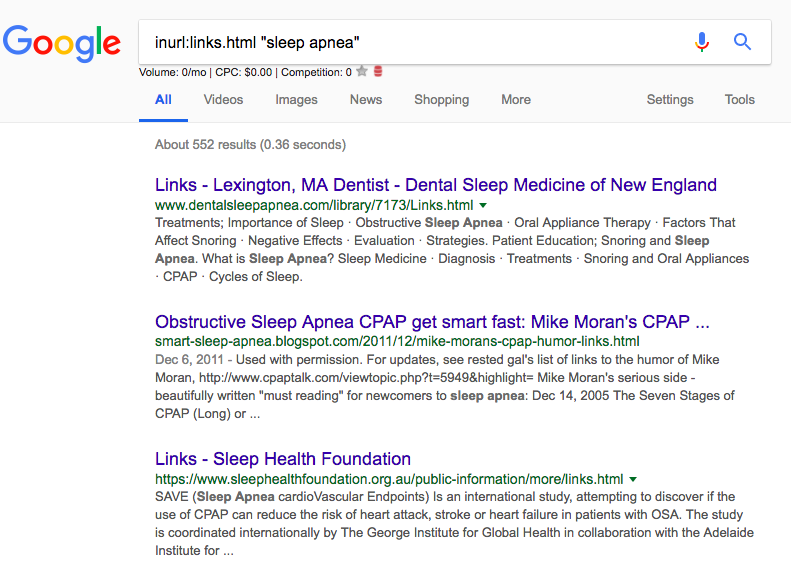
For the topic, "bruxism", the number of indexed links pages is 272 (as of the time of this writing).
WHY LINKS CURATORS LITMUS TESTING IS IMPORTANT?
If you find there are enough links curators who are waiting to link to your content asset from their links pages, you can ensure that the topic you'll be creating is worth your investment to create.
No waste of time and money. That doesn't mean it always attain success, but at least there's a confidence of results when you pursue a topic that is linkable because it has an existing audience giving you links. You are proving linkability in your content.
WHAT IF THERE ARE ~300 LESS LINKS CURATORS AVAILABLE ON MY TOPIC?
This question may arise, and there are two answers for that.
One is doing a Google search for the topic. This is to ensure that there are still links page curators that are available who couldn't easily be discovered through Google search and could only be found through reverse engineering - more on this later.
Going back, if you use Moz, you can see immediately the number of referring domains each page on SERPs is getting.
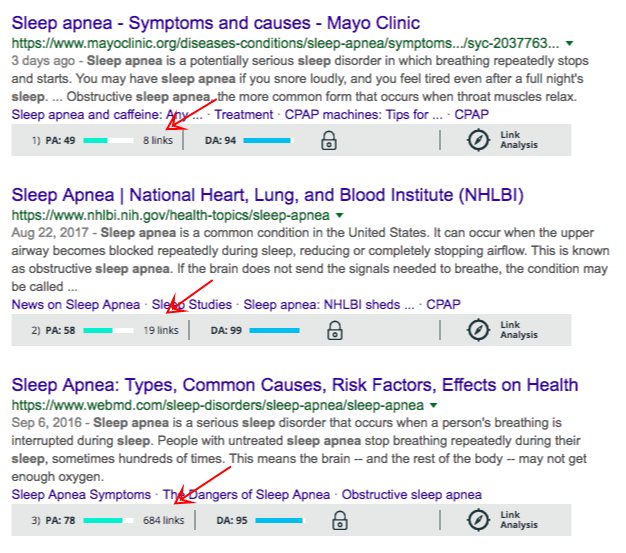
If you find that each page has at least 20 plus unique referring domains, you can further investigate its linking pages.
Otherwise, you find another topic keyword and run it through the process again.
Further investigation involves finding at least 100+ links pages that have a specific page on the topic. The reason for doing so is to ensure that when you promote a content piece, there's an available audience dying to link to your content.
How to do that is to simply grab each URL in SERPs and check using a link checker tool if there are links/resource pages linking to the URL.
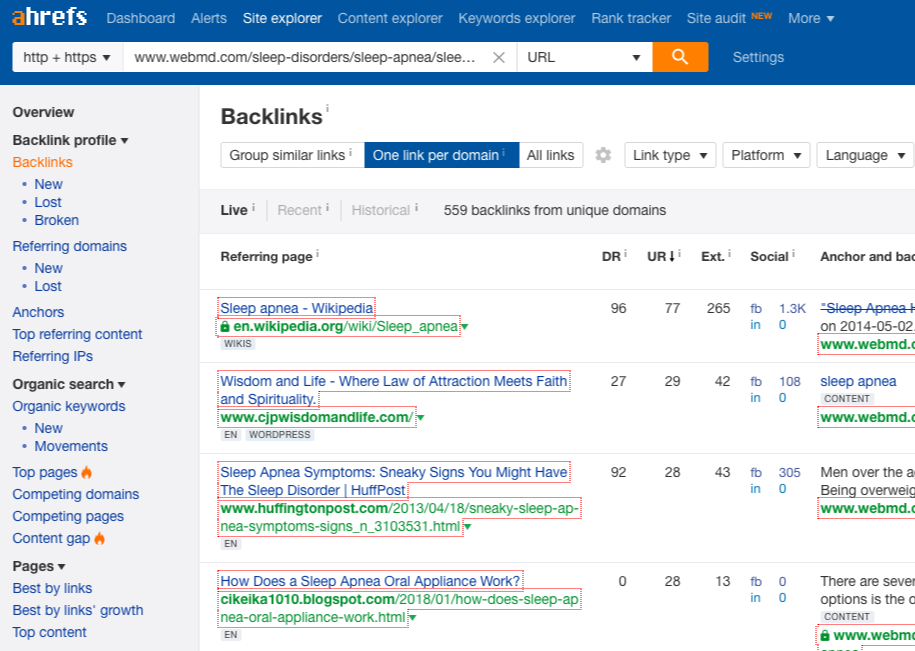
My tip here to quickly find links pages is to use the search function of Ahrefs.
Type in links or resources to find resource pages with links or resources in their titles.
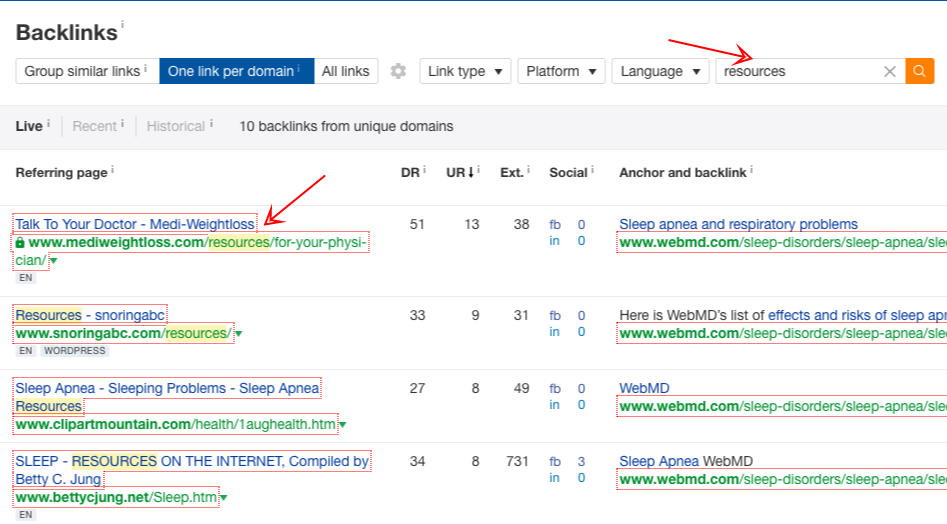
Collect every links page you find and qualify as you land on the page or choose to qualify them later. You can skip to this section of Link Qualification stage.
Make sure you create an Excel sheet purposefully for those links pages.
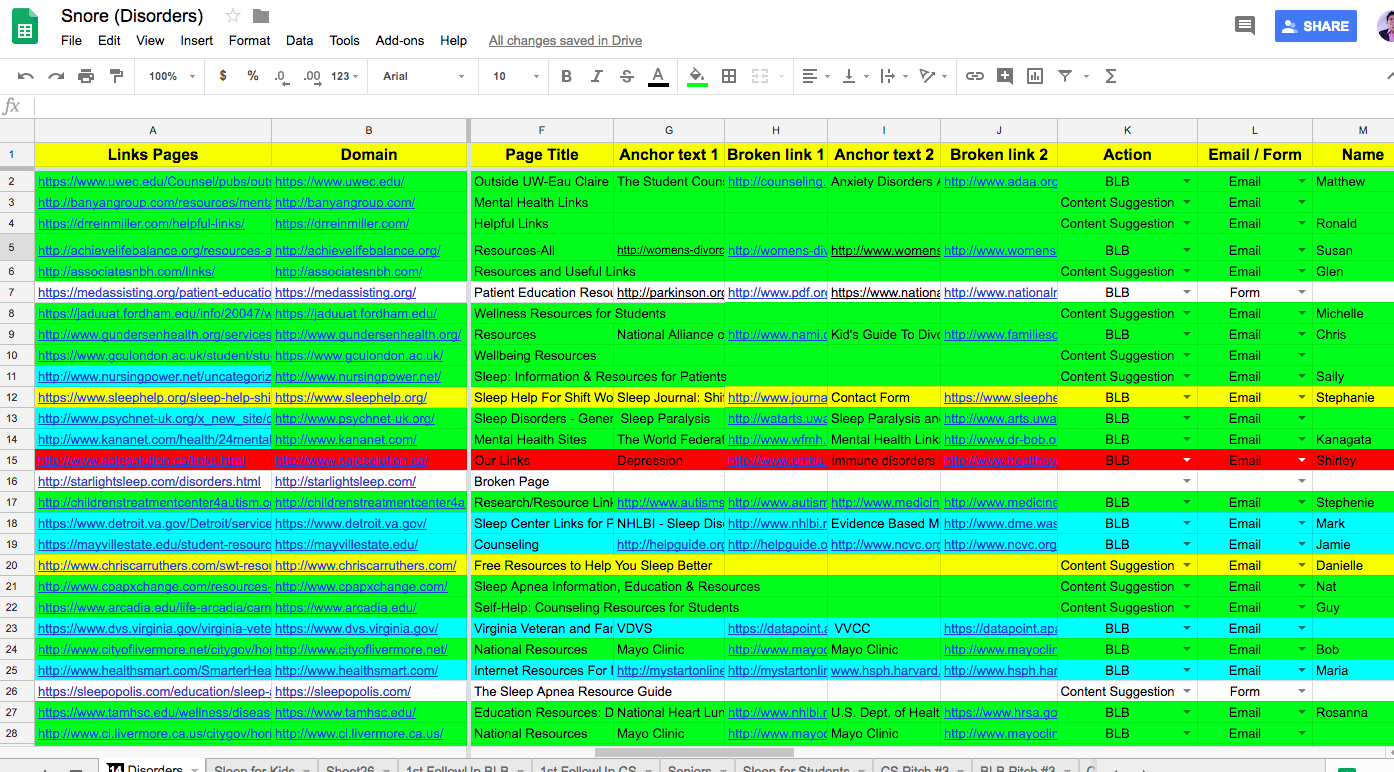
If you have collected at least 100+ links pages (qualified), then the topic is suitable for broken link building.
WHAT IF THERE ARE ~300 LESS LINKS CURATORS AVAILABLE ON GOOGLE SEARCH AND ~100 LESS LINKS CURATORS THROUGH REVERSE ENGINEERING?
If you find fewer links curators on the topic, you can still create a content piece but you won't expect many links from links pages given that not all of them would link to you. There is a conversion rate of around 3-5% to be expected from this topic depending on the number of emails you send to qualified links pages.

Hopefully, you now have an idea of identifying if a particular topic is suitable for a broken link building campaign. Now comes the hard part - actually creating the content.
You know this, you don't just have to create content. It has to be 10x better than other content pieces on that subject matter.
How can you do that?
If you are a business owner or if you are an agency marketer/SEO, you can try hiring academic-industry writers from freelancing websites.
You probably have done this because it is way cheaper than hiring full-time, in-house writers. It may not be feasible at first, to hire a full-time in-house writer given there's still less bandwidth of work for content writing.
Academic industry writers can produce educational guides better than Fiverr generic writers. The cost of hiring the former may be higher than the usual rate you pay for a writer, but you can expect higher quality output from them.
Now the question is, how can you find an academic-industry writer?
There are hundreds of ways on how you can look for them but there are methodologies I've found helpful in looking for the right academic-industry writer.
HIRING ACADEMIC WRITERS IN UPWORK
First is by using Upwork as your hiring channel for writers.
Upwork is a top freelancing website wherein you can post a job that can run either hourly or project basis and that targets freelancers in a specific industry, skill set, and level of skills you're looking for.
The process of hiring in Upwork is simple:
- Identify who you need to hire.
- Post a job board.
- Interview people
- Hire your preferred freelancer.
For a more detailed reference on how to post a job on Upwork, here's a resource from the website that you can check out.
To give you an insight into how it works specifically when hiring an academic-industry writer, below is an example of a job post that I posted.
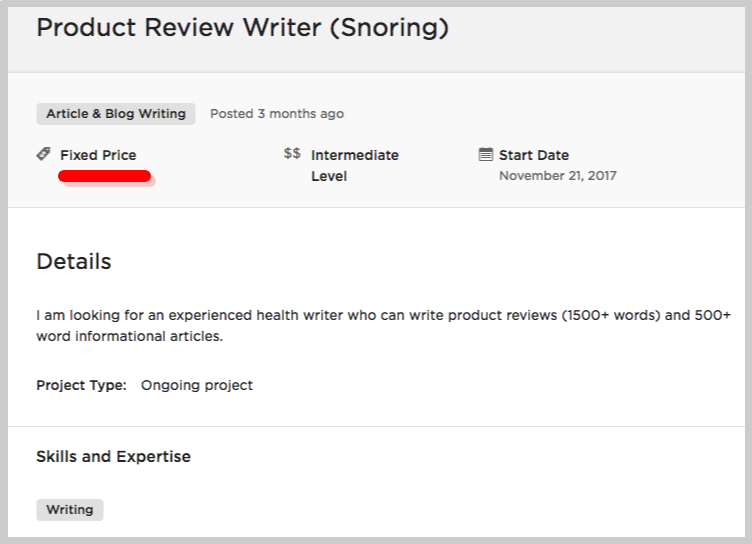
Simple note: The writer I was looking for was specifically tasked to write product reviews and informational articles, but later on, was assigned to create educational guides for BLB.
As you can see above, the post is very simple. It covers almost everything you need to know about the job.
But what I'd like you to take note of are the following points:
- Title - the key here is to be very specific with the kind of writer you're looking for. Cater the job title to a niche writer, that would mean not just a health writer, but someone who knows specifically about sleeping or psychology - as another example.
- Fixed price - depends on where you're more comfortable with, but if a fixed price is what you prefer, you can even negotiate that further to cost per word (e.g. 0.027cents per word).
- Level - you need someone who is an intermediate or an expert on the subject to write comprehensive and academic content pieces, particularly on jargon-heavy topics.
INVITE FREELANCERS TO A JOB POST
One trick to ensure you're making the shot of hiring a great industry writer is to find freelancers and invite them to apply to your job post.
Instead of waiting for freelancers to apply to you and start filtering which ones deserve the slot, you can initiate looking for the best ones and negotiate
Most skilled freelance writers are not applying massively to relevant job posts, but some even are getting inbound potential clients that hire them.
So if you proactively invite people to apply for your job, you increase the possibility of getting skilled freelance writers.

Once you've hired a freelance writer based on a certain skill set and expertise, it's time to create the content.
CONTENT CREATION PROCESS
If you're an agency or in-house, there are other roles in the team you should consider who can aid you with the content creation process - starting from research down to publishing.
It's critically important not to overlap tasks of each others' roles to get an easy flow of work and to excellently complete each content writing project.
As a small team, the SEO “the one who actually did the research” creates the outline and then just send it to the content writer for completion. If the content requires creative work, our designer has to come in and collaborate.
- Jayson Bagio, Founder of Gobiggr
The distribution of work depends on the internal process of a team.
However, the quality of output should be checked if it's going to be linkable content.
One way to ensure the quality of your content piece is to use a framework where you will base its success probability.
USE A QUALITY-CHECK FRAMEWORK
One framework that has been mostly considered is the Made to Stick's SUCCESs model.
The idea is to run a quality check of your content based on these six factors:
- Simple
- Unexpected
- Concrete
- Credible
- Emotional
- Stories

If you're a business owner, you may not have the luxury to go over each content piece and run it through a quality success framework. But having someone to look after the writer is advisable, either you get a senior editor or copywriter just to ensure the content piece can pass a certain standard of quality.
Aside from internal checking of quality, it's also important to ensure your content piece is far more comprehensive than other content assets on the same topic.
You can check what's lacking in other content pieces that you can add and emphasize to your own content piece.
For example, we've recently created a guide on types of sleeping disorders.
By looking at other content competitors, I've seen that they haven't had a huge list of sleeping disorders with their respective categories. They also lack customized visuals to entice social sharing.
With those things in mind, we've produced one that's far more comprehensive than other content assets - not just bigger, but better.
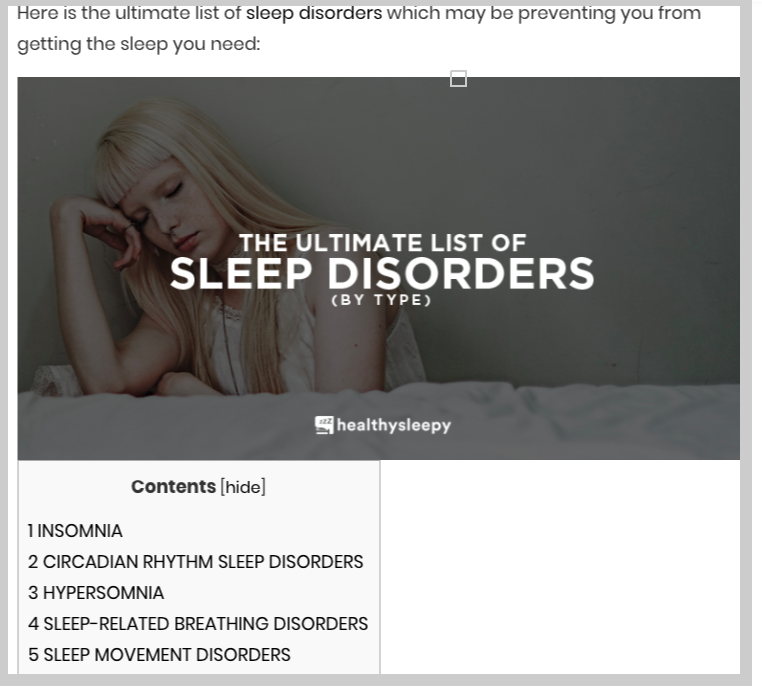
Note: If you do well know your industry, you need to provide key points to your content writer as to the format and flow of messages based on how you think your content can be best consumed by your target audience.

You may have a linkable content asset, but without a list of link prospects to reach out for content promotion, your content may not see the light of the day.
So where can you collect a list of link targets?
RESOURCE LINK PROSPECTING METHODS
A. Save your link targets as your early list
It begins when you run a link curator's litmus testing.
As soon as you are checking if there are existing links/resources pages on the topic, you can immediately create a list out of that. Save them as your early targets.
You can use Ahrefs or Majestic when checking links pages or resources pages on pages ranking for a topic you are targeting. You can also use Link Extractor by Sitechecker for this.
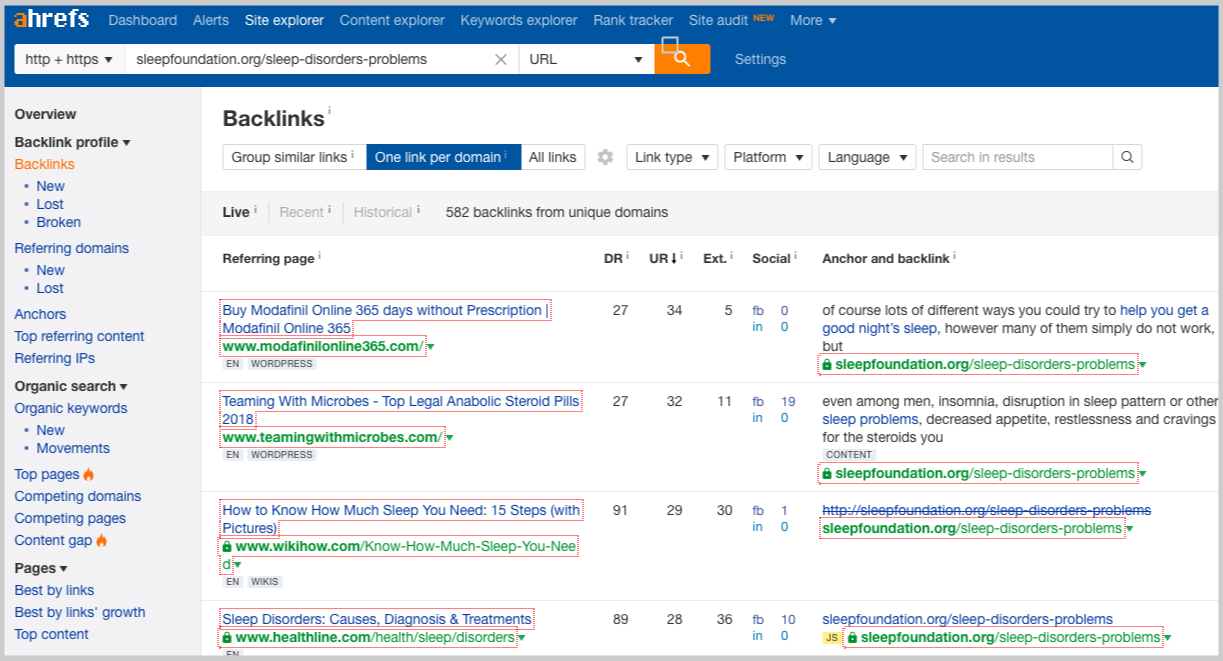
B. Reverse engineer content competitors
Content competitors are content assets that discuss the same topic as your content piece.
Find them either by using a Google search or by looking at related resources on a target page for links.
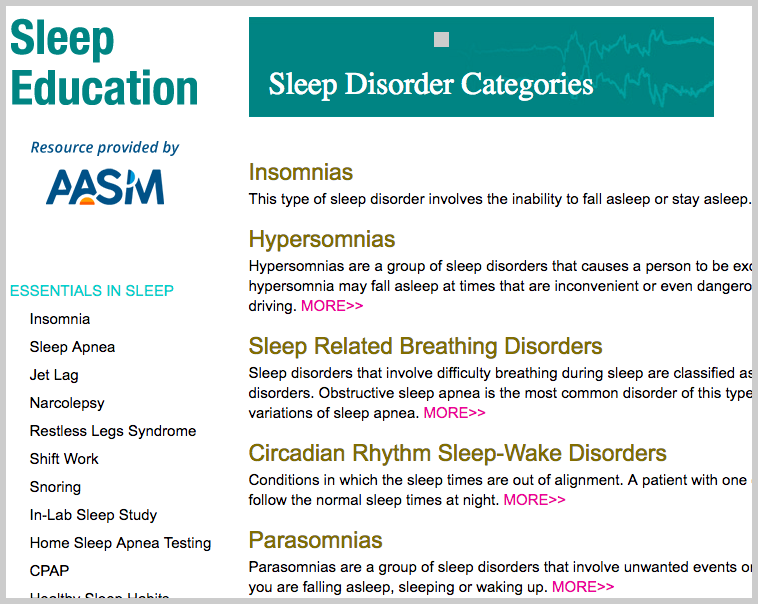
Once you find them, go and check all backlinks using a link checker tool.
Grab only resource pages. You may use words like "links" or "resources" on the Ahrefs search bar to quickly find them.
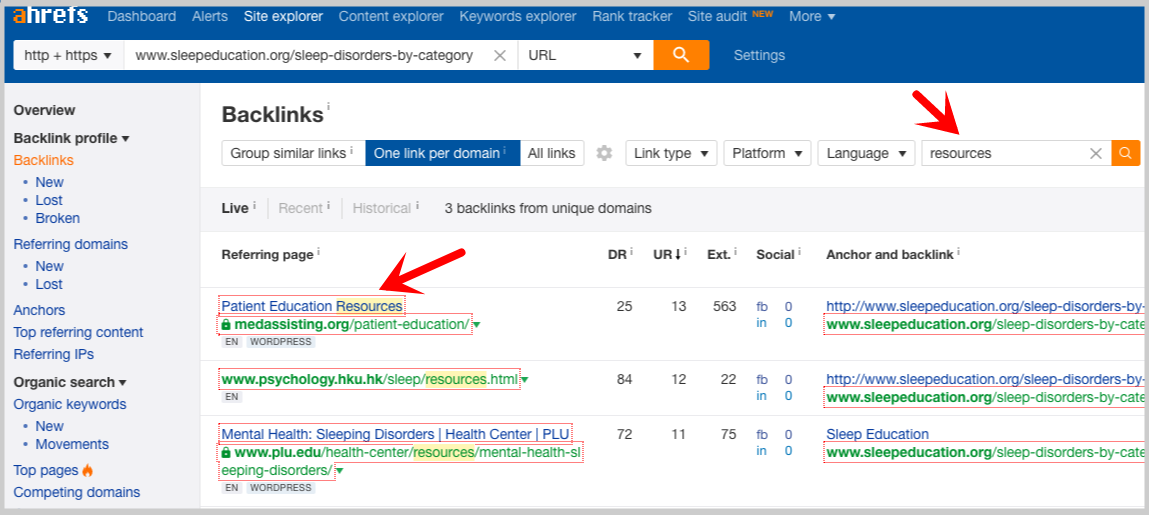
C. Check for broken links on your initial list of resource pages.
You may find that there are other external links on a specific section of the resource page wherein you want to get a link from.
See if one of the external links is broken either by clicking on them or by using LinkMiner to scan the page for any broken links. 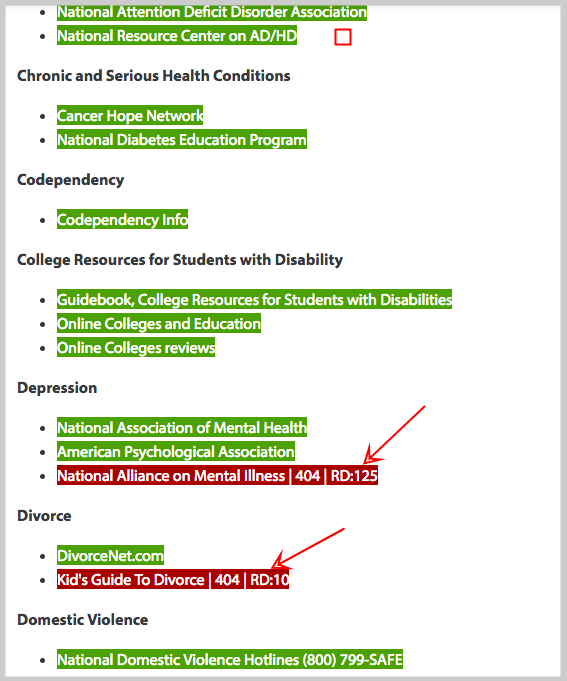
If you find a broken link, check if there are referring domains linking to it. It's a good opportunity then to find more resource pages.
D. Use Google search queries to find resource pages in your niche.
This is the most common type of link prospecting and one that will give you tons of link opportunities if you use appropriate search terms and advanced search operators.
There are many link prospecting search terms to finding resource pages.
But to help you with this process, I've shared a spreadsheet tool below that semi-automates the activity of using advanced search ops (specific to BLB) h/t to Jayson Bagio.
All you have to do is to insert a keyword/topic on Column A and click on Column F to direct you to the search result.
When you land on each search result page, you'll find relevant links pages. Go and check each one and quality according to your metrics (Section: Qualification Metrics).
E. Use Citation Labs Link Prospector
If there's one tool I'll recommend in finding hundreds even thousands of links pages, it is this Link Prospector by Citation Labs.
It's nothing new to advanced SEOs out there, but if you're starting out in broken link building, the said tool can help you maximize your prospecting efforts and save hours of time spent.
Here's a tutorial video that shows you how to use the tool properly.
QUALIFICATION METRICS
Before giving you metrics to consider when qualifying resource pages, the reason why I didn’t' separate Link Prospecting and Qualification, is that you can execute them simultaneously.
When you land a resource page, you can quickly qualify it according to your metrics.
This saves you a lot of time in qualification, as you don't have to assign a team member to do this task alone - qualifying each resource page you've collected.
Though it requires practice to do that, it's something I'd recommend SEOs to master over time.
Going back, there are qualification metrics that need to be considered in broken link building.
A. Relevance - top priority!
There are three aspects of relevance we need to talk about here.
First is page-level relevance.
A links page that is highly relevant to the topic of your content piece increases your chances of getting a link from that resource page.
Let's say, you own a content asset about the types of sleeping disorders. A highly relevant page for that is a resource page on sleeping disorders or sleeping issues. In this case, it makes sense for the webmaster to link to your content asset because it actually what he covers on his page.
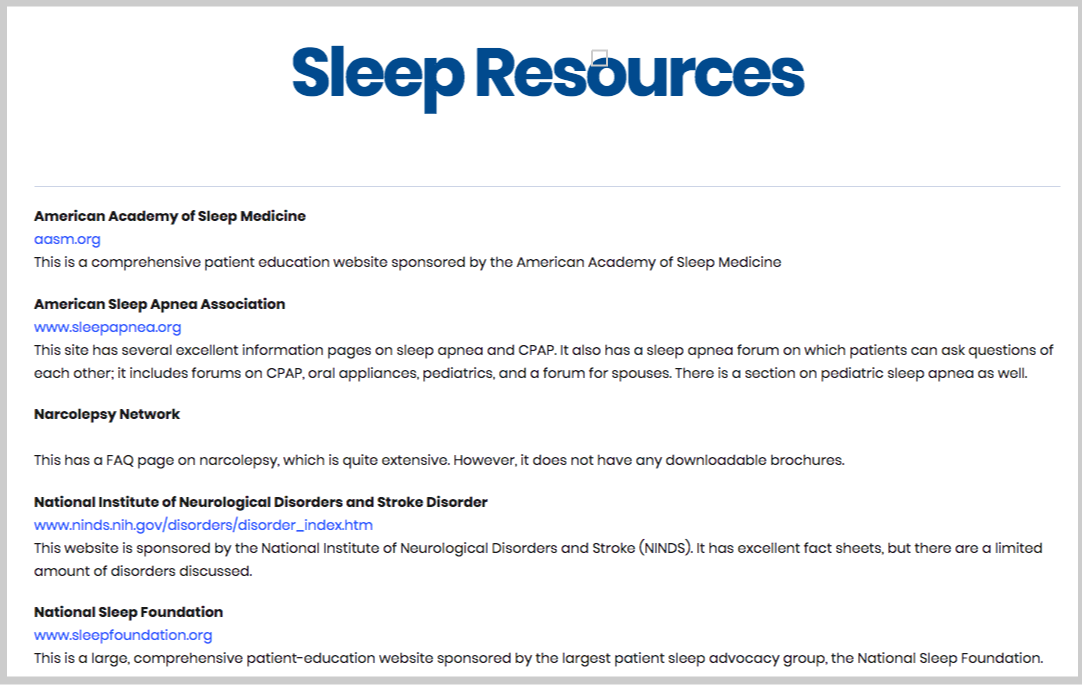
Second is category-level relevance.
There are resource pages that don't cover specifics for your content topic but have a section for it.
In my given example, a category-level relevant page is a resource page about disorders. It's not necessarily about sleeping disorders but if it has a section on sleeping disorders, then it could be considered as a good link prospect.
B. Use tool ranking scores
Moz has DA and PA. Ahrefs has DR and PR (know how their new DR is calculated).

It's been a discussion in the SEO community on which one to use for link qualification. Is it Ahrefs metric or Moz metric?
To be honest, I personally don't have a specific answer to that.
Given Moz has built its brand and its metric is dominantly used by SEOs. If you're an agency, you'll talk with clients that highly consider Moz metrics as their metric.
You may have to educate your clients to consider relevance as your sole metric or sole metric + other tool ranking scores.
If you're in-house and if you're a business owner, you can have your own list of metrics, i.e. relevance alone, Moz DA + relevance, Ahrefs DA + relevance, or others.
Note: Later, I'll show you a visual resource on what metrics we use for broken link building.
C. Ask yourself, can I really obtain a link from this page?
Not all highly relevant .edu DA70 resource pages will give you links. But there are signals on a resource page you have to see that will help you determine if that page is obtainable for a link or not.
C. 1. Last Updated
There are resource pages that explicitly note the date their page was last updated. If you reach out to a webmaster that has a resource page last updated in 2008, there's a little chance you'll get a link from that.
The more frequent an update on a resource page, the more receptive it is for new resources or links.
C. 2. Matched Content
Are the external links on the resource page match the content you want to build links to? Are they page-level relevant or category-level relevant? If you say yes to these questions, you have a chance to obtain a link.
C. 3. Explicit Notes
Sending pitches to webmasters with no clue of whether they entertain new resources or not is difficult. But there are times when resource pages explicitly state that they are open to add new links or new resources to their links page.
It increases your chance of getting the link, given that the webmaster is open to any link suggestions. Though not a guarantee of link success, definitely increases your obtainability.
So those are signs that you can acquire a link from a resource page.
Now let's move on to some red flags that once you notice or see on a resource page can immediately give you an idea that's it's not a fit for your content piece or it is low-quality.
Red Flags to look for:
- Too many outbound links (150 links or higher)
- Outbound links pointing to low-quality or spammy websites (e.g. .blogspot websites)
- Page isn't properly designed
- Page linking to general lists or resources (no specific topic that they cover
- Page linking only to professional organizations, .edu, or .gov pages.
- The old version of the HTML page signals that the owner no longer updates it.
When you landed on the resource page, you can immediately see some of these red flags. You may hover your mouse to check pages' URLs for a glance.
You can always move on to your next link prospect on your list if you found the current one is not a good fit.
This simple activity to add to your process is helpful for two reasons: first, you ensure that links that'll be added to your link list is definitely high-quality and second, it saves you minutes/hours of time - otherwise, reaching out to them will add up to your outreach hours.
For more visual learners, and to provide a resource for this process, we’ve created the following handy flowchart for your decision tree on whether or not to collect the resource page.
Case to case basis, there are other factors to consider but this guide should give you the thought process of link qualification.
Now that you know how to prospect for resource page opportunities and qualify each one of them to suit your link objectives, it's time to find any broken links (if there are existing ones on a page).
FINDING BROKEN LINKS
You don't have to manually open each external link to a new tab to see if they're working or not. It’s pretty time-consuming if you do that.
There are tools to help you with finding any defunct (broken) links on your prospect page.
First is LinkMiner. It is created by Jon Cooper of PointblankSEO which only requires a click on your toolbar then the tool itself will automatically check the entire page for any broken links and highlights them in red color.
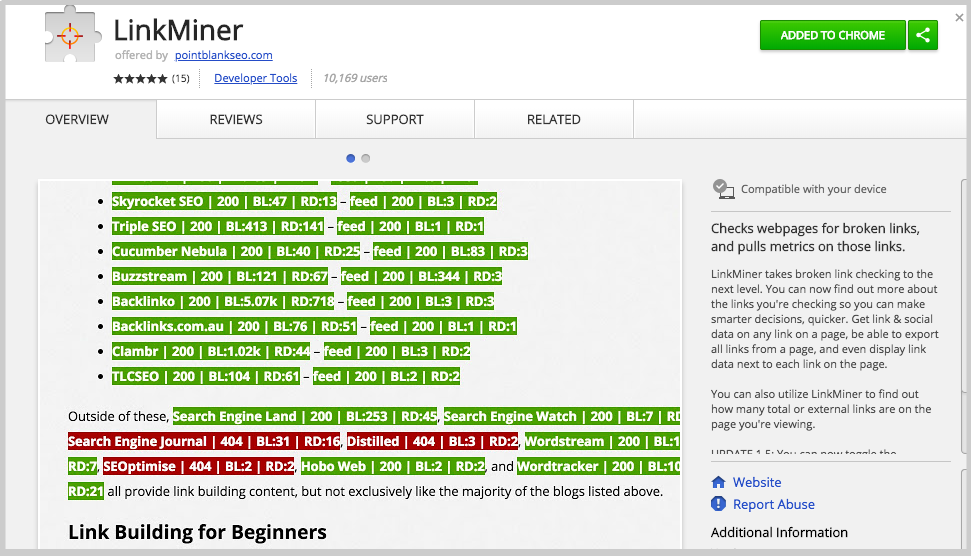
Next is AtomSEO Broken Link Checker (h/t to Jayson Bagio). Another Chrome Extension tool for finding broken links which you can also run using a keyboard shortcut.
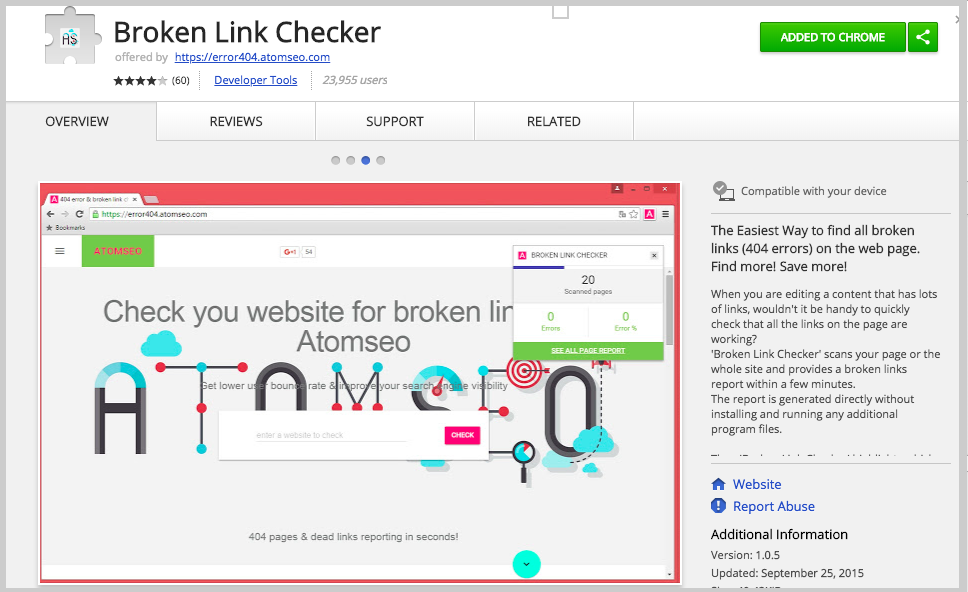
Note: It's important to check again the external link if it's a 404 or a live page. Those aforementioned tools aren't perfect, they may at times, highlight links as red (meaning it's 404) when they're otherwise not.
CONTACT FINDING
Next is to find the right contact person and look for his or her email address.
There is a lot of advice about this matter. Many SEOs recommend using a contact finding tool to scrape any available email addresses on a given website and all you have to do is to choose one or two you can use for outreach.
I've been doing outreach for years and I'd say that one factor to a failed outreach campaign is reaching out to the wrong contact person.
No matter how linkable your content piece is, if it's not seen by the right contact person who actually manages the resource page, it won't acquire the desired link.
The best way to find the correct contact person and his/her email are to manually search for on the page/site.
I'm currently working with a VA whose role is to find broken links (if any) on resource pages and look for the right contact persons with their respective contact emails.
If you have a documented process, it'd be easy for you to delegate this task to a team member/VA whether you're an agency SEO or in-house.
So here are two document processes for contact finding and broken link finding that I personally use.

This section focuses on conducting outreach in Gmail. It is geared towards SEO teams with ~2 link builders and those agencies who prefer a low-cost approach when doing outreach.
If you're currently using premium outreach tools, I recommend reading this outreach guide in using Buzzstream at PointblankSEO.
For Gmail users, continue reading.
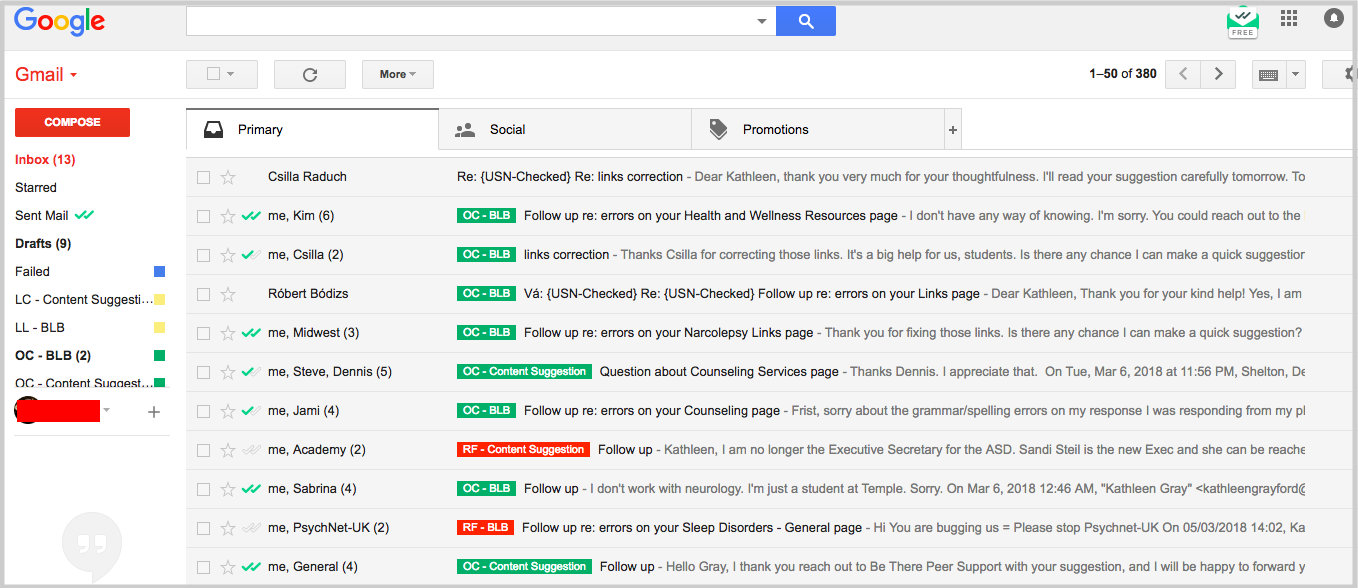
First off, Gmail is fascinating because it is free and is easy to use. The orientation for its usage is so low that if you hire someone for outreach, you don't have to spend lots of time training him/her on how to use the platform.
However, if you don't have set up a workflow process that organizes everything from the initial pitch to converting the links, you'll end up wasting time in identifying the outreach status level of every conversation.
The key to make Gmail organized for outreach is to use Labels.
Labels
Labels are a cool feature of Gmail that allows you to “segmentize” your emails by their current relationship status. It means that when you see your email inbox, you know that a thread is for a particular link building campaign (client), a thread has gotten a link or a thread is waiting for a response from the recipient.
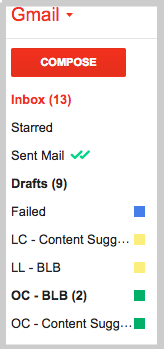
Organization in Spreadsheets
Given that you don't have a platform to collect your link targets (unlike with Buzzstream), you should have a spreadsheet for collecting link prospects and for tracking your outreach relationships when you pitch them.
For example, at SharpRocket, we've been using colors to highlight a certain row in Spreadsheet and know if it's been reached out already, needs a follow-up or we had just acquired a link from a resource page. This allows our outreach specialists to know which stage a prospect is currently in.
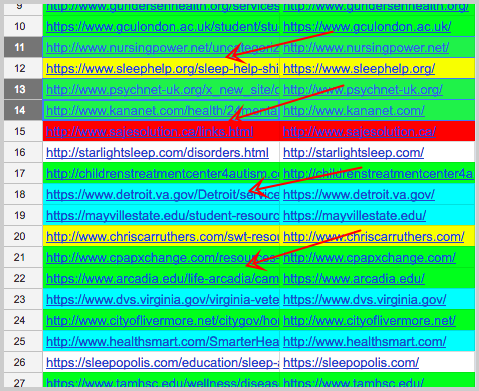
We also created a column for the status of a link.
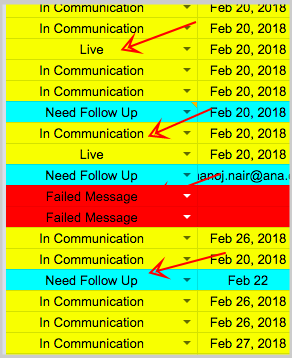
These two micro-activities to our outreach workflow help us to avoid confusion and manage our link builders' performances properly.
Once you've set up labels and spreadsheets, it's time to pitch your outreach prospects.
Personas
You don't start your outreach by creating email templates, though that is important and should primarily be used to scale sending off your initial emails.
However, if you want to create initial emails that are relevant and that catch the attention of your link targets, you first have to start with defining your outreach personas.
Outreach personas are commonly used to better understand a certain industry's outreach market's behavior based on demographics, needs, and interests.
For example, Jayson Bagio at Gobiggr uses four personas when reaching out to contact persons of .edu websites.

As you can see, these four student personas have different needs and interests when pitching link curators on .edu websites, whether it's for a research or project purpose or simply just recommending a resource they've found useful on their behalf.
The other reason for using outreach personas is to test which persona is more receptive to outreach prospects and could more likely acquire links in the process.
By doing so, you can replicate the same process on other link building campaigns (not only for BLB) to increase your response and link acquisition rates.

Once you're done with creating your outreach personas, your next step is to start pitching your backlink targets.
There are two outreach methodologies that you can use: broken link outreach and content suggestion.
Broken Link Outreach
You are applying here the law of reciprocity. That is when you tell the webmaster which of his/her links aren't working (and sending appropriate link replacementsl), he or she will be more likely to return a favor to you - that is, to include your content asset as an additional resource to his page.
If you're eyeing for a template in this post, here's one good example from Jon Cooper that we've been using effectively for initial resource link pitching:
Initial template with broken links:
Subject: Found an error on your [Resource Page Template]
Hi [First Name],
I was browsing the [Page Title] page on your site when I encountered a few broken links. I didn’t know if you’d be interested in knowing, but if you are, I’d be happy to point out which ones I stumbled across.
-[User First Name] [User Last Name]
Keys to Success:
- A/B test your initial emails' subject lines (you can use Found a problem on your {Resources} page or Found a 404 on your page).
- Not aggressive, but polite and brief email message - coming off as a real human.
- You can customize based on your persona but the principle of baiting a response by saying you've found errors is still the same.
By this time, you're expecting responses like, "Please let us know which link is broken".

Your response to that is based on his/her response. But basically, you can use a semi-template to answer the question, "Which page are you referring to and which link/s is/are broken?".
Template response with broken links:
Thanks [First Name],
I’m happy to send them over. The ones I encountered were here ([Linking From]):
- [Broken Link #1]
- [Broken Link #2]
- [Broken Link #3]
Hope that helps. Also, is there any chance I could make a quick suggestion? *CRAFT CUSTOM FROM HERE*
Well, if I come across any other website errors, I’ll be sure to reach out.
-[User First Name]
Here's what this template looks like in actual outreach:

Content Suggestion
Your main value is to offer a content asset that is worthy to be added on the resource page, and that is dependent on how comprehensive and educational your content is.
Below is a template you can use as your initial pitch for links pages without broken links:
Hi [First Name],
I was checking out some of the resources listed on the [Page Title] page of your website, and I noticed that I knew of a couple of resources that might be worth adding. Would you be interested if I sent them over? If not, I totally understand, just thought it wouldn’t hurt to ask.
-[User First Name] [User Last Name]
We've encountered several responses wherein they don't accept new link suggestions from outsiders, so another way to start your pitch is to ask if they're still updating their page (A/B test these two initial outreach templates).
Hi [First Name],
Just saw your note on your Resources page about new suggestions, so thought I’d check and see if you’re still updating the page. If you are, I'm happy to pass along a few new resources for review. If not, can’t say I didn’t ask!
-[User First Name] [User Last Name]
When the webmaster replies, your response should be as direct and short as possible, but ultimately explaining how valuable the content asset that you are suggesting.
Response without broken links:
Thanks [First Name]!
*CRAFT CUSTOM FROM HERE*
Well, thanks again for your time, I really appreciate your consideration. Anyways, hope you have a great rest of the week!
-Jon
An example of an actual response that got us a link is here:
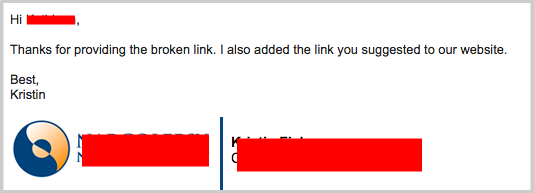
For many reasons, some webmasters will not respond to your initial emails. You then need to follow them up.
Your follow-up isn't to harass the person to get back to you immediately. We are human beings and as you come off as polite as possible, you're more likely to receive a response from them.
This template below is easy to customize when you send it to your prospects who didn't respond initially.
Follow-up:
Hi [First Name] – just checking to see if you ever got the below. If you have, my apologies!
-[User First Name]

Your prospects may tell you if they've added your content link to their resource pages.
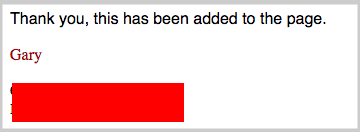
Some aren't kind enough to tell you, so that leaves you to monitor links prospects that you pitched them and have added your link without saying.
You can manually check each resource pages' source codes and find your domain there.
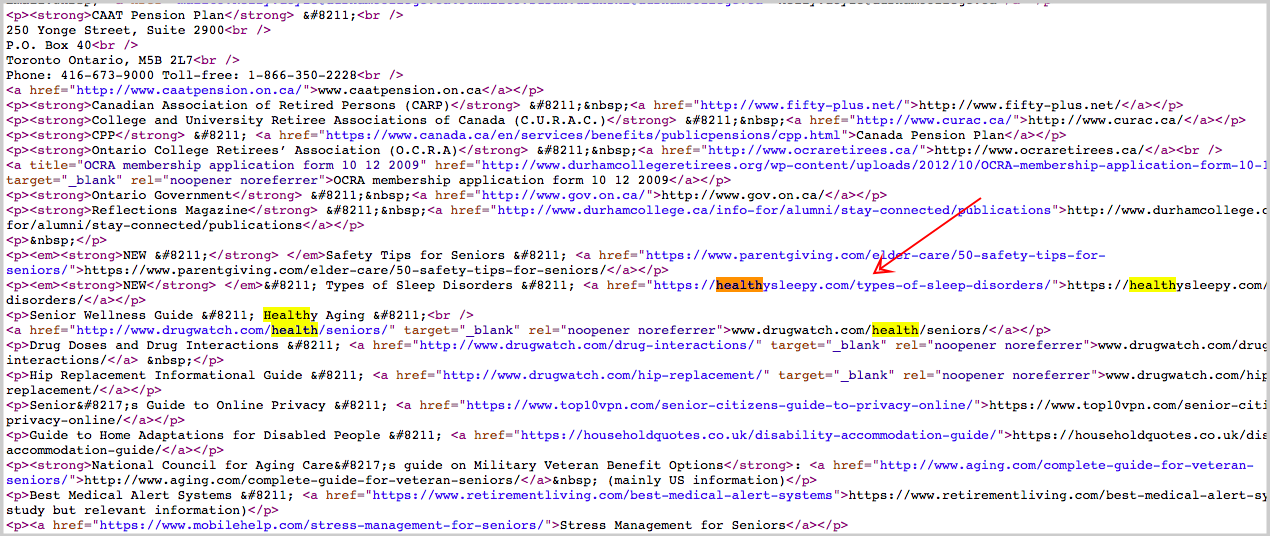
That might consume a lot of your time, so I highly suggest using Monitor Backlinks where you can upload all your links prospects and it'll ease the entire process of telling you if there is your link is active on the page.
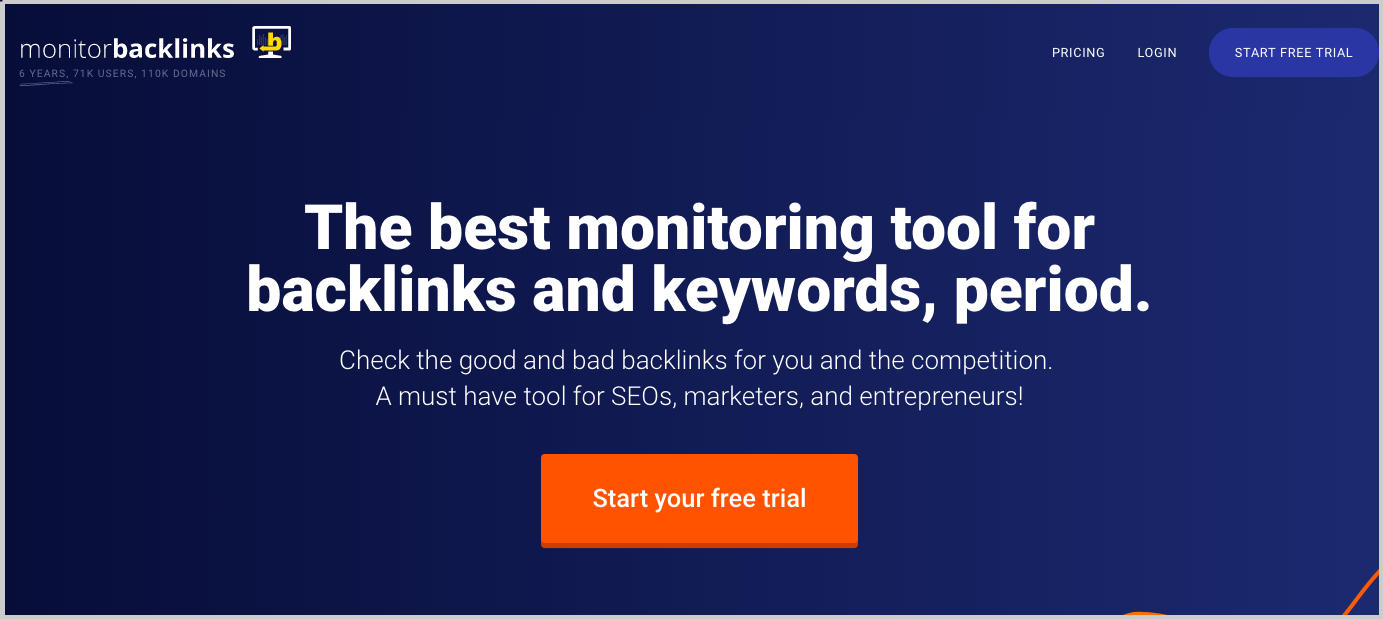
Over time, you'll see the results of your hard work. One way to monitor the link performance of your content piece is to use Ahrefs page-level section.
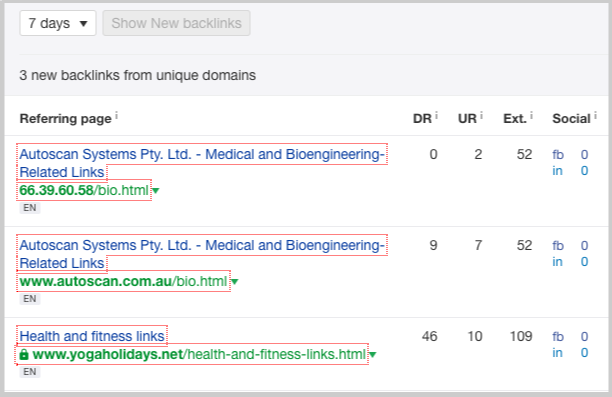
Most linkable assets designed for broken link building are supporting sections of middle and bottom-of-the-funnel pages by internally linking to them. That being said, links generated for those linkable assets can lift the authority of the overall domain one way or another.
If you've been wondering if broken link building can work for your site, or if you haven't gotten through the entire process I've shared above, you may consult us for link building analysis.
We are also looking for potential clients with whom we can work together for our link building services.
How to Use Personas to Build Multiple Backlinks to Multiple Clients (High-End Strategy for SEO Agencies)
TRANSCRIPT:
How to use personas to build multiple backlinks to multiple clients
The challenge for SEO agencies today is being able to deliver backlinks consistently to their clients, and that’s what we want to address and solve today.
How can you take one persona of a writer and use it as a way to approach industry publishers so you can easily guarantee placements on these websites and link directly to your clients.
If you find this high-end strategy interesting to you as an SEO agency founder or marketer, stay tuned. Let’s begin.
This strategy is applicable if you have clients who are not competing in their offers, whether that’s products or services, but they are in the same industry.
The main idea of this strategy is to use one persona who would be your main content contributor.
For other agencies, they want to use a fake one. But I doubt that would be a sustainable long-term strategy.
How To Use Personas To Build Multiple Backlinks To Multiple Clients
So what I want you to do is to follow these simple steps to implement this high-end SEO content strategy.
Step 1: Find a technical writer or persona
And when I say persona, it means not a fake one, but rather an authentic writer who has the experience and expertise to write technical topics for a specific vertical or market.
You could hire this person on freelancing platforms like Upwork or someone who’s really keen on writing technical topics.
Another way is to have someone in your SEO or digital team who has the technical experience to write those external content assets.
Who would be that person?
Let’s say you have a web designer in your digital agency, and you have 3 or 4 clients in the tech industry.
In very specific topics like programming and web design, your team member could create content with finesse for topics he is capable of writing.
Have that team member as your main persona to reach out to multiple publications and contribute articles for these content sites.
Step 2: Build up the credibility of your author
Your persona won’t approach any websites without building its profile first. This is very important because this will dictate the success of your outreach campaigns.
During this time when you need to create a complete profile on Linkedin and Twitter profiles. This would take some time, and that’s the reason why having someone in your team who has built a presence online has a huge advantage.
Even the ones you’ll be hiring as your persona author must have an established online profile. That is what you’ll be paying them, not just the content itself.
And when building up the content portfolio of your persona author, what you want to do is to start writing high-quality articles on your brand properties. If it is your team member, you can set up a blog for him or her to get started with publishing high-quality articles.
Your persona author could also start writing for Medium.com or niche writing blog sites like Hacker Noon for the technology sector.

The author can also sign up for specific forums or groups like Github in building up a name for himself.
It’s very important for you to set up the author’s credibility because this is your asset. The stronger the portfolio is, the huge returns you can make building real editorial links from different niche publications, for your clients in the same vertical.
After setting up the initial portfolio of the person author, the next step is to:
Step 3: Manually pitch sector publications
You can’t send the same email you used to one publication, for pitching other publications. Generic email templates for this high-end strategy won’t work.
You want to start customizing your email based on what you offer - the topics of your content. You have to know who you are writing for. Every niche publication has its own contributor guidelines, as well as certain topics they only need for their blog.
Research is the key here. You won’t just be sending an email with the hopes of getting natural placement quickly. You can use LinkedIn Sales Navigator to find common interests and things about your target editors that will help build rapport in conversations when you pitch.
And when you’re sending emails to editors of these niche publications, you have to pitch hyper-specific topics, whether it’s a new update in the industry, very actionable in form as you give tips. Be aware of what are considered highly useful topics in your space, so you can generate content ideas that will suit your target publications.
There are a lot of advantages of using this high-end strategy for SEO agencies, like you own or work for, to be able to build consistent backlinks from relevant high-quality publications.
When starting this strategy, you’ll find yourself investing a lot of money in finding, setting up, and building up the author portfolio. It takes hard work at the start, but you as go along, you’ll realize this is scalable in nature. Because you won’t just be gaining visibility through links for one client, but for multiple clients with adjacent topics.
It’s an asset that you build with high returns.
So there you go, you discovered 5 quick and easy tips to increase conversions in your outreach campaign.
Before you go, I have a special gift for you. if you’re looking for ways to build backlinks to your online store or you’re stuck as to what link building strategy to use for your website, simply go to the description of this podcast episode.
Go to either of the two resources I shared there. One resource is a blueprint that I and my team have used to scale ink building for clients and another resource for link building opportunities in the eCommerce space. Go and grab those resources so that you won’t have to worry about how to do link building for your website.
For more link building and content marketing tips, be sure to subscribe to this podcast to get notified of the latest episodes. Just click the “Follow” button. See you in our next episode.
How to Buy Links Without Paying Bloggers (Little-Known Link Building Strategy)
TRANSCRIPT:
How to buy links without paying bloggers
In this episode, you’ll discover this little-known strategy in getting backlinks by spending money.
It may sound controversial as you read this, but stay tuned as you’ll get to model this strategy and use this technique that is ethical to your business.
This is little known because there are a few brands that actually have case studies doing this.
Of course, those with published case studies are ones that I’m aware of.
But if you think about this strategy, you’re spending money.
But you’re not spending it to pay bloggers to give you outright links.
What you’re actually doing there is you spend money to get more visibility to your content.
Okay. So what is this strategy of buying backlinks without actually paying publishers?
Link Building With Ads
The paid link building strategy is using Google Ads.
If you’re a marketer, you now have an idea of how it works.
But instead of you using Google Ads to push through your landing pages.
What you instead do is promote your content assets - those pages that are informational.
In fact, using this strategy has many advantages.
First is that:
Using Google Ads requires low efforts.
Compared to manually sending emails to publishers, bloggers, and other content creators in your space, having them to see your content, and hopefully getting a response, a link, or share - if you’re fortunate.
What you’re doing here is using your other resource (not much of your time), but of your money to get more eyeballs to your content.
The second advantage is that:
You put your content in front of linkable audiences.
What does it mean?
You don’t just spend Google Ads on any keywords. You want to make sure you’re using it for keywords with the ability to earn passive or organic backlinks.
They spent $1245 on Google Ads for keywords on statistics.
And they got 13 unique referring domains, so averaging around $41.60 per link.
Not bad for a little effort strategy isn’t it.
You create the content and you get links not from a manual approach, but from a semi-automated approach of passive link building.
Another brand that is doing this heavily is Deloitte.
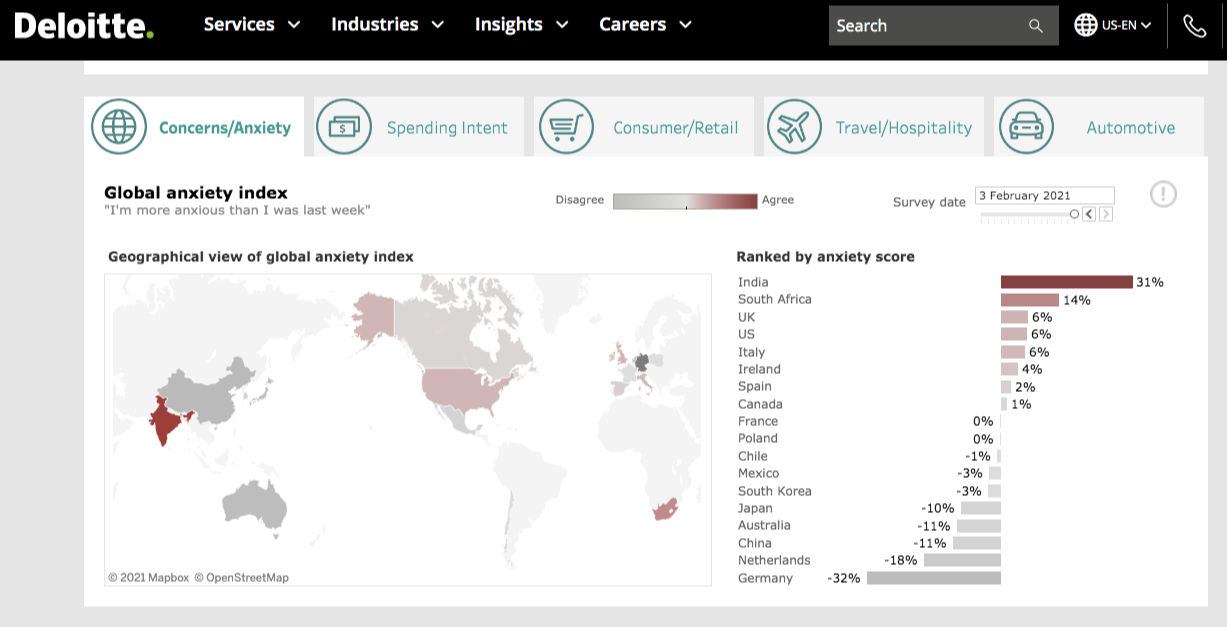
So they spend Google Ads to promote their top-of-the-funnel content.
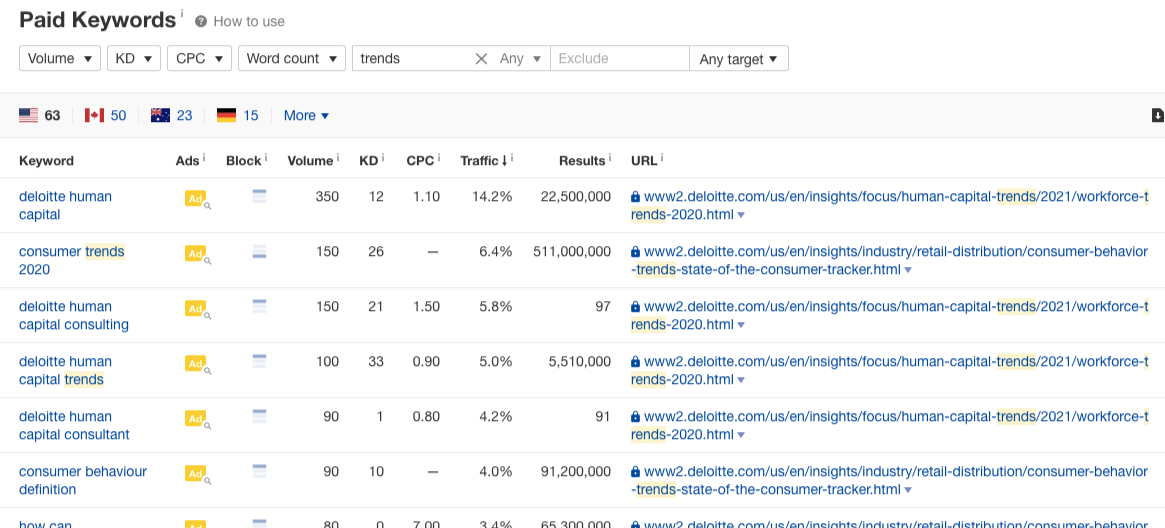
With so many publishers searching for sources on consumer trends, they can get a lot of passive links if they put their content being the first page to be visible on Google results.
So if you’re a brand that wants to leverage this little-known link building strategy, here’s a simple process you can follow.
How To Do Link Building With Google Ads
Choose keywords with content likely to earn passive links.
In this step, you use different tools. You can have Ahrefs as your tool, it has its feature of finding PPC keywords.
And in terms of topics themselves, what you want to focus on is the type of topics, which is based on a certain type of content.
And this type of content is mostly referenced and cited, meaning this content type is likely to be used as a source for more information.
So keyphrases like “reports”, “statistics”, “trends” or “forecast” and other related keyphrases where people search for -- and not just ordinary people searching for, but publishers, news writers, and high-end content creators.
Once you can create a list of keywords you can match them with content assets.
The next thing to do is:
Check ranking pages for topical keywords.
You want to make your content the best reference for the topic.
Make it easy for publishers to reference your content, either you create reports that are easy to add, or you can use embed codes to help bloggers credit you as the source of information.
Set aside a marketing budget for testing.
For enterprise brands, they are heavily invested in content promotion, so they may have been spending high expenditure to get high returns, not only for the sake of links but for branding presence and all.
But if you’re just starting out, you want to make sure to get quick wins as soon as possible.
Be wise in spending money. Because either you choose to spend it here executing this strategy or use it on other means like manual outreach and other organic promotion methods.
So there you go, you discovered this little known link building strategy - using Google Ads to get more visibility for your top-of-the-funnel content.
Before you go, I have a special gift for you. if you’re looking for ways to build backlinks to your online store or you’re stuck as to what link building strategy to use for your website, simply go to the description of this podcast episode.
Go to either of the two resources I shared there. One resource is a blueprint that I and my team have used to scale ink building for clients and another resource for link building opportunities in the eCommerce space. Go and grab those resources so that you won’t have to worry about how to do link building for your website.
For more link building and content marketing tips, be sure to subscribe to this podcast to get notified of the latest episodes. Just click the “Follow” button. See you in our next episode.
Where to Find the Right Link Builder (3 Unconventional Hiring Strategies For Link Building Roles)
TRANSCRIPT:
Where to find the right link builder
Hi, Venchito Tampon here, and today I wanna share with you 3 hiring strategies for link building roles that are unconventional -- often agencies and SEO teams don’t pretty much not aware of.
And by the end of this episode, you can choose which hiring strategy can best work for you so that you’ll be able to hire a suitable high-quality link builder for your team.
Stay tuned!
3 Unconventional Hiring Strategies For Link Building Roles
Link building is never easy compared to years ago, that is why you need to able to hire the right link builder for your team.
There are ways to do that, as you know, you can do the typical hiring of posting online jobs on different platforms.
Or if you’re going after freelance link builders, you can post job boards on freelancing websites like Upwork.
Or you may create a dedicated page just for hiring - have an announcement on your website that you’re hiring for link building roles.
Those things are good, but there are ways that you can apply to make sure you get only the quality ones.
Here are 3 unconventional hiring strategies for link building roles.
First is to:
Look for a content marketer role, instead of just a link builder
You may be thinking:
We’re talking about link builders here Venchito, yet you’re raising the idea of “content marketers”.
Yes, because tasks involved of link builders are often tasks of a content marketer.
The reality is: you’ll find applicants who would like to apply for your link building roles with past extensive experiences -- but those experiences don’t quality much. As they’ve been using so many different link building strategies, which can burn your website.
This means, that they could give you expectations of this and that, but ending up giving you irrelevant, spammy, low-quality links, which can badly hurt your website.
Whereas, a typical content marketer has content creation and promotion in mind.
Its objective isn’t a quick and shortcut way of getting the links right away, but rather have this mindset of pursuing publishers, other content creators of your clients, or of your brand.
This making sure that he or she is taking care of the brand quality, and don’t just pay the publisher for links for some quick wins of links.
A content marketer thinks of the value of content because at the end of the day, you should be providing reasons to your target prospects before they can give you backlinks.
It’s a value-driven approach to link building. So hiring a content marketer role with tasks of link building (getting links and promoting content) is a good and better strategy for some SEO and digital teams, than hiring straight link building roles.
That’s the first hiring strategy, let’s go to the second one:
Delegate link building tasks to junior SEOs
Yes, this isn’t about just hiring, but making sure you’re allocating your resources - your team effectively.
Link building tasks don’t have to be solo for just link builders. It can be done by junior SEOs in your team.
In fact, it’s a good training ground for marketers who don’t have many experiences in digital marketing.
They don’t zero experiences, meaning they’re not burned down by spammy link building tactics that can hurt your brand or your clients.
This means that you can easily train them properly for the right link building tasks.
A good way to set this up is to create systems of tasks, document systems, doesn't have to be fancy -- just making sure they can follow step by step process of a specific link building strategy.
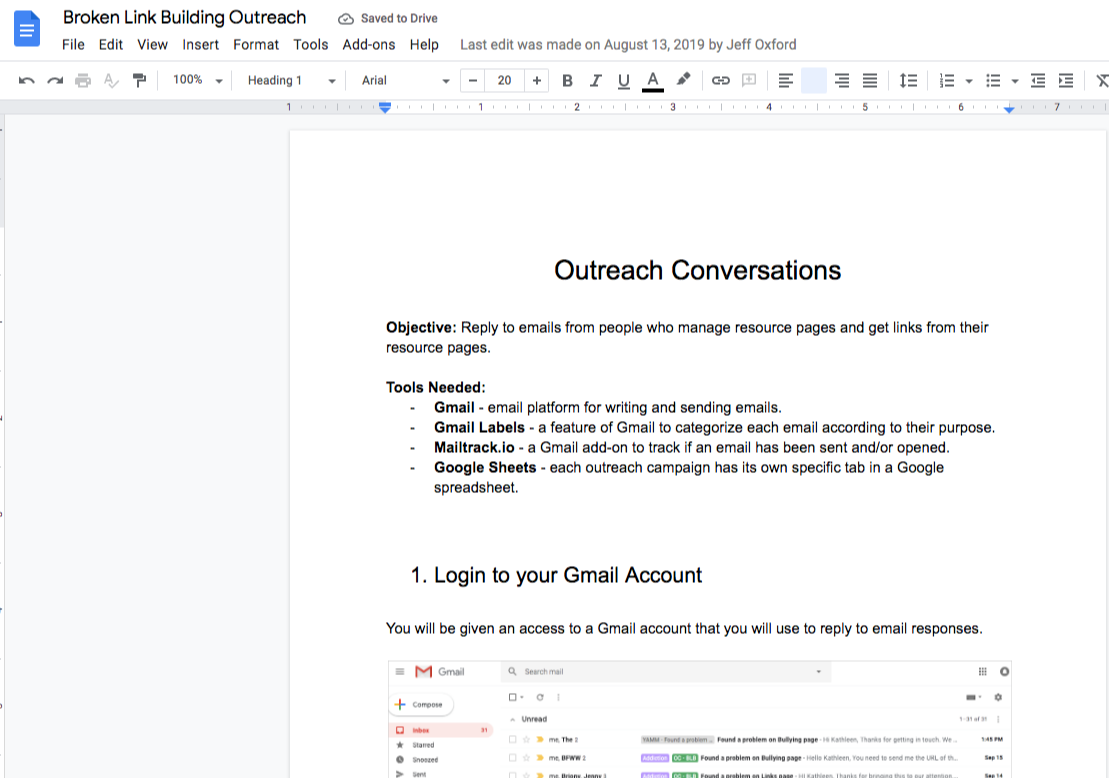
Because a process or system helps you manage those junior SEOs doing link building tasks.
If you’re an enterprise and agency, this hiring or outsourcing strategy can best work for you. You don’t have expensive amounts hiring new members for your team, you simply align what you need to your current team roles - and make it work effectively.
And for one of the important hiring strategies for today is:
The best hiring strategy is still referrals.
The third hiring strategy:
Ask within your networks
If you’re looking for a quality link builder, don’t expect answers from what you see online. Ask for people you trust the most in the SEO industry.
That’s the reason why it’s very important to be involved in the networking opportunities happening within the SEO world.
As you begin to expand your network, you can ask people in your circles if they know someone who’s into link building, either looking for a team to join (in-house) or a freelance link builder working with clients.
The good thing with this strategy is the trust that you can expect. There’s no guarantee, of course, but you can expect quality applicants for referrals.
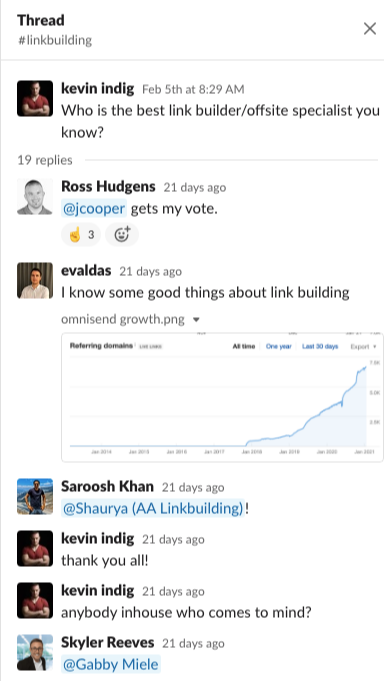 So there you go, I shared with you 3 unconventional hiring strategies for link building roles.
So there you go, I shared with you 3 unconventional hiring strategies for link building roles.
Before you go, I have a special gift for you. if you’re looking for ways to build backlinks to your online store or you’re stuck as to what link building strategy to use for your website, simply go to the description of this podcast episode.
Go to either of the two resources I shared there. One resource is a blueprint that I and my team have used to scale ink building for clients and another resource for link building opportunities in the eCommerce space. Go and grab those resources so that you won’t have to worry about how to do link building for your website.
For more link building and content marketing tips, be sure to subscribe to this podcast to get notified of the latest episodes. Just click the “Follow” button. See you in our next episode.
How to Get 100+ Passive Links Using This Simple Content Strategy That Works
TRANSCRIPT:
How to get 100+ passive links using this simple content strategy that works
In this episode, I’ll show you how to generate natural links to your website by using this little-known strategy.
Stay tuned, because, in the end, you’ll get to model this strategy as an addition to what you are doing right now to build more inbound links.
If you’ve been creating content for a long time, you know that what makes a successful content marketing campaign happens on the back-end.
That includes your planning strategy.
So if you can plan and execute a content strategy that works effectively already, you’ll have good chances of earning your first few links if you’re doing it for the first time.
This can also serve as an addition to your current content strategy. And you don’t have to change what’s working right now for you. But you can test this go-to strategy so you can generate more high-quality links every month to your website.
This strategy is what I call the “Bookworm Strategy”.
Bookworm Strategy
The strategy is simple.
Like any bookworm, they want to read multiple books, probably from different topics, but most of which, have a set of interests they only focus on.
The idea of this Bookworm Strategy is when people go to your website, they’ll encounter an existing page that covers almost everything they need on a particular topic.
If they’re looking for definitions and terms, they have it on the content asset you just created. Like a library, like an Encarta, where they’ll get to find information from your end.
Do you know anyone who doesn’t have any idea of what a technical term is? A jargon maybe.
You’ll probably find them searching for “what is fill in the blank”. They always have this modifier, “what is” or “definition of”.
The Bookworm Strategy helps you establish your authority and trust in the industry. Given that you’re providing people with information that they need, particularly for your target audience who don’t have much idea with the definition of terms, you are giving them an avenue to know about the industry, as well as to know about your brand -- as you’re one providing these content.
To start with, you have to go first for any keyword research tools that would give you a certain topic to focus on.
One keyword research tool that you can use is Ahrefs. It has these two features: Content Explorer and Keyword Explorer -- which are both effective tools to give you opportunities for topics to target with your content.
Different industries have different technical topics. You’ll have to find one that you feel confident you can give correct, and vital information to your readers.
Curate "what is" keywords (terms and definitions)
You want to be looking for any “what is” keywords with enough search volume.
It is best to compile them in a list (or in a spreadsheet).
Answer ‘what is’ terms with the best of its definition, some of the industry jargon may include coined terms (which can you define yourself).
By working on the list, you get to see that it’s pretty long-form content as there are so many “what is” keywords related to topics in your industry.
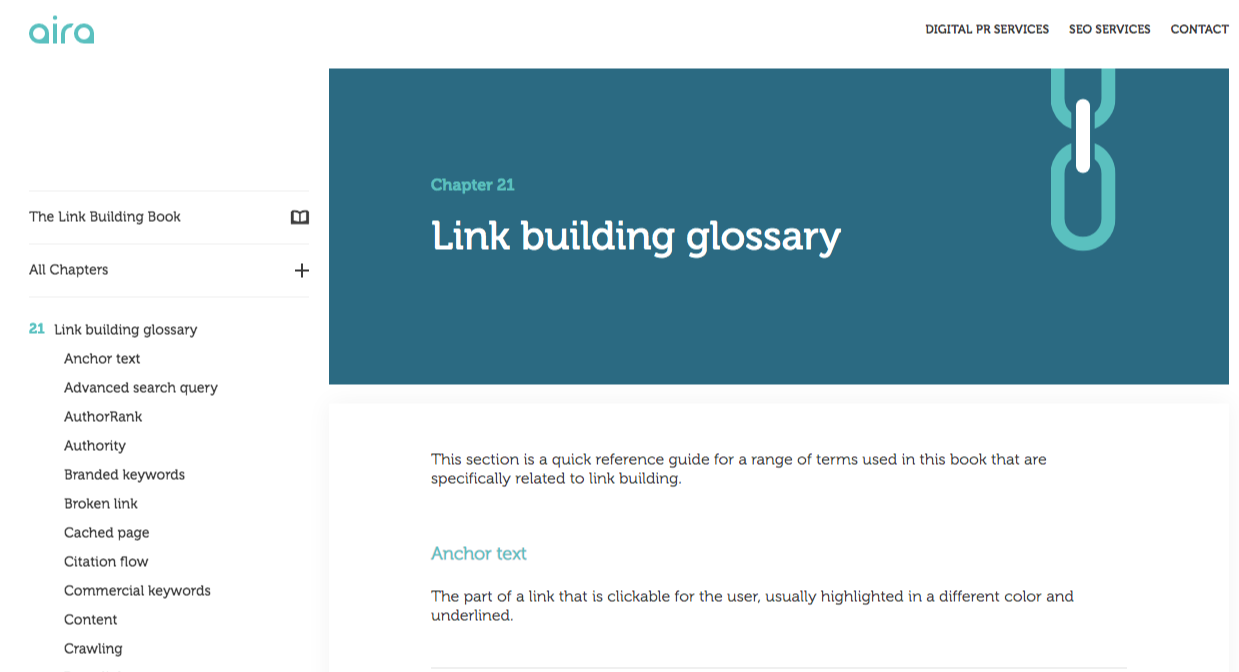
If you’re looking for some content strategy for big assets, this one is for you.
The key is to build as much of this one in many of your multiple properties or websites and get it ranking through promotion.
So next is, how would you promote this type of content?
Once you’ve published the content, you want to get immediate initial traction to it.
So how would you do that?
Invest in manual outreach to build initial traction
You start by looking for content creators and bloggers who’ve linked to related content already.
Go and search for any page ranking for each term “what is”. Then find using any backlink explorer tools like Ahrefs to find people who’ve linked to those types of content.
This would entail a lot of effort when trying to come up with a list of people to reach out to for content promotion.
Because you want to go after people who’ve already some interest with a “Bookworm content”.
Publishers, bloggers, content creators -- people who are likely to reference your content on their existing articles or future articles.
The main reason they would link to you is that instead of them, defining the term or explaining it in a more detailed way, they would just get a quote from your bookworm content, then credit with a link to your page.
Spend many efforts building the initial backlinks to your bookworm content - you need more visibility to the page, as it gets new traction from other publishers in your space.
Use this simple content strategy that works.
Go and find “what is” keywords and terms that can be defined. Curate them on a page, publish it as your glossary or “bookworm content”.
Invest in manual outreach to build a few outreach links to get the page running for attraction.
That’s it!
This could be one of your top linkable assets that can help drive hundreds of passive links if you find keywords with good search volume and massively promote them to its target audience.
So there you go, you discovered a simple content strategy that can help get you 100+ passive links to your website.
Before you go, I have a special gift for you. if you’re looking for ways to build backlinks to your online store or you’re stuck as to what link building strategy to use for your website, simply go to the description of this podcast episode.
Go to either of the two resources I shared there. One resource is a blueprint that I and my team have used to scale ink building for clients and another resource for link building opportunities in the eCommerce space. Go and grab those resources so that you won’t have to worry about how to do link building for your website.
For more link building and content marketing tips, be sure to subscribe to this podcast to get notified of the latest episodes. Just click the “Follow” button. See you in our next episode.
How to Apply This One Psychology Trigger to 10x Your Content Marketing Results
TRANSCRIPT:
How to apply this one psychology trigger to 10x your content marketing results
In this episode, I’ll show you how to get more massive results in content marketing by applying this psychological factor.
Stay tuned, because, in the end, you get to apply psychology in different ways, whether you’re creating content, or promoting it to publishers.
In social psychology, reciprocity is a social norm of responding to a positive action with another positive action, rewarding kind actions.
Because you give value, you can get value in return. Though not necessarily you have to expect this to happen all the time, it’s human nature to return the favor.
Reciprocity is commonly used in marketing and has its term as co-marketing, which is basically using techniques in which two brands or businesses promote each other’s products or content, gaining a mutual benefit.
How to Apply Reciprocity to 10x Your Content Marketing Results
So how can this be applied to your existing content marketing efforts? Let me give you some actionable tips in this episode.
Reference other people’s content you want to associate your brand with
The key to getting more natural backlinks to your website is not tied straight to the actual promotion of your content, but rather on the back end when you’re still planning to write the content.
As you plan and research for content ideas, you’ll come across publications and blogs you can source out content for references. This is when you should be planning out how to incorporate these references to your content, in such a way that you leverage reciprocating linking to them, with future hopes to connect to them and later on, land some backlinking opportunities.
You ask yourself and your team this question, what brands I am trying to associate myself with or my organization I’m working with?
It could be “brands”, it could be thought leaders in your space, it could be publishers and technical experts.
The thing is, when you identify them, it’s easy for you to create content naturally referencing these people and entities.
After publishing content, it is best to tell them that you mentioned them in your posts.
And by referencing other entities or publishers, there are three options you can do:
Reference it on your own works - on your blog.
Or cite their content on your external content - like your regular contribution to industry publications.
Or do both of these two.
What you’re trying to do here is you’re giving more value to them, essentially if they’re really giving value to your readers, as they have in-depth information on their content assets.
A quick way to tell them you mentioned them is simply just tagged them on your social media posts once you promote your content. It is an easy notification.
Another way to reciprocate other people and increase your content marketing results is to:
Include quotes from micro-influencers in your content
Micro-influencers don’t have much following compared to established authors and personalities in your space, but if you’re working with a lot of them, there are a lot more reach and visibility you can gain in terms of content promotion.
These micro-influencers are easy to work with - more receptive than high-authority publishers, so you can expect quick responses from them.
And if you’re already an established brand, an enterprise let’s say, you’ll have an advantage over them, and can offer a lot more buy-in from a branding perspective, who doesn’t want to be featured in an enterprise blog?
One note to make here is to consider the relevance of the niche of these micro-influencers before pitching emails to them, as you don’t want to go too broad or too thin with your relevance targeting.
And one of the important pieces of applying this reciprocity trigger to your content marketing campaign.
Collaborate with non-competing similar-sized brands for big content assets
The way to increase the effectiveness of your content marketing campaigns is to ensure you sustain credibility by offering up-to-date relevant information to your readers.
The way to do that is to get insights from other brands on topics you can collaborate with.
Of course, it’s understandable that you won’t go reaching out to competing brands, but rather with non-competing brands of similar sizes as yours.
It’s a win-win situation. You get potential customers from their end - their established following. They also get yours.
One technique I’ve recently seen is how Ahrefs create their big assets. Tim Soulo of Ahrefs, from last month, scheduled a call to discuss some updates in link building. The organization he is working for, Ahrefs is a SaAs marketing tool, I own an agency - in other words, we’re not direct competitors. But we do have tangent customers.
He recently updated their big content asset, “Beginners Guide to Link Building’, with some latest insights from practitioners in the SEO industry, including me, Alex Tachalova of Digital Olympus, James Norquay of Prosperity Media, and other prominent marketers.
It’s a reciprocity principle applied. Given I’m included in the big content asset, I’ll heavily promote it on my social profiles, plus share it to my networks whenever they need references on link building.
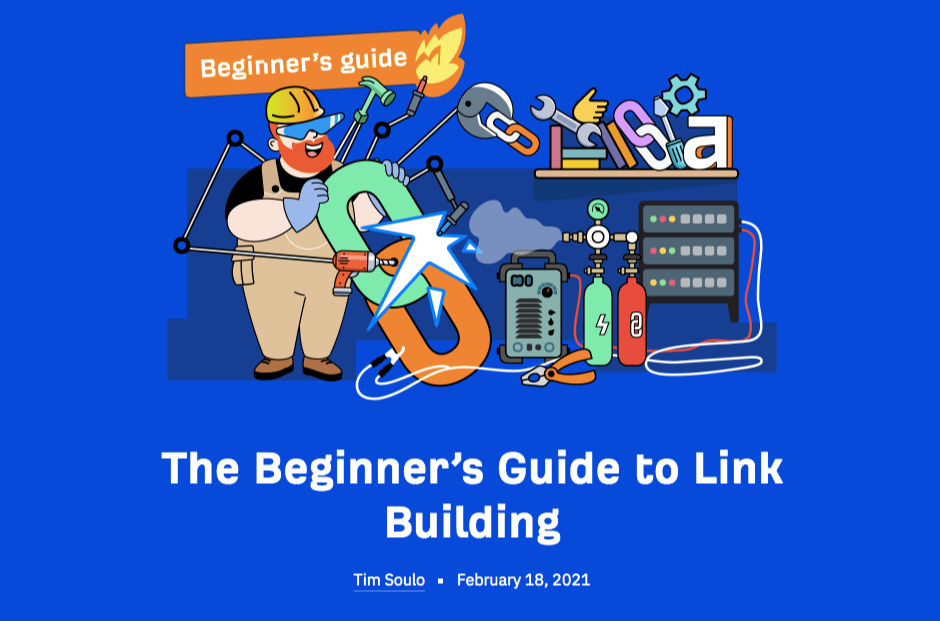
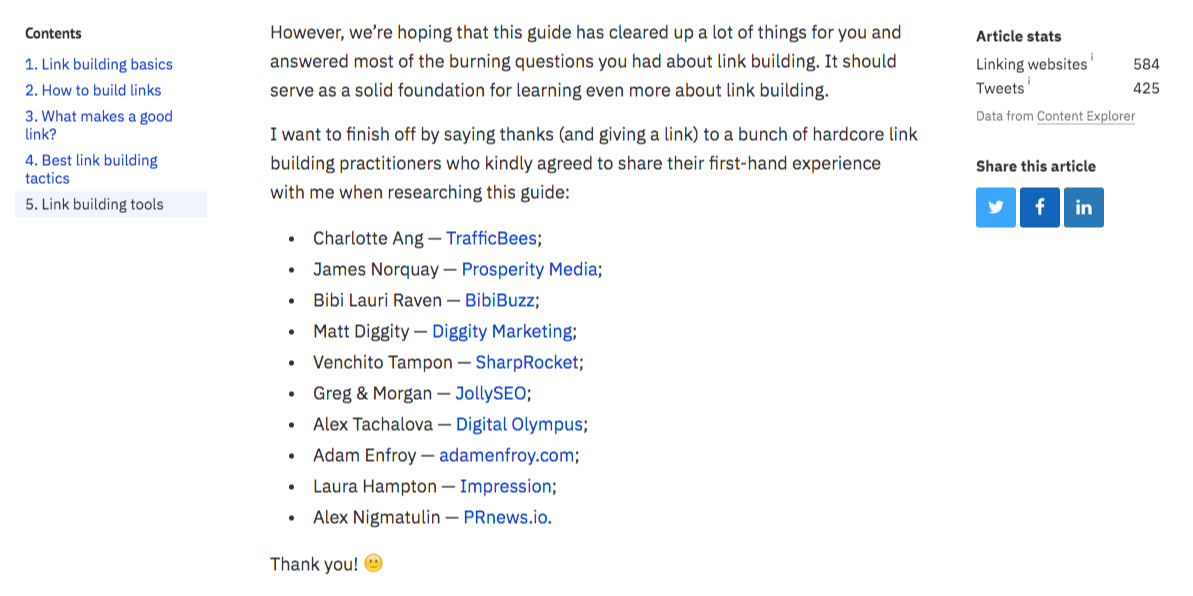
So there you go, you discovered 3 ways to apply reciprocity to 10x your content marketing results.
Before you go, I have a special gift for you. if you’re looking for ways to build backlinks to your online store or you’re stuck as to what link building strategy to use for your website, simply go to the description of this podcast episode.
Go to either of the two resources I shared there. One resource is a blueprint that I and my team have used to scale ink building for clients and another resource for link building opportunities in the eCommerce space. Go and grab those resources so that you won’t have to worry about how to do link building for your website.
For more link building and content marketing tips, be sure to subscribe to this podcast to get notified of the latest episodes. Just click the “Follow” button. See you in our next episode.
